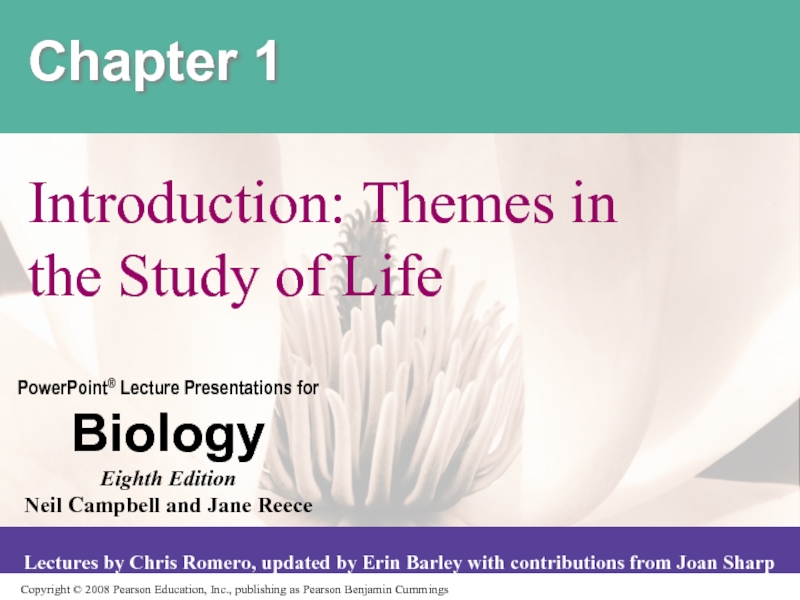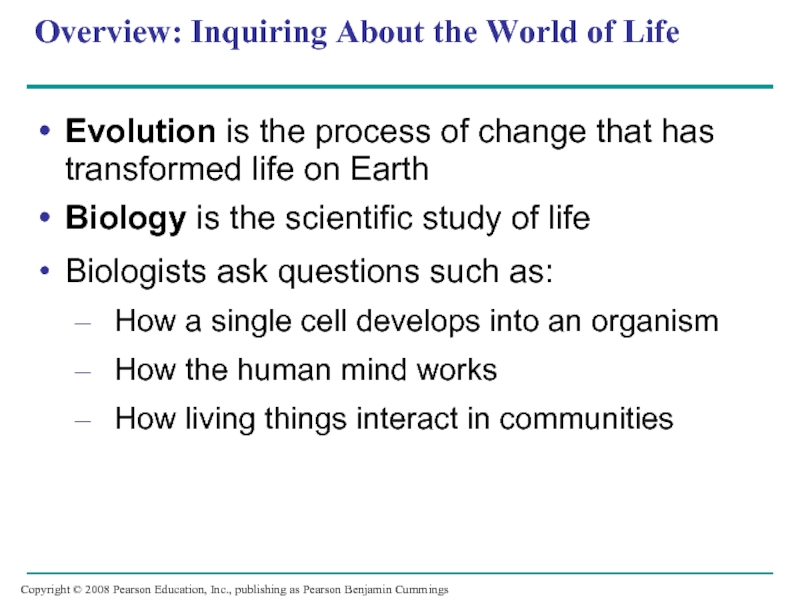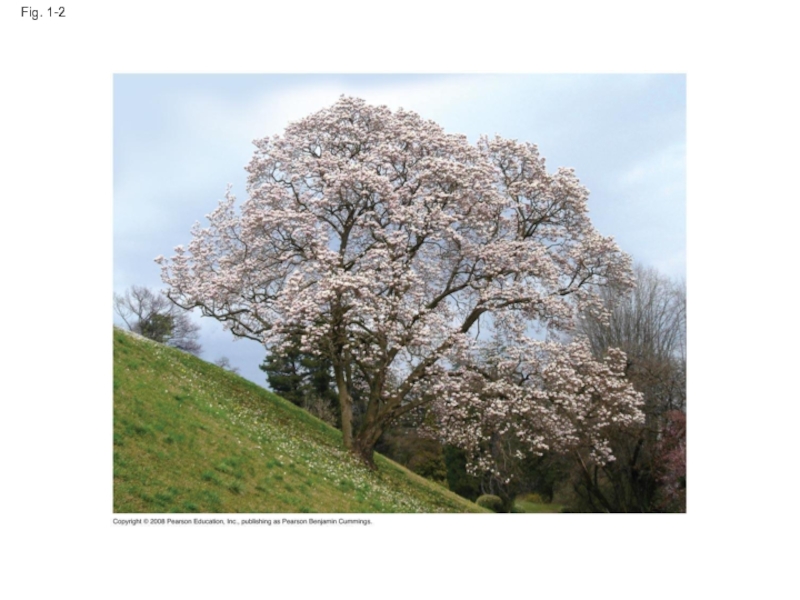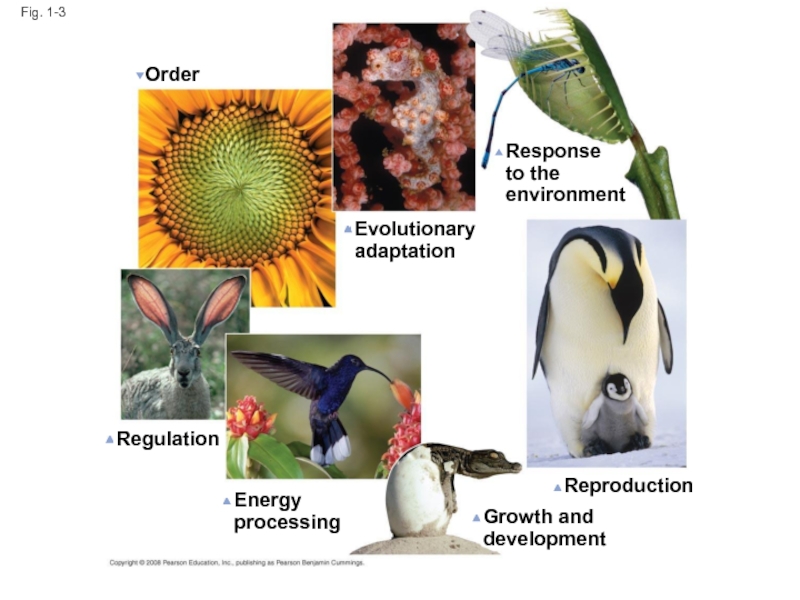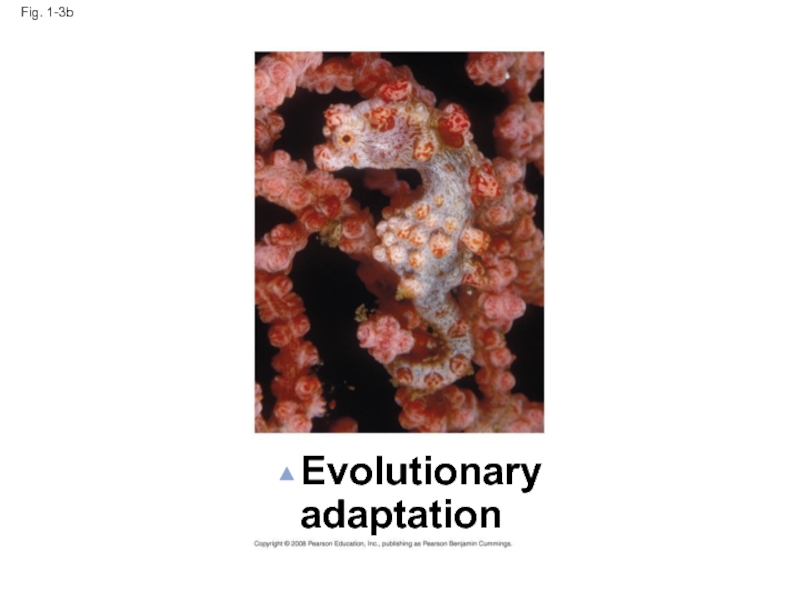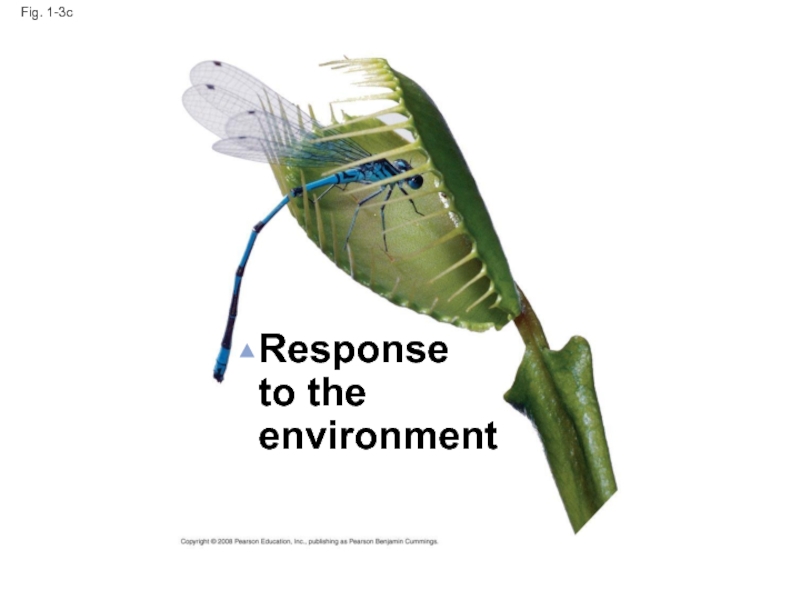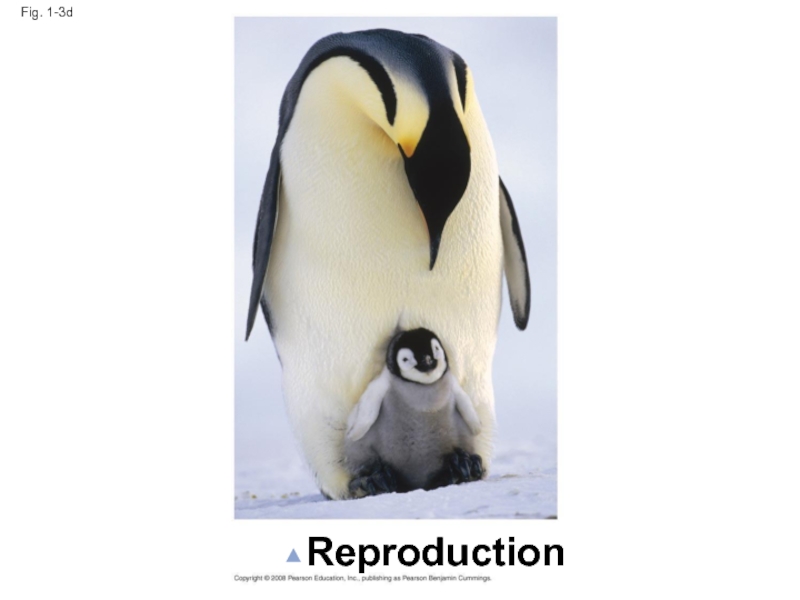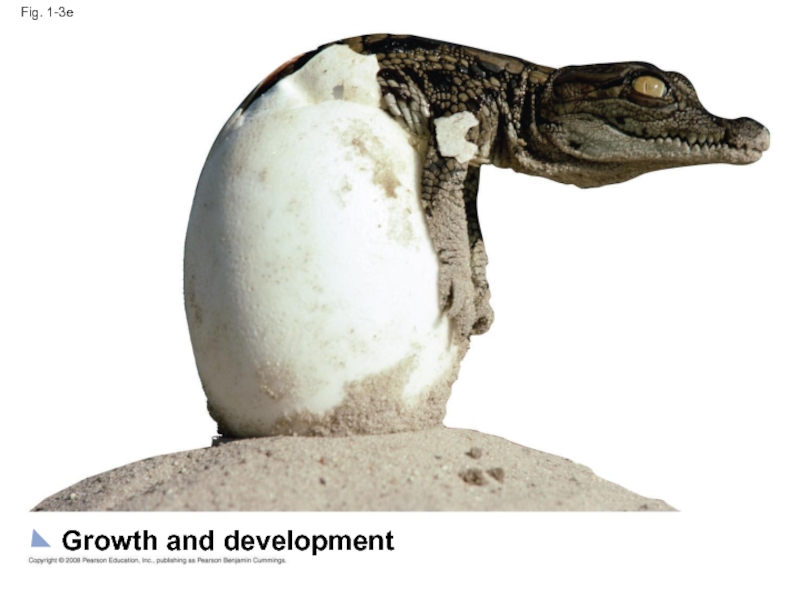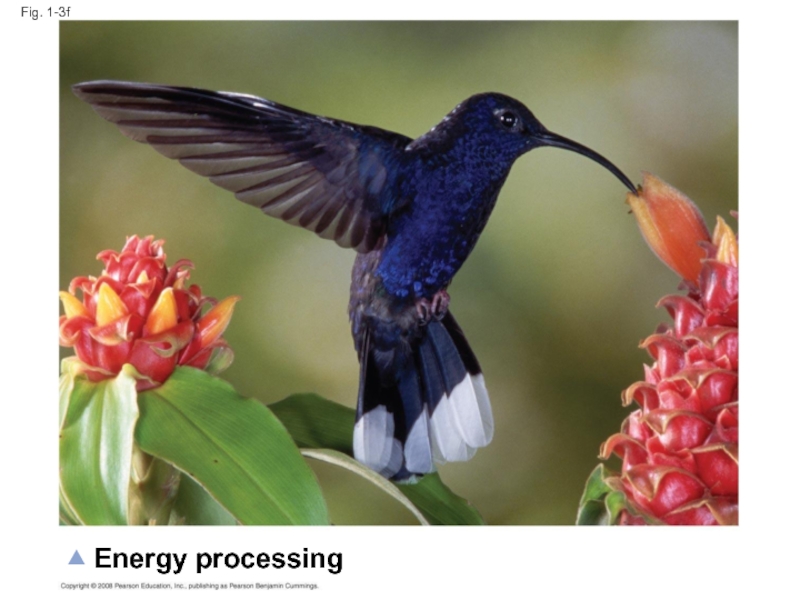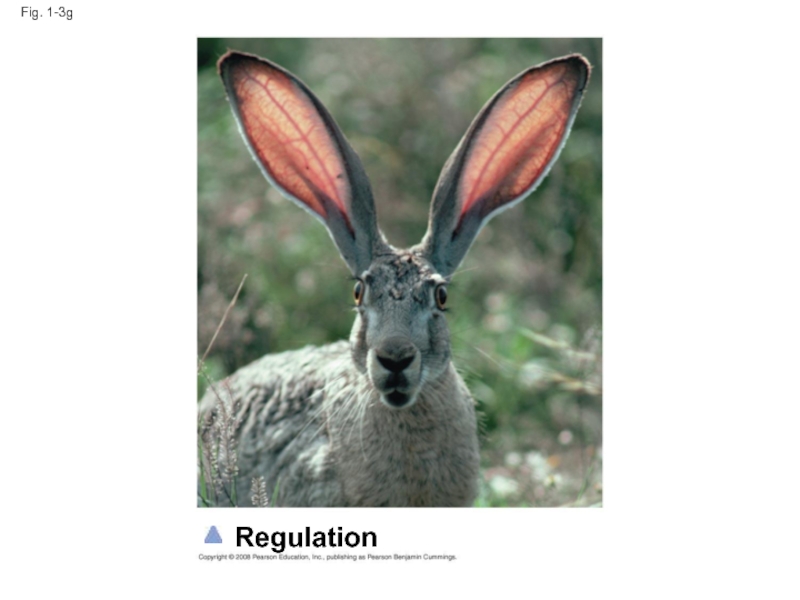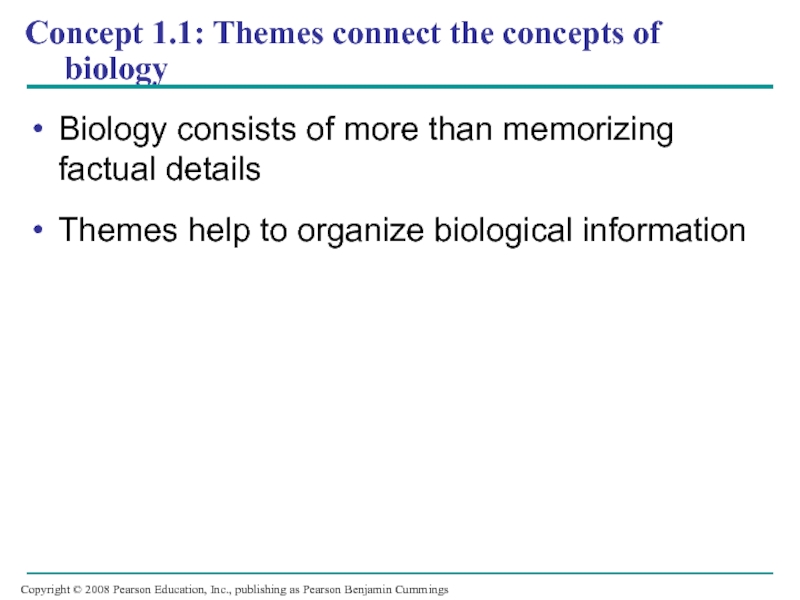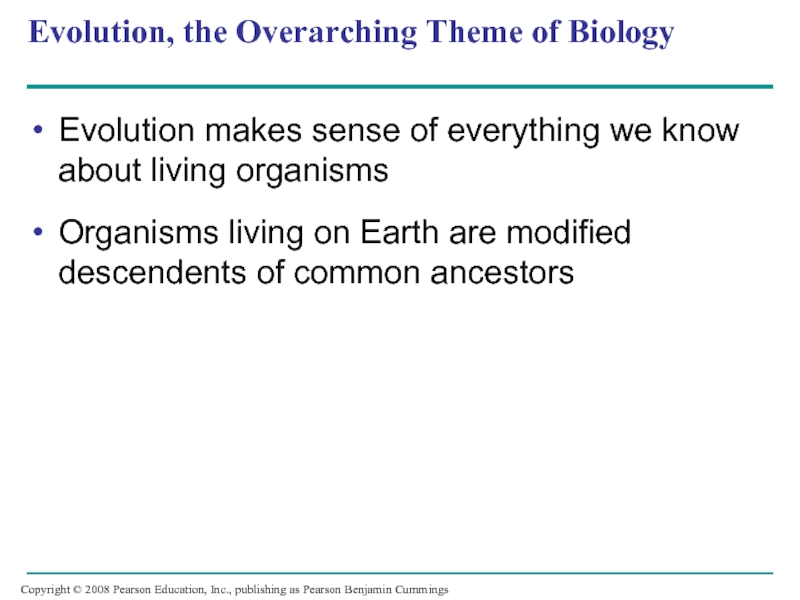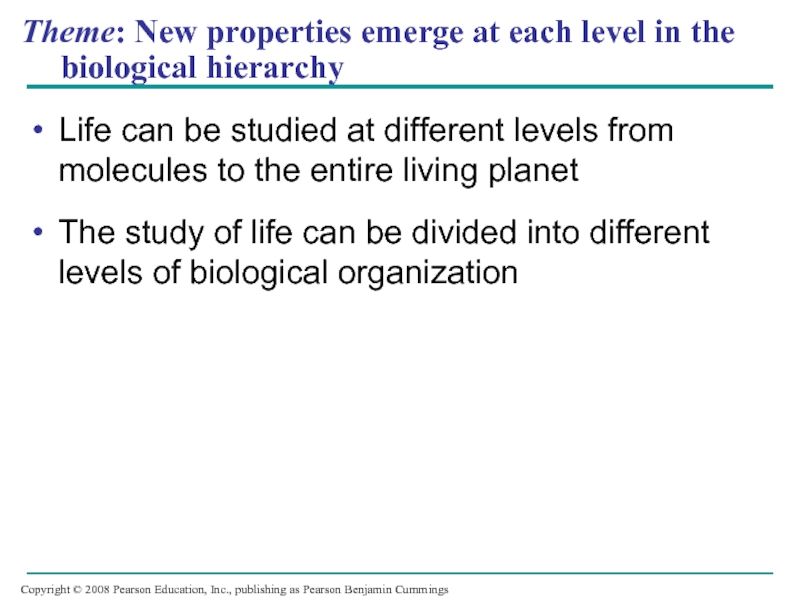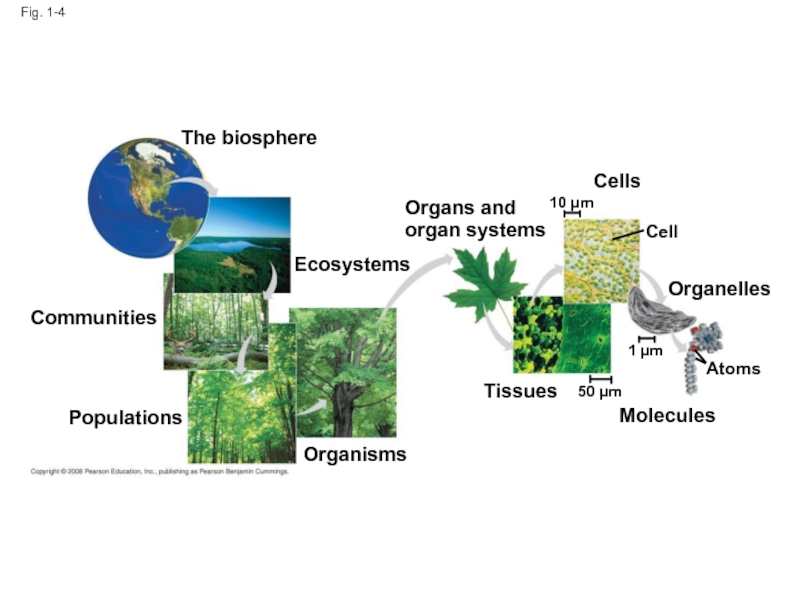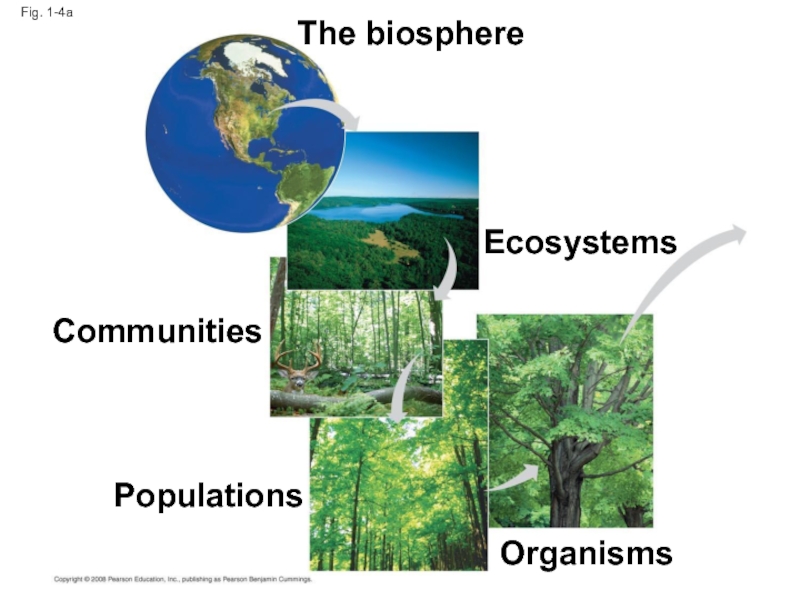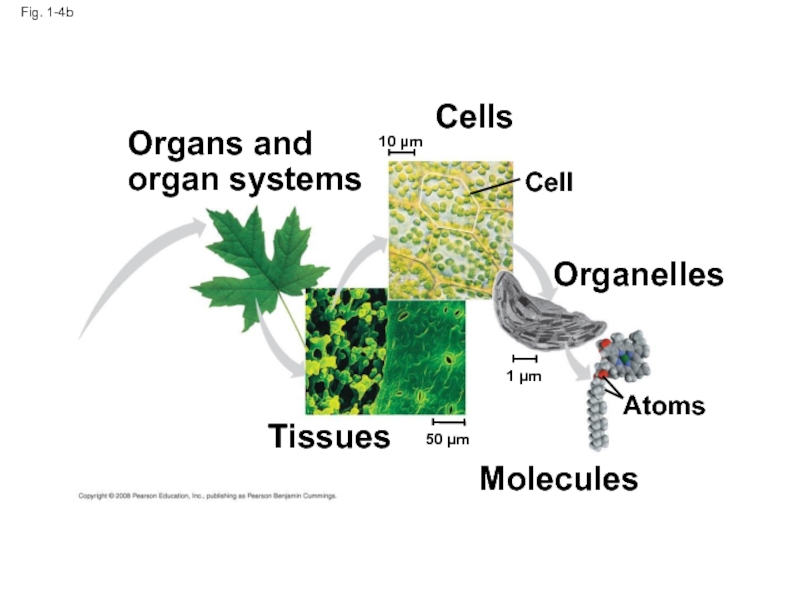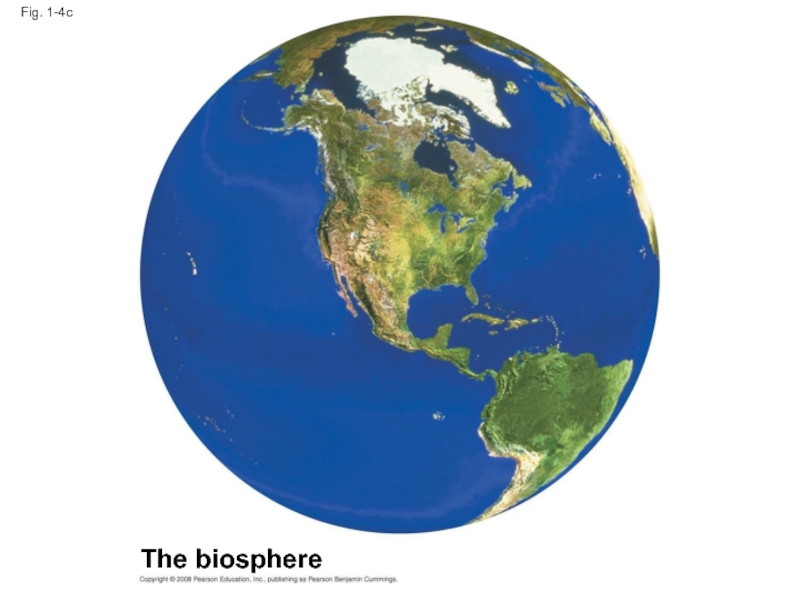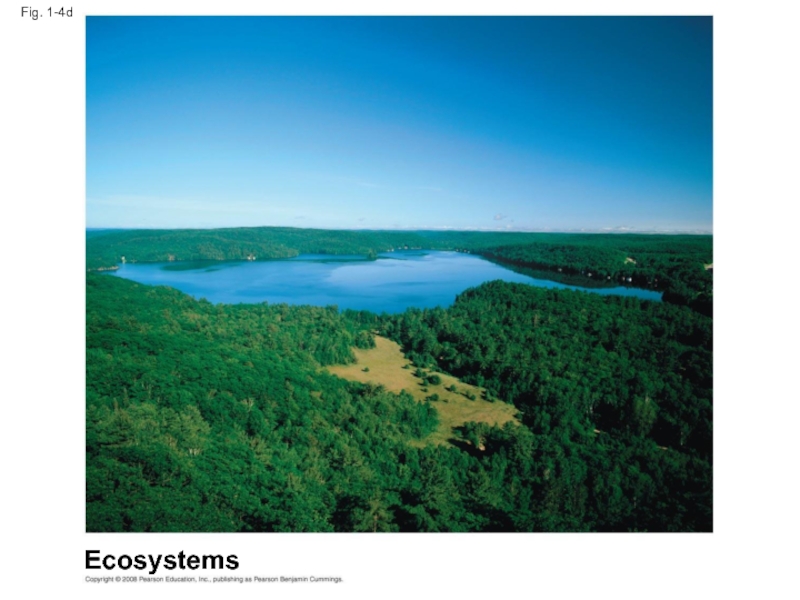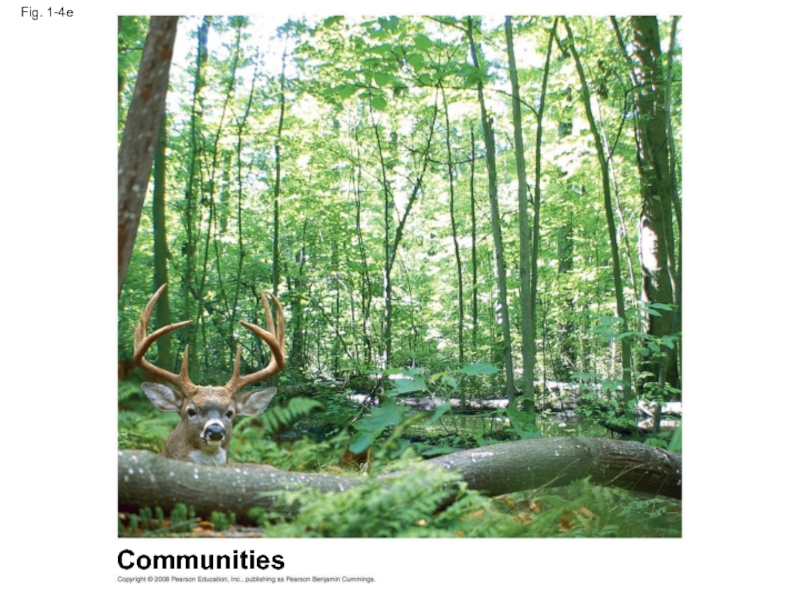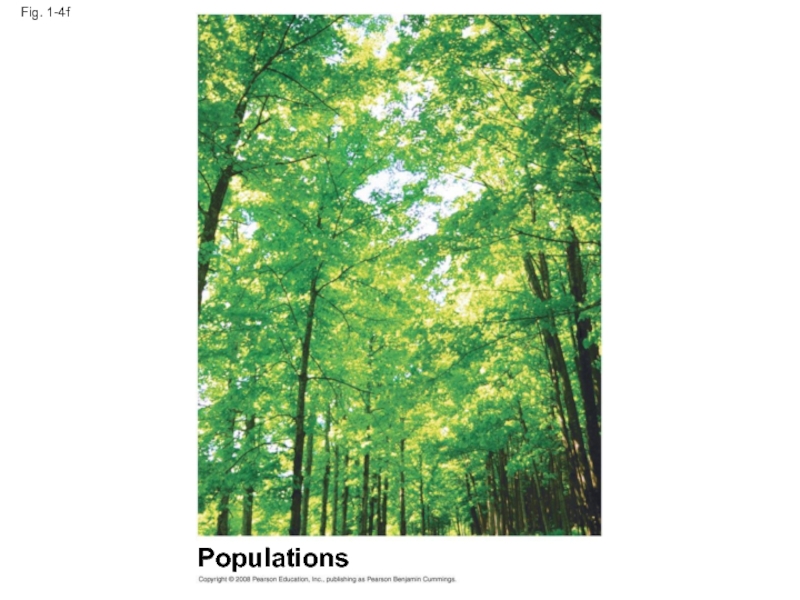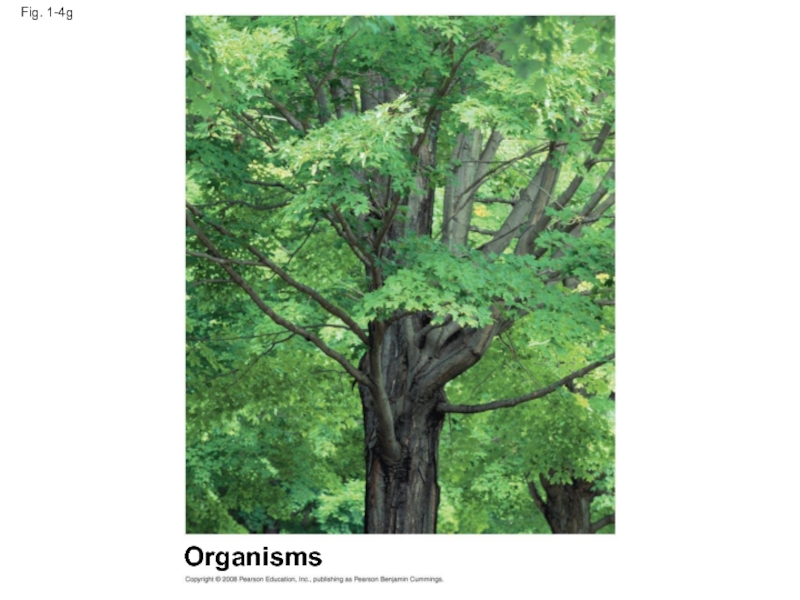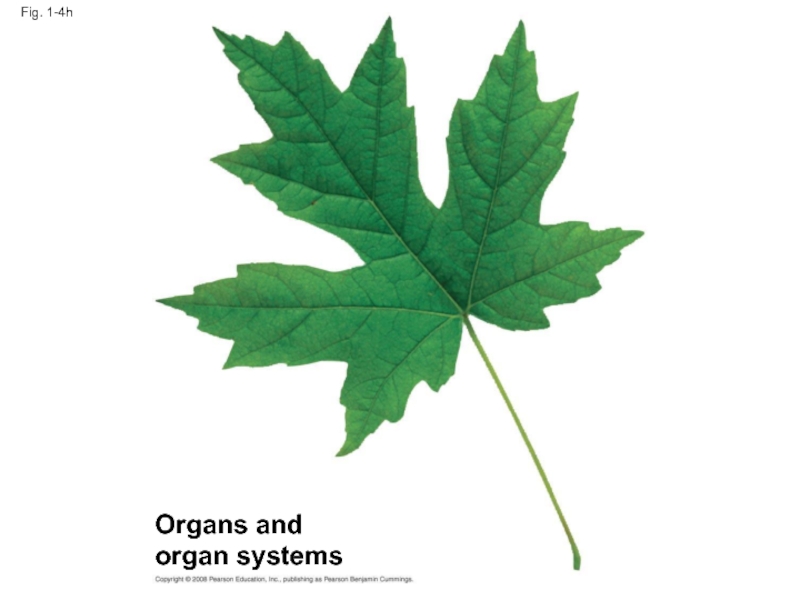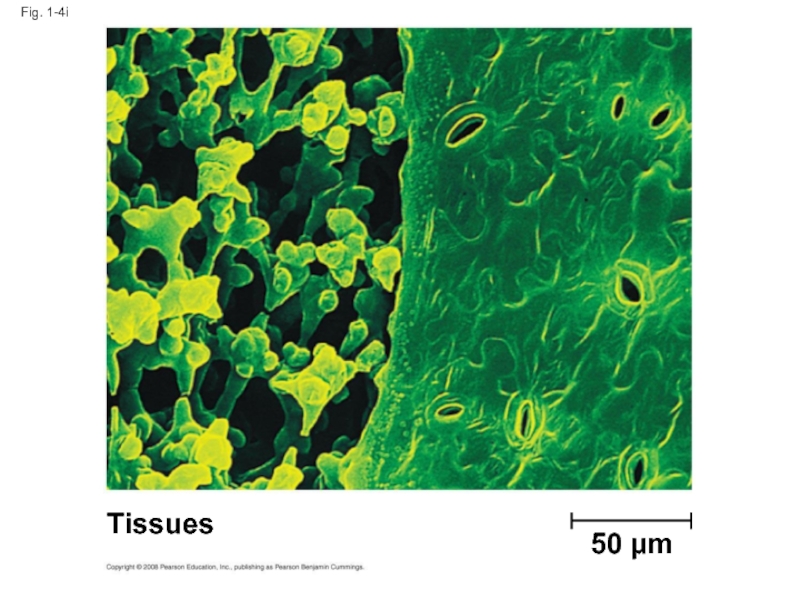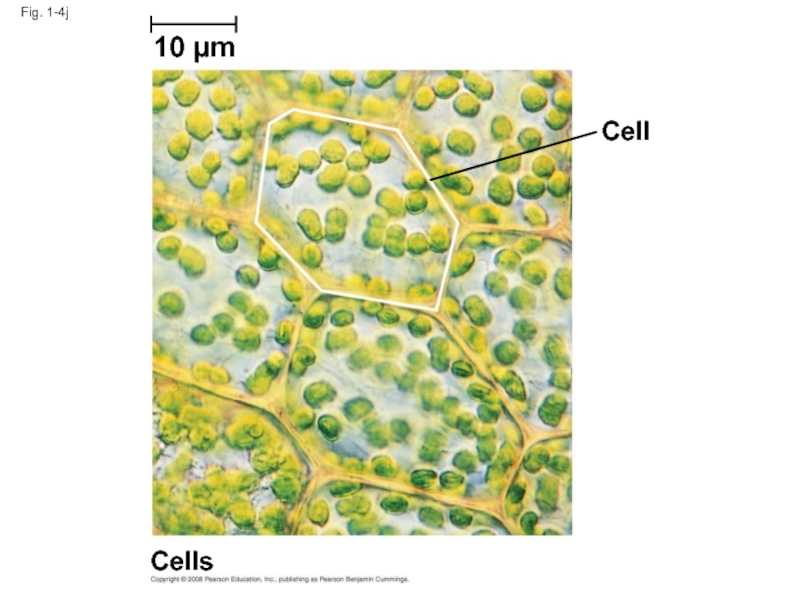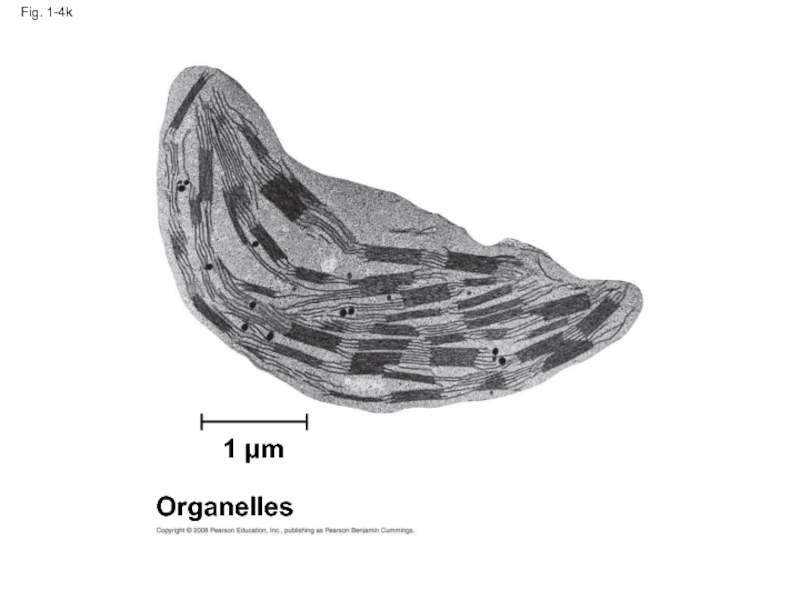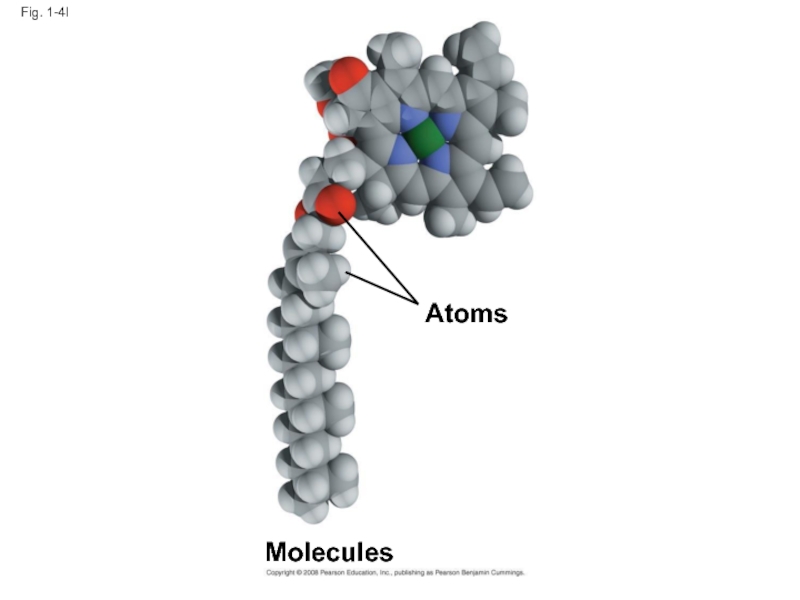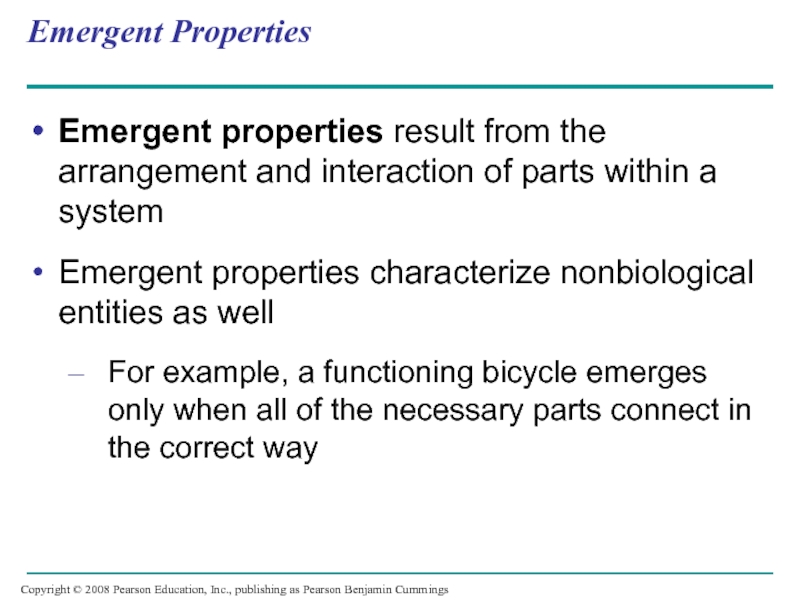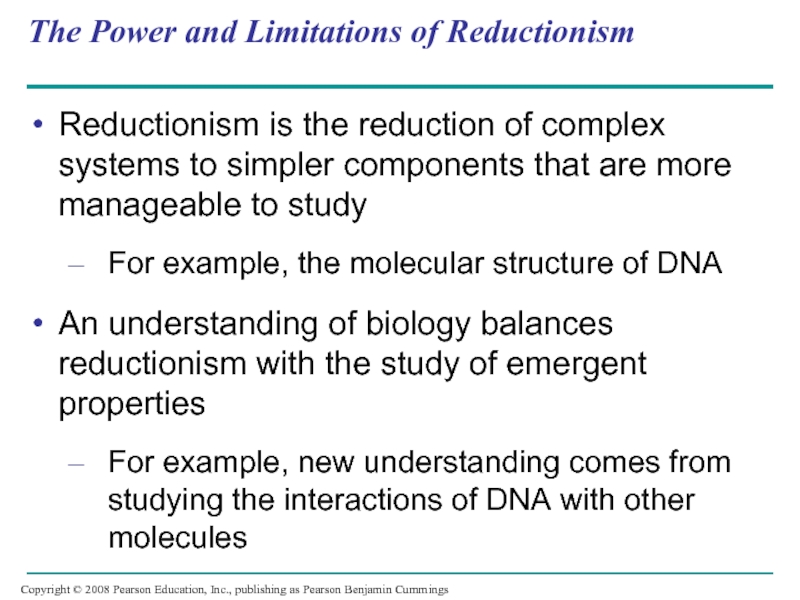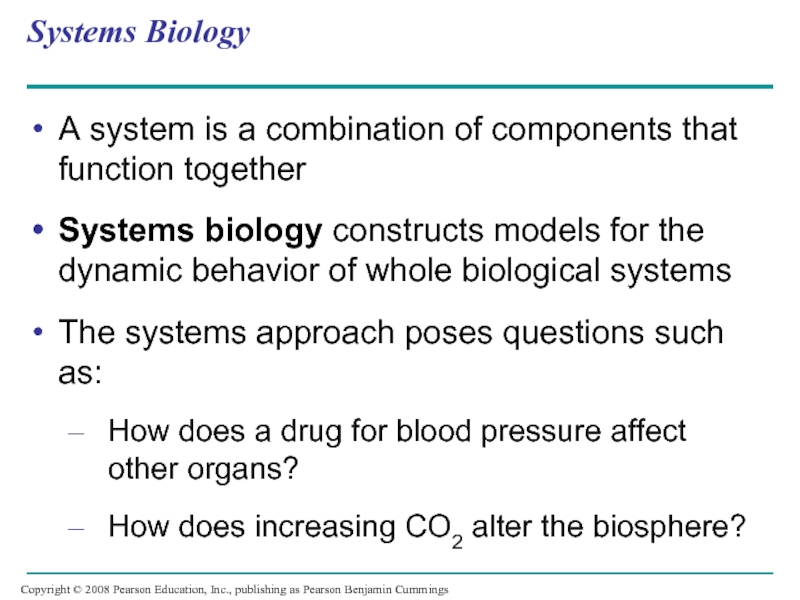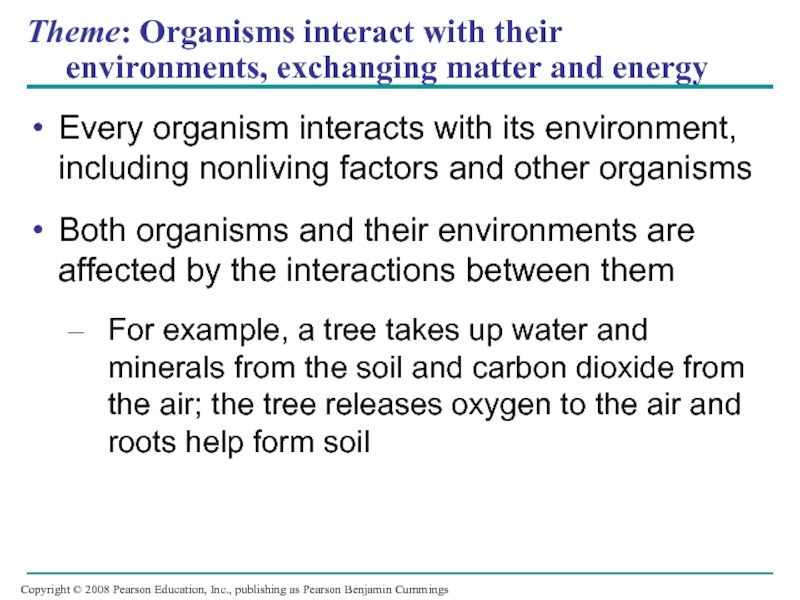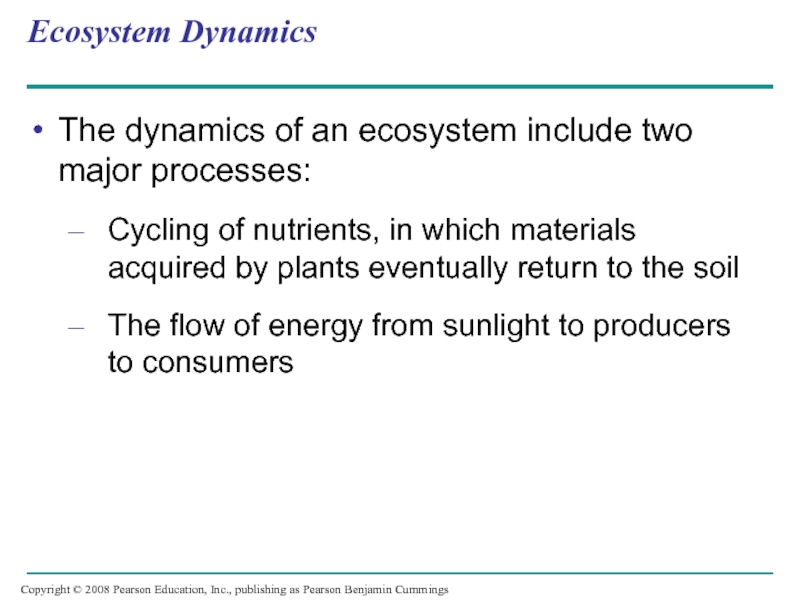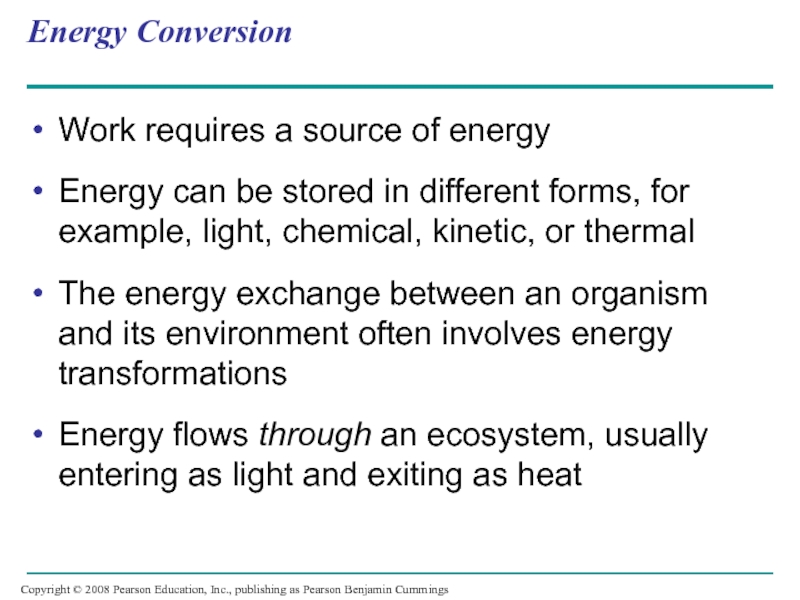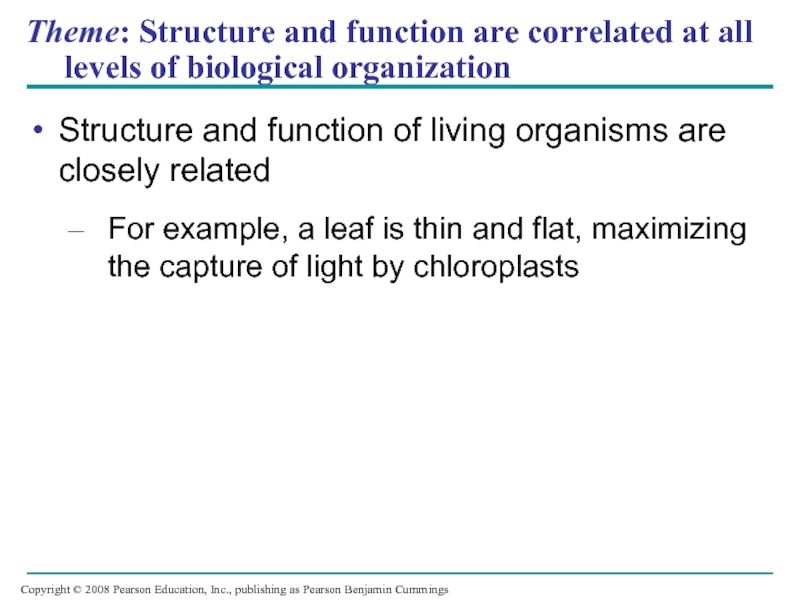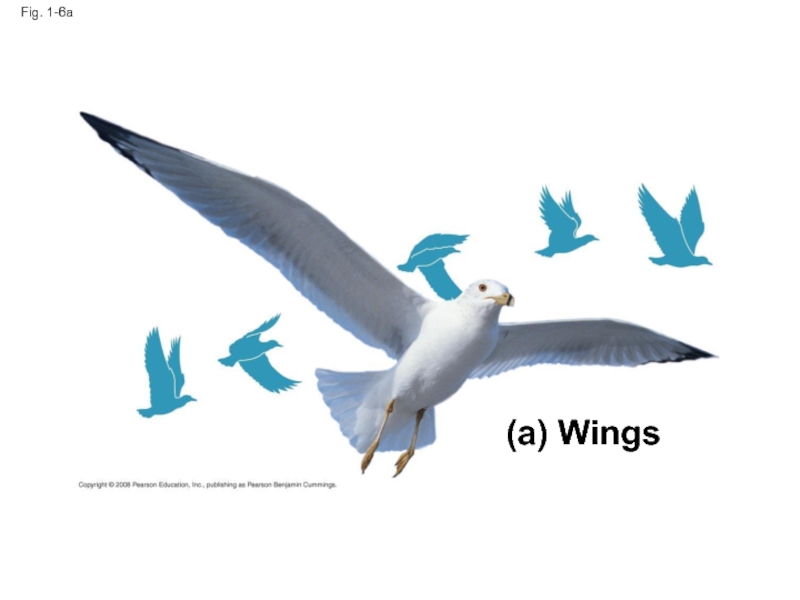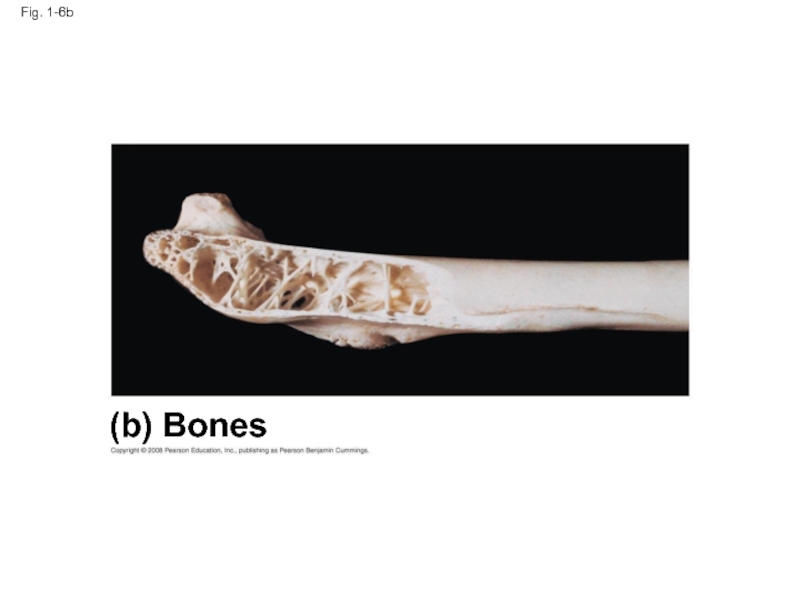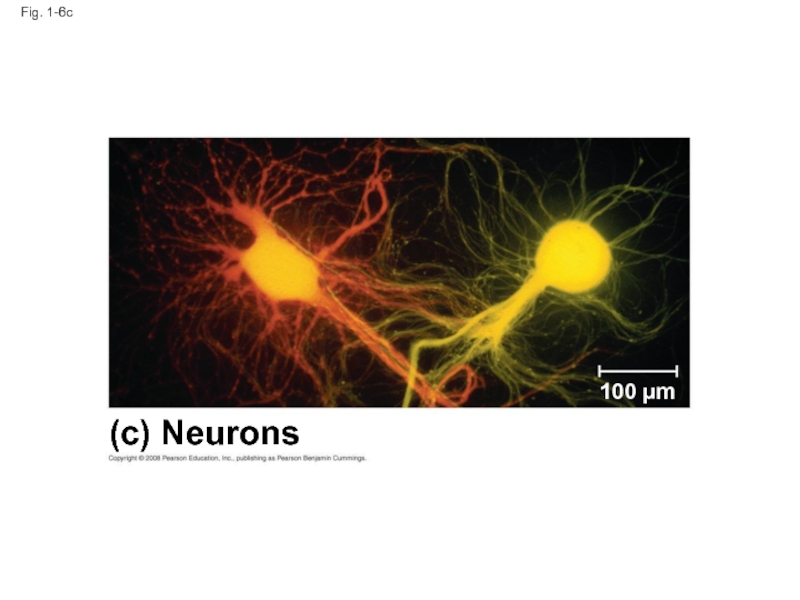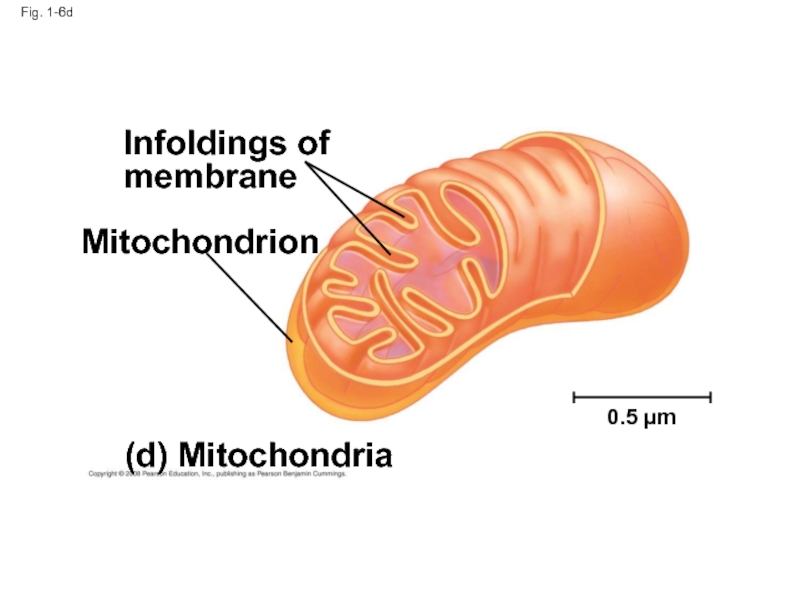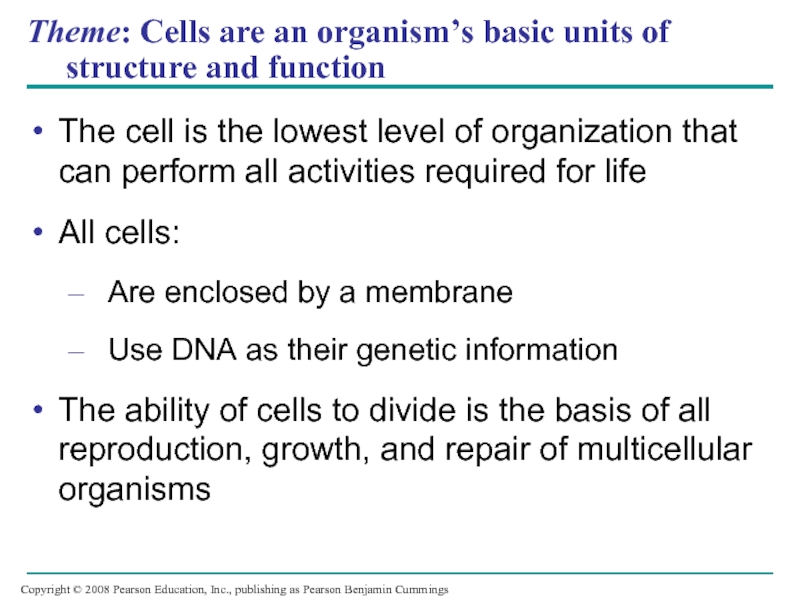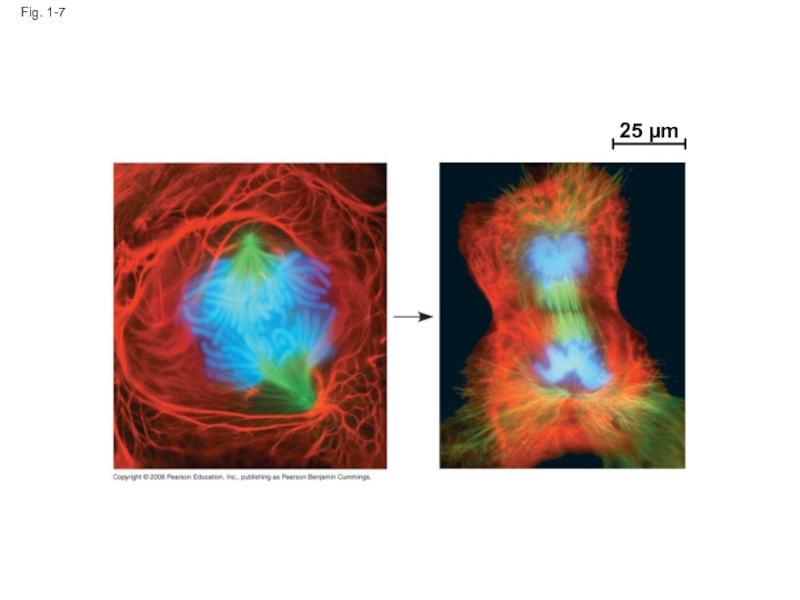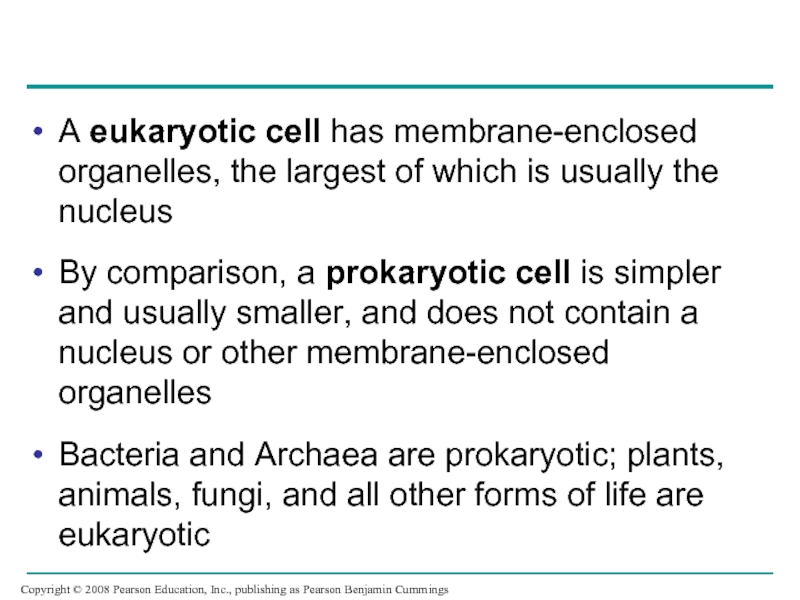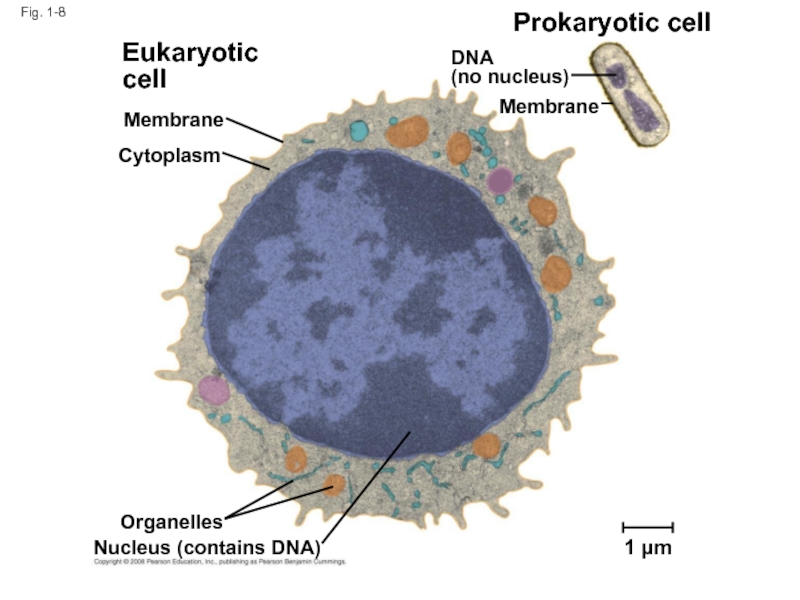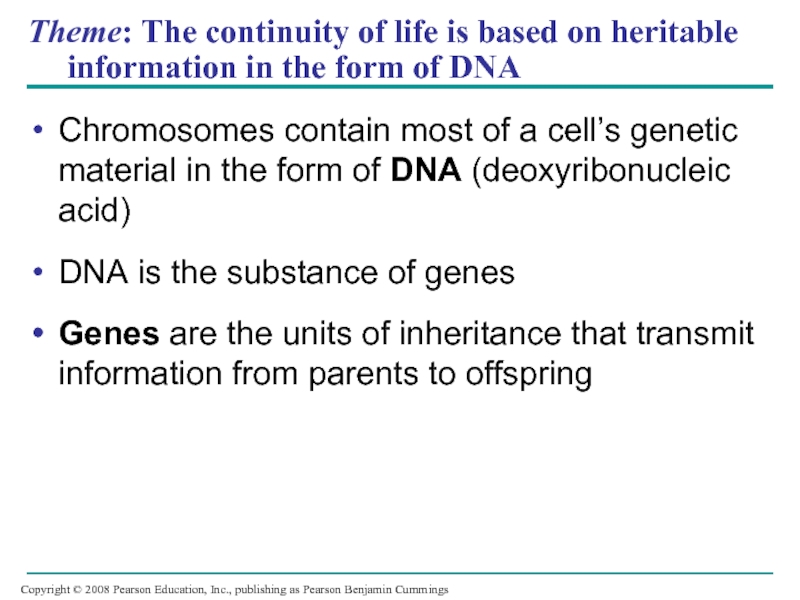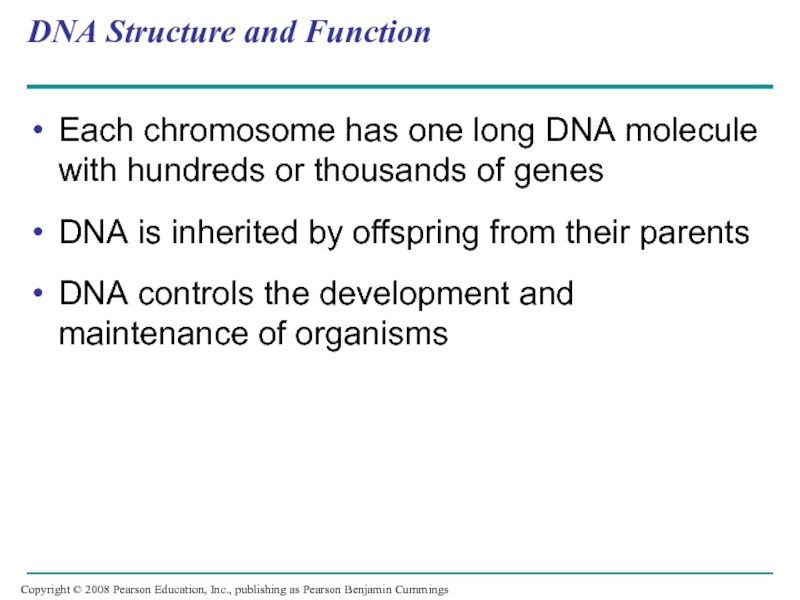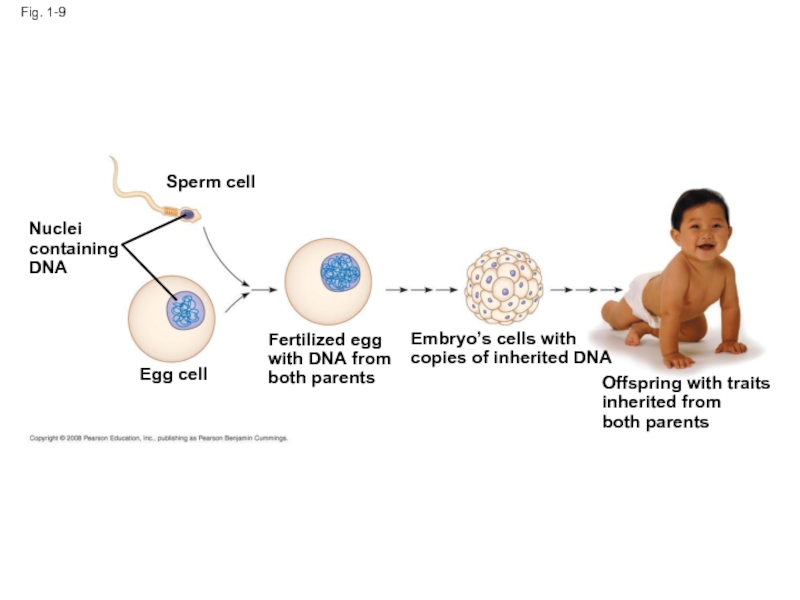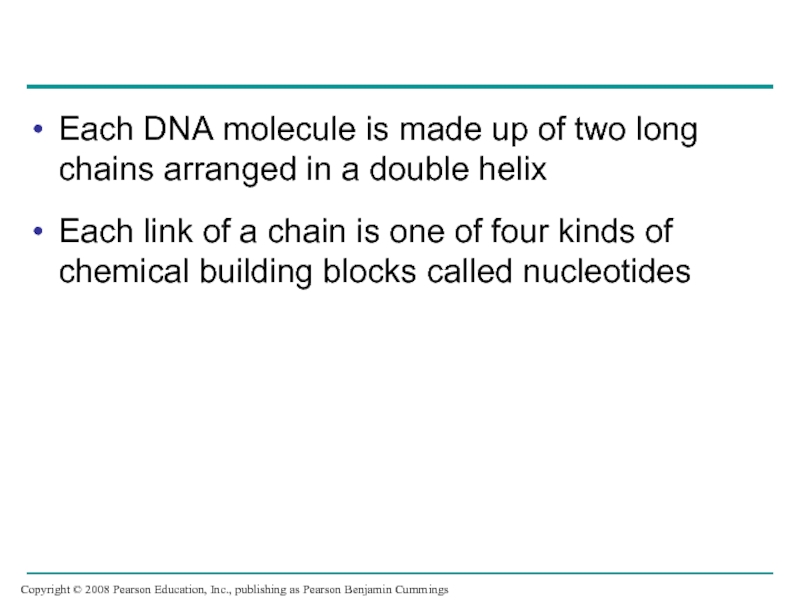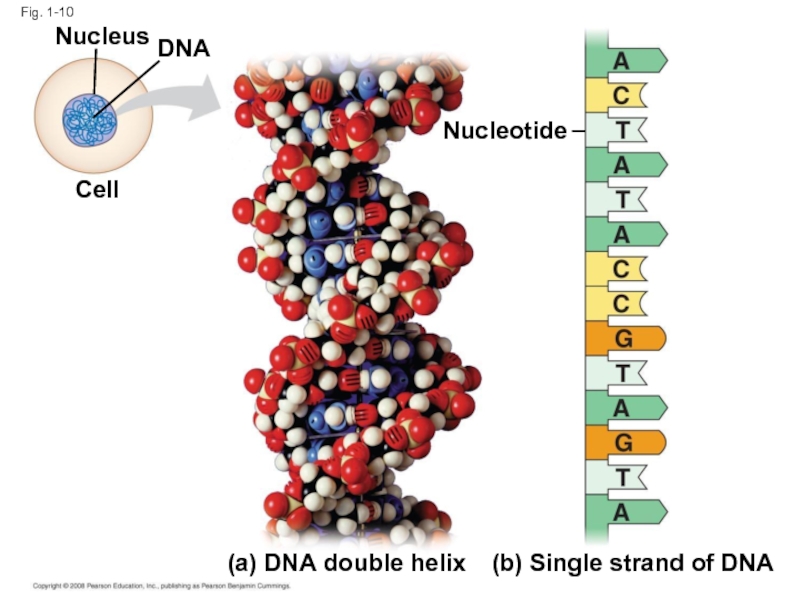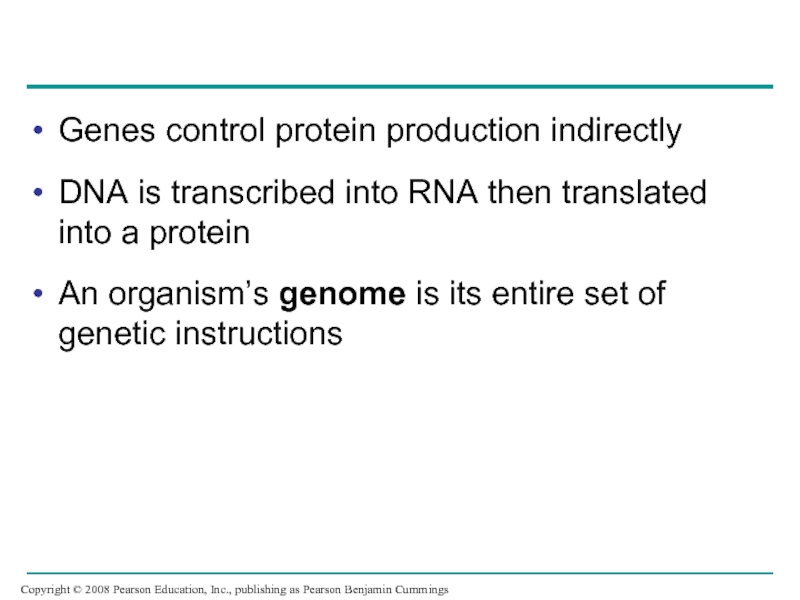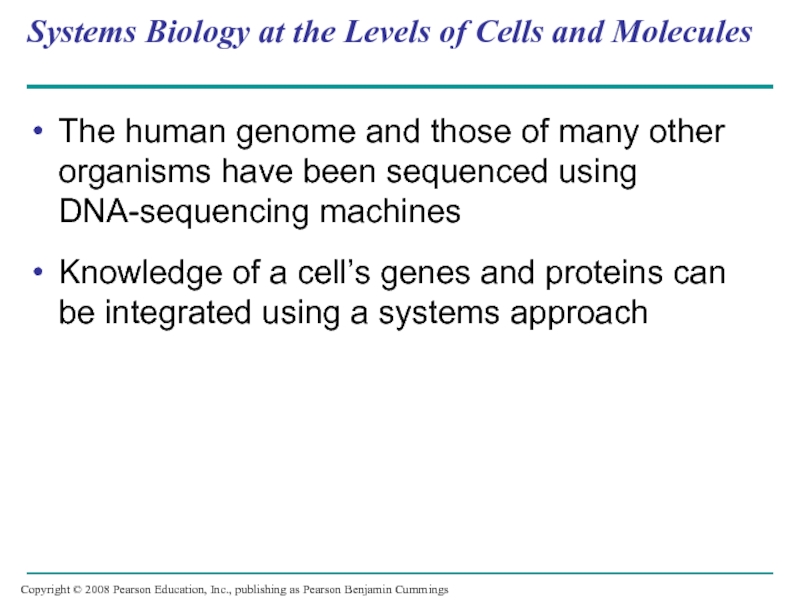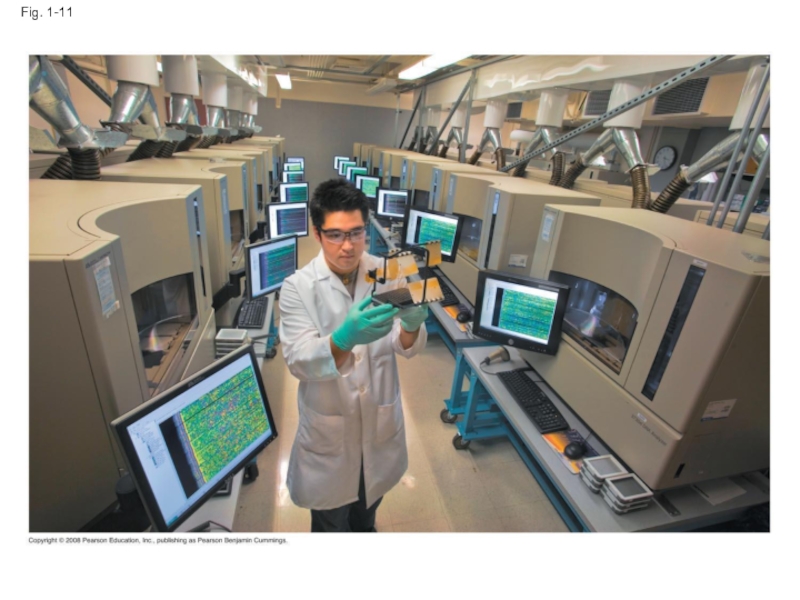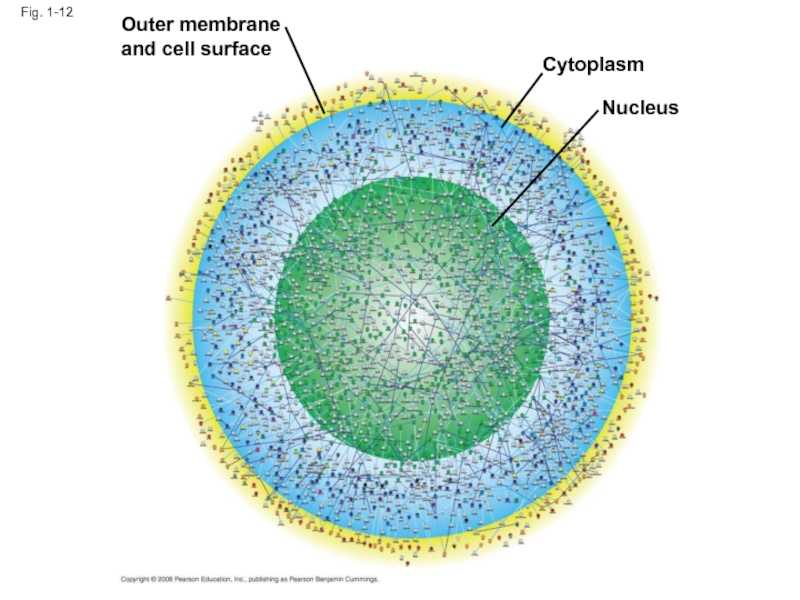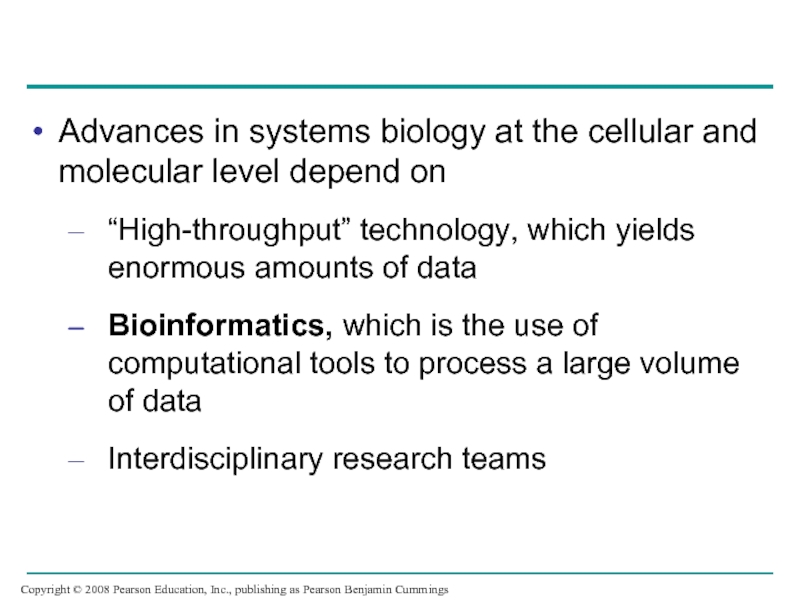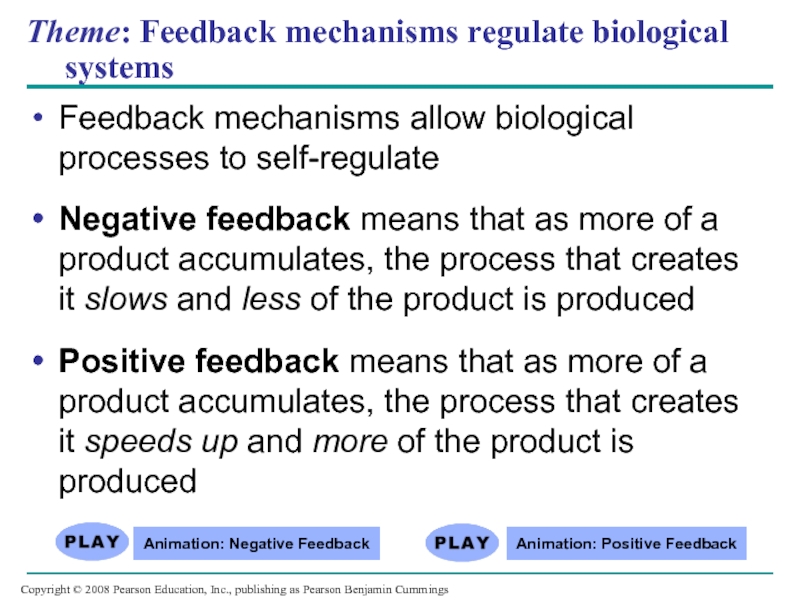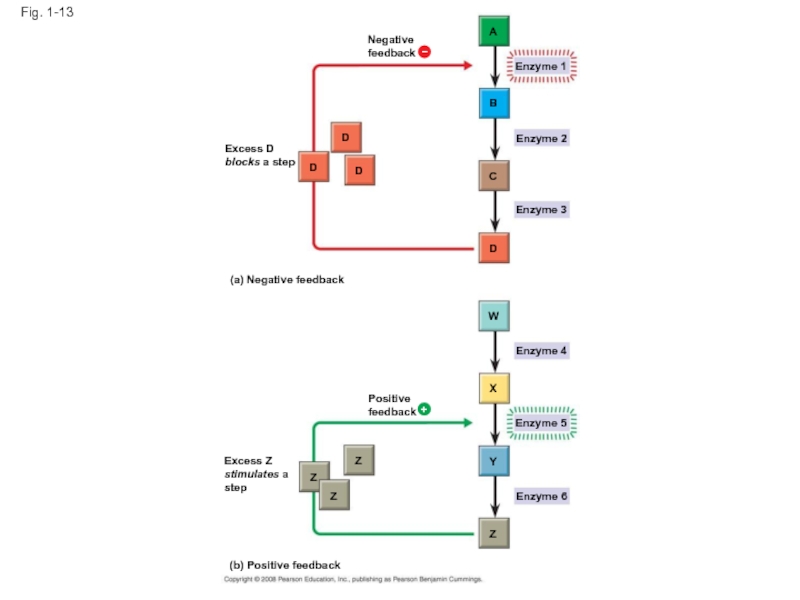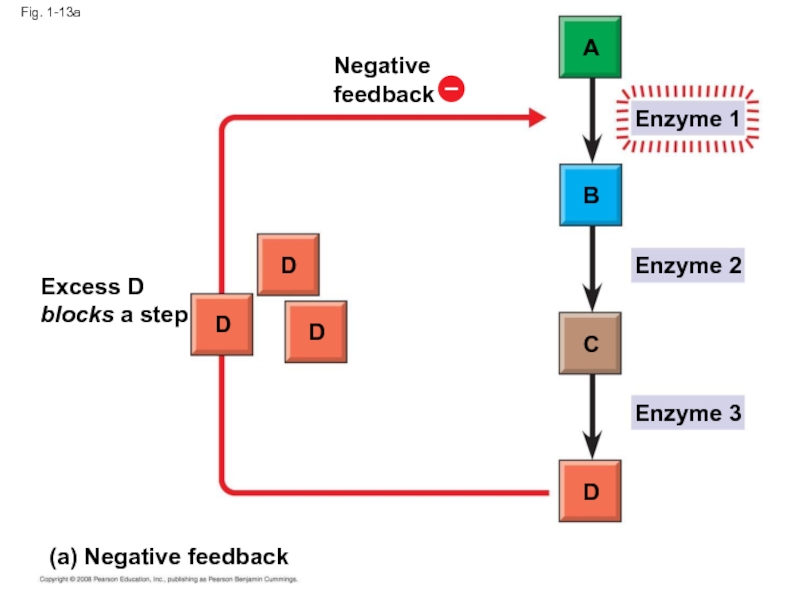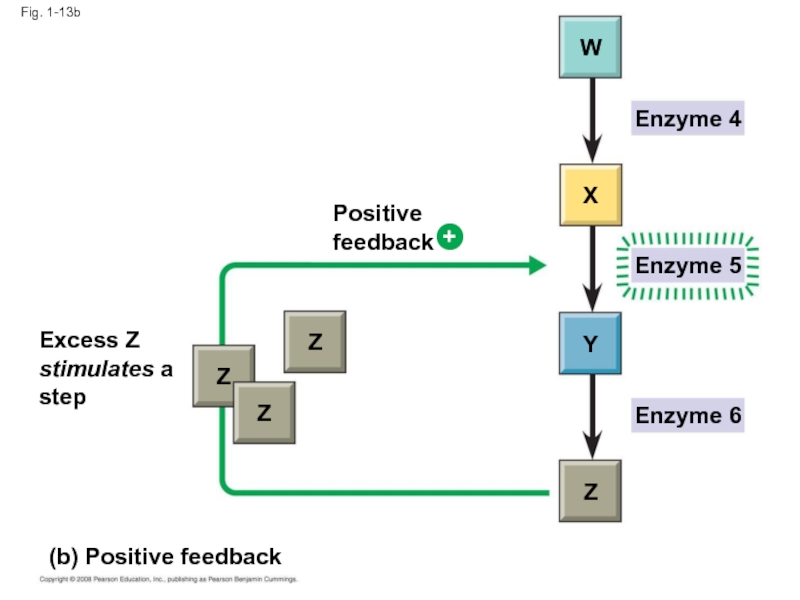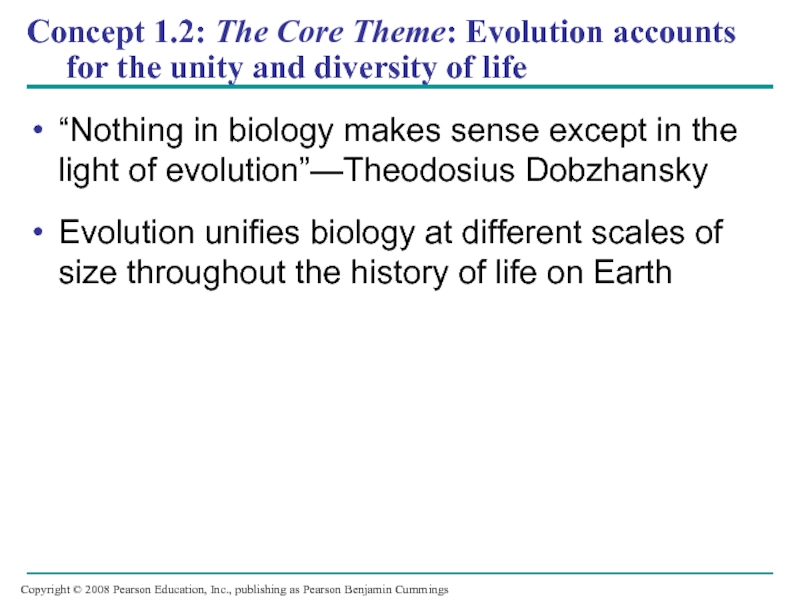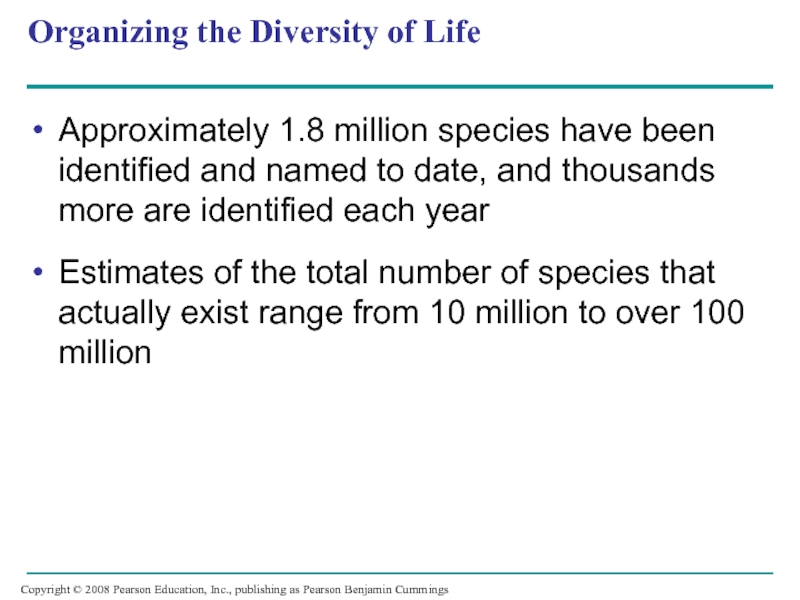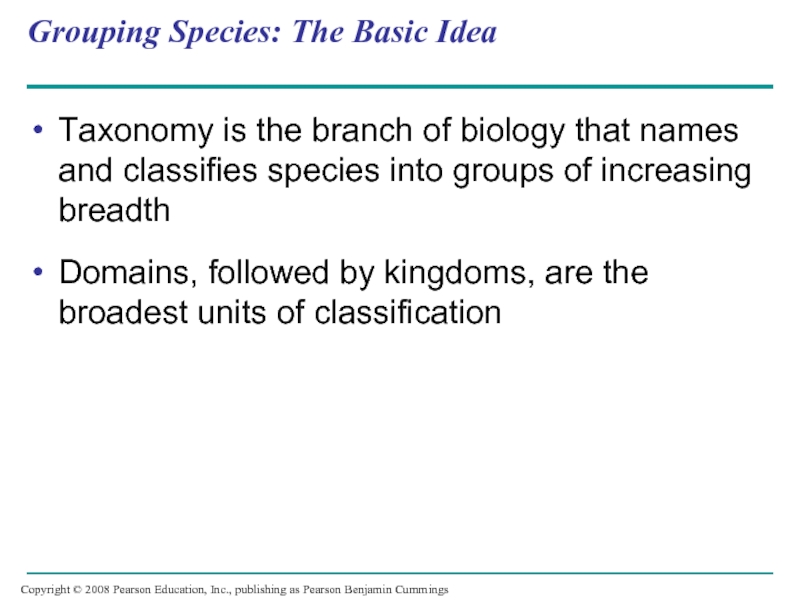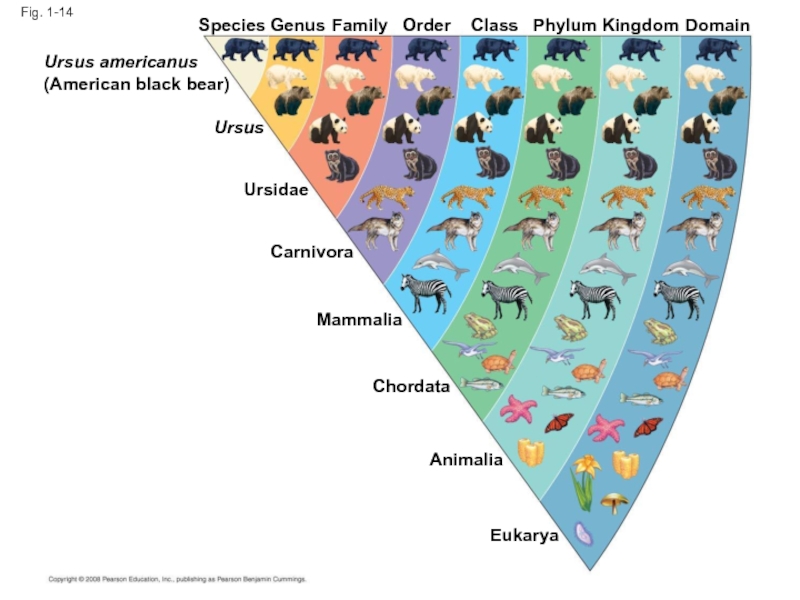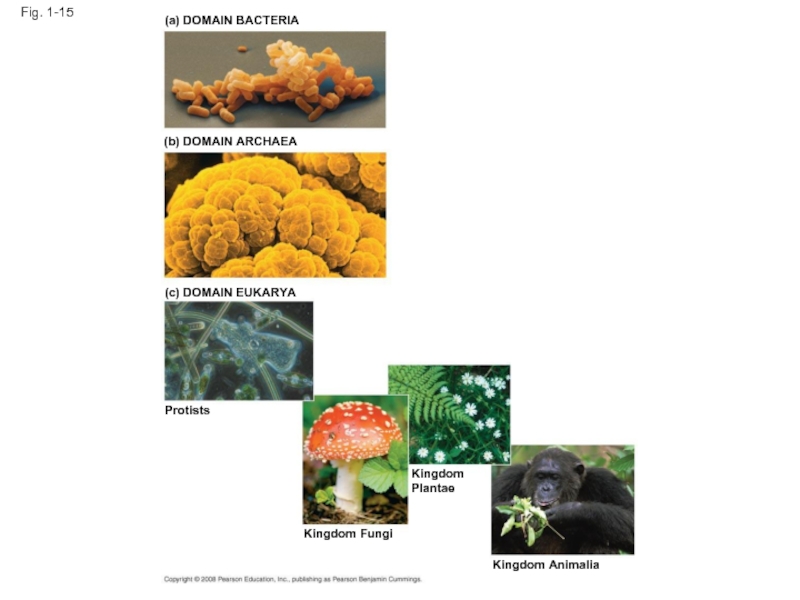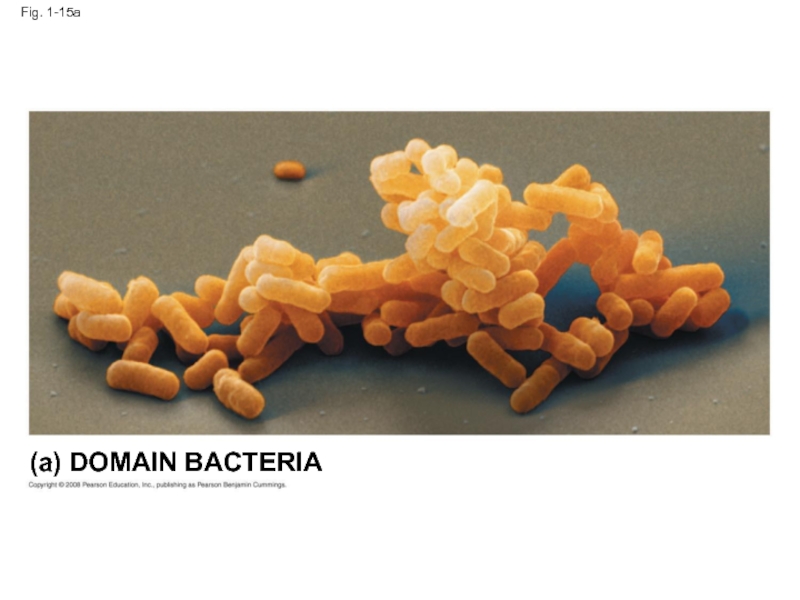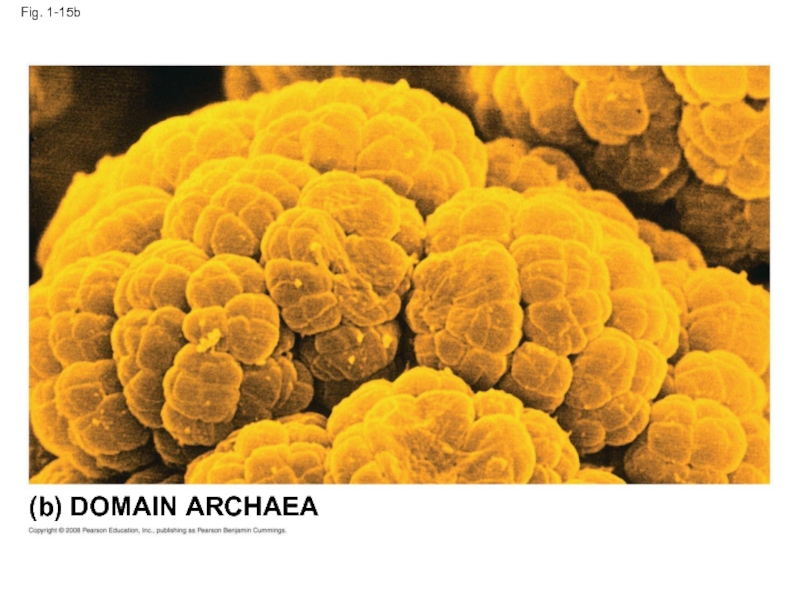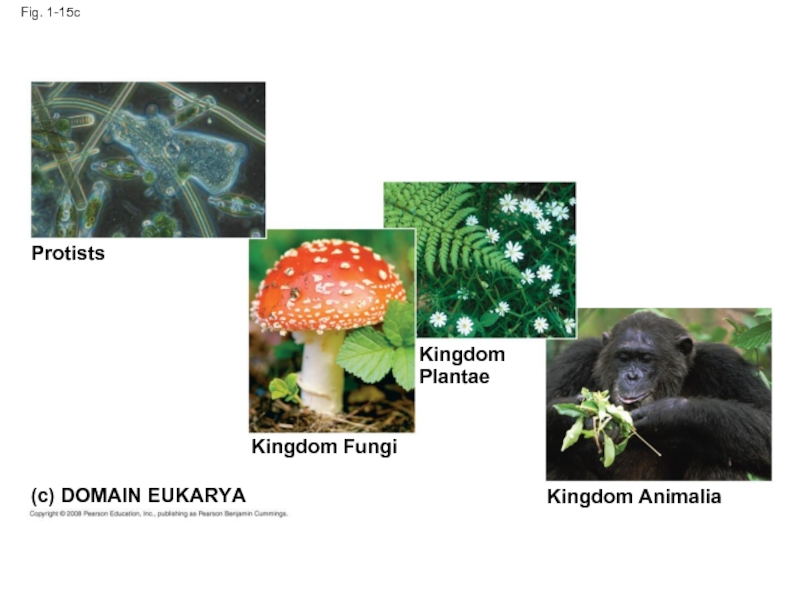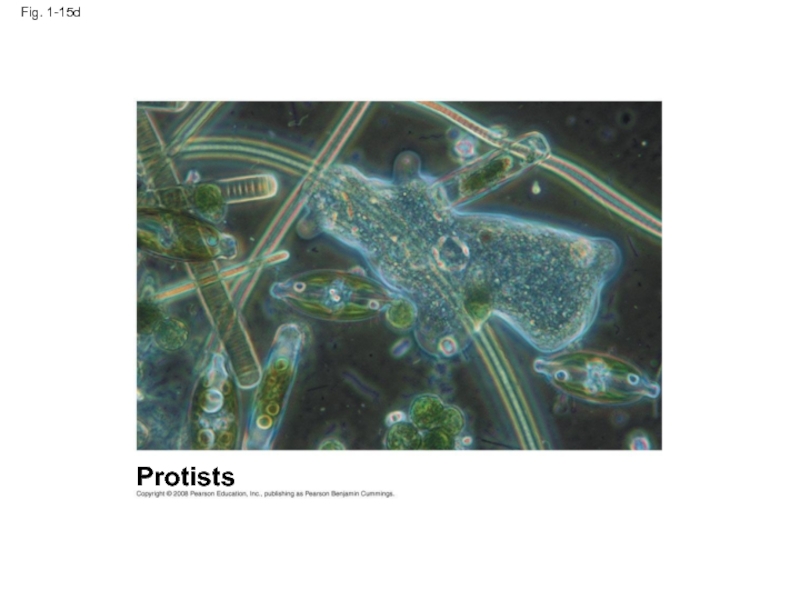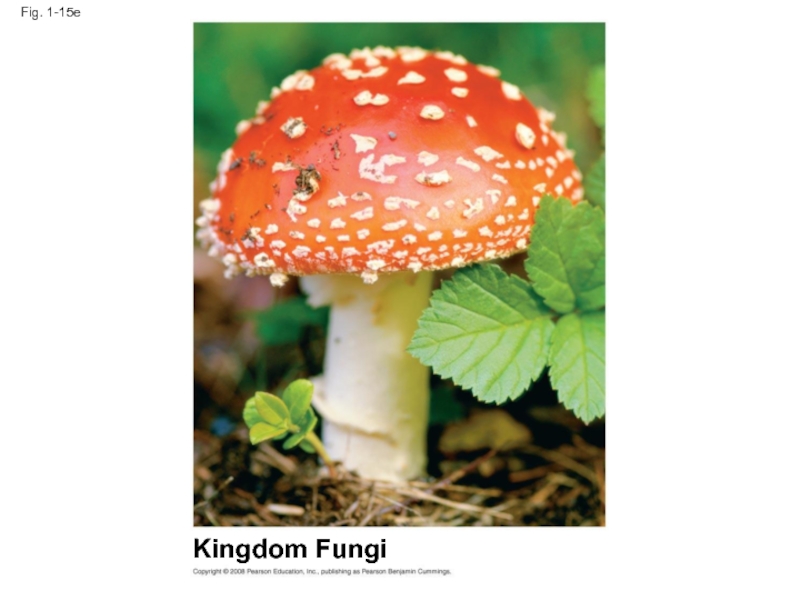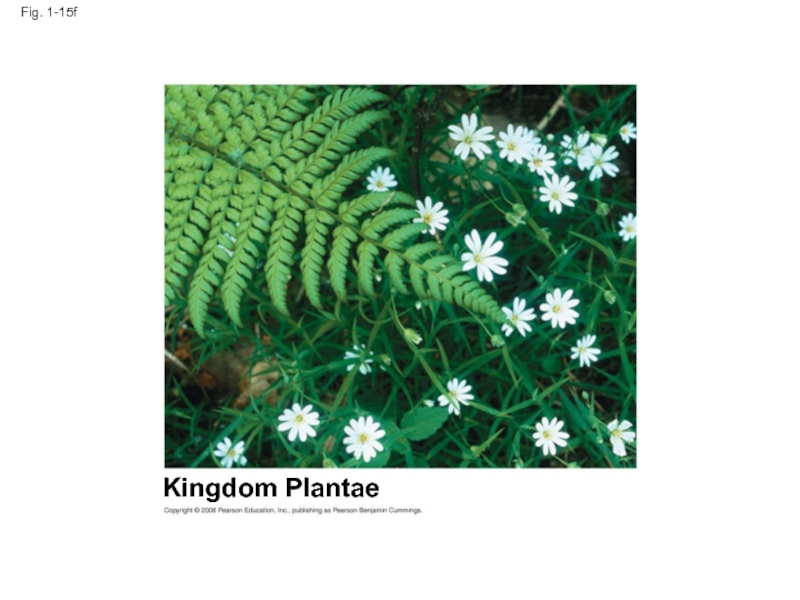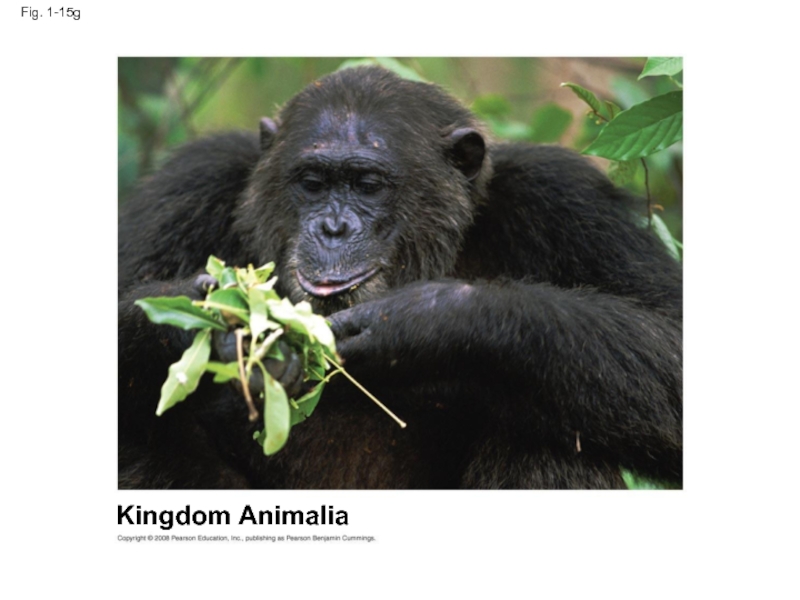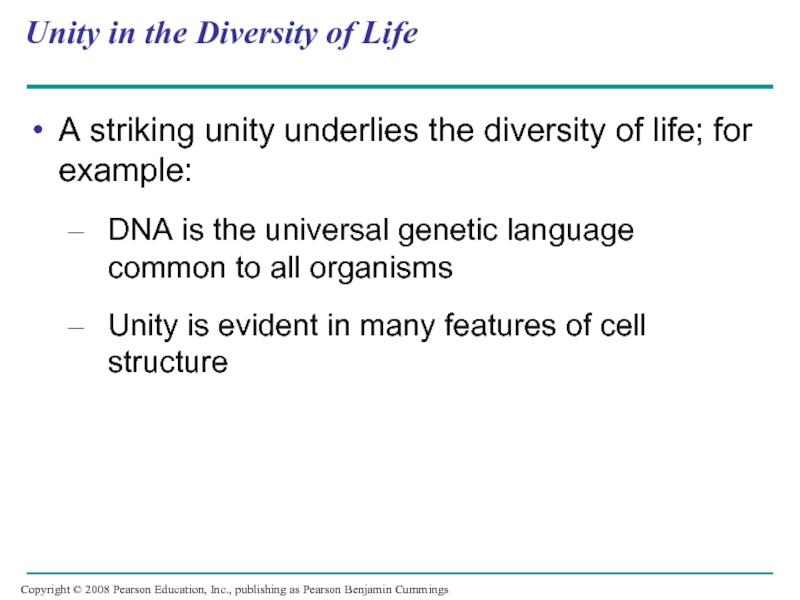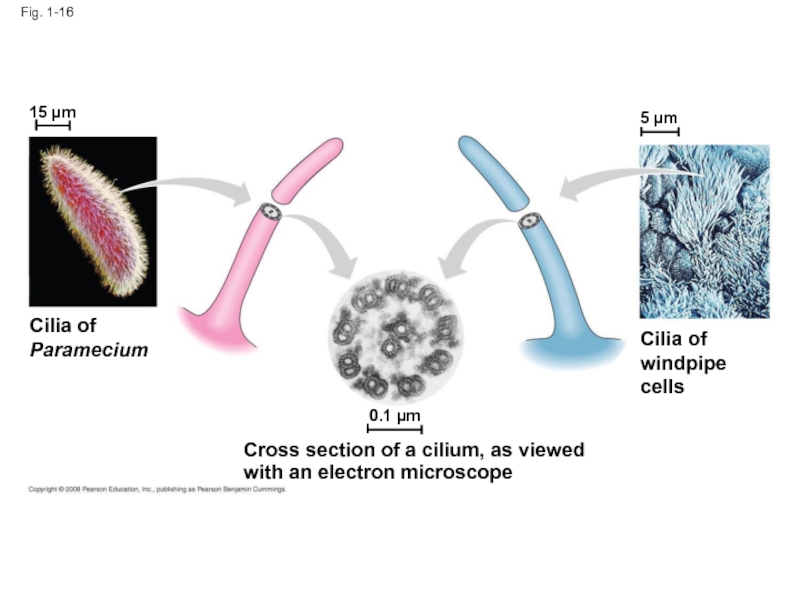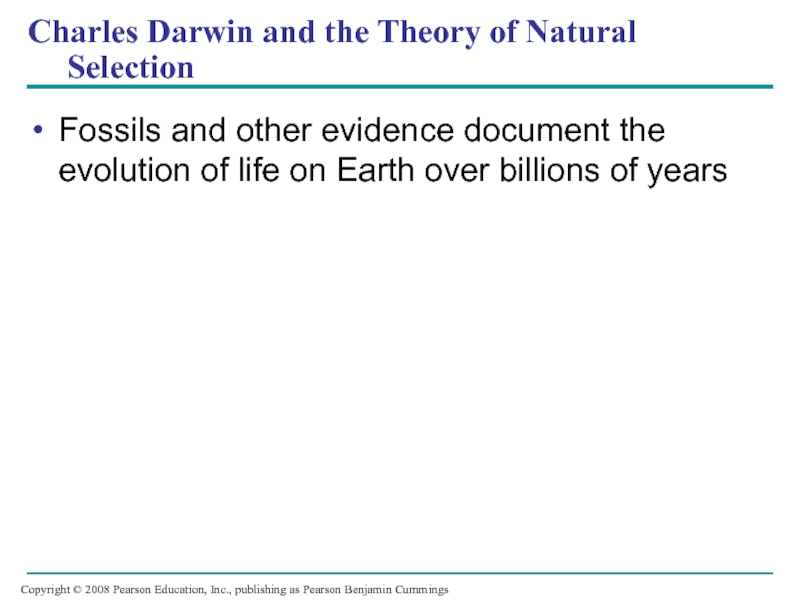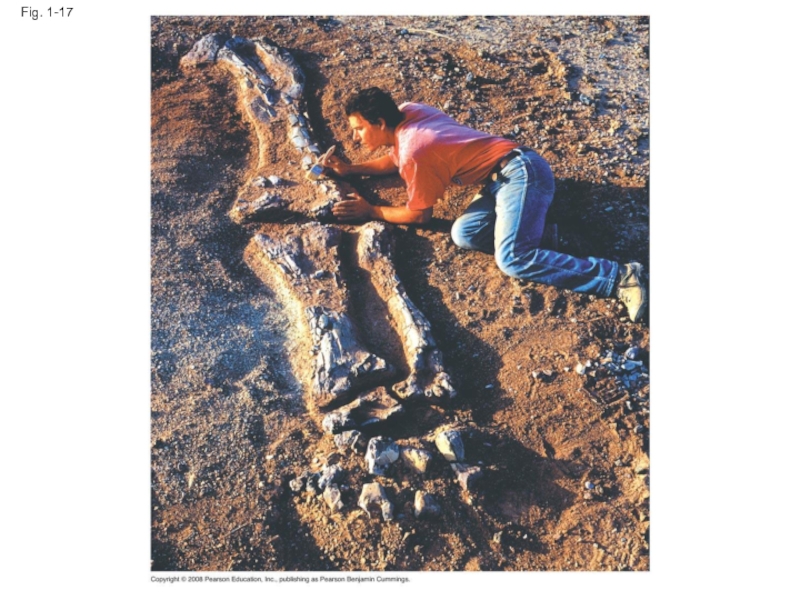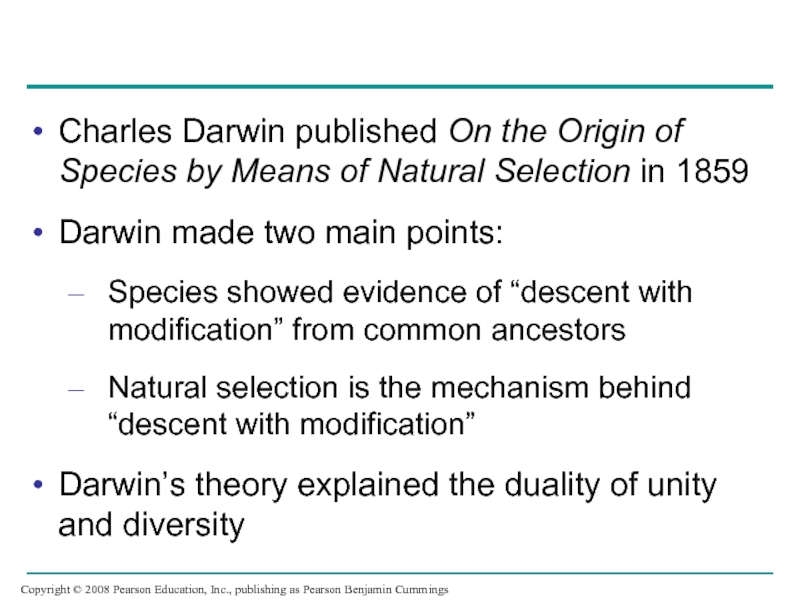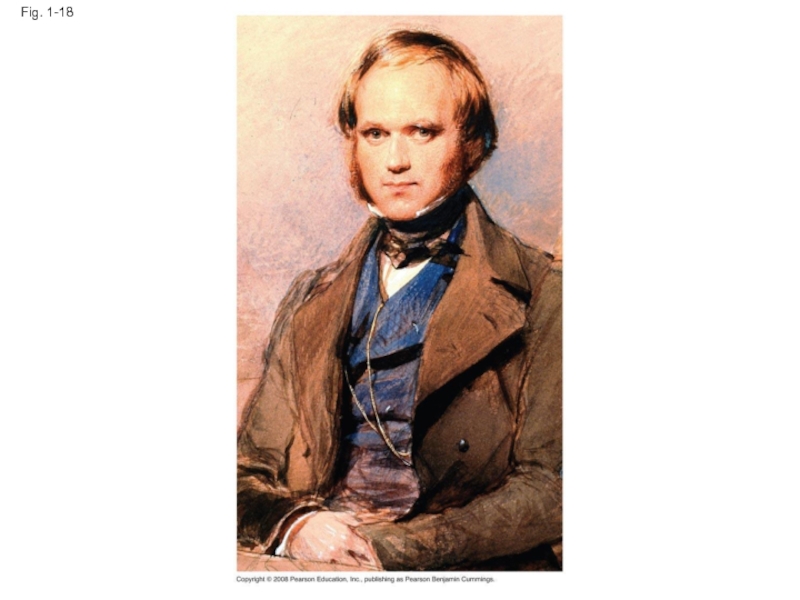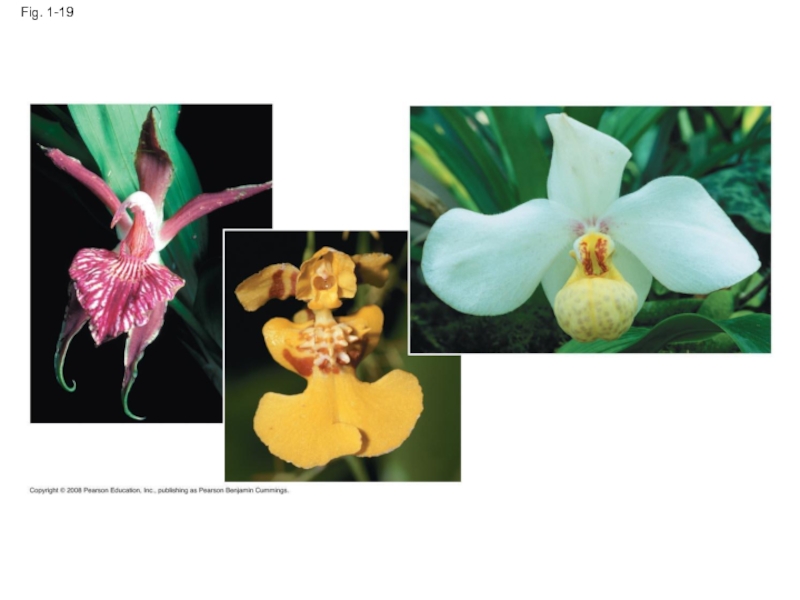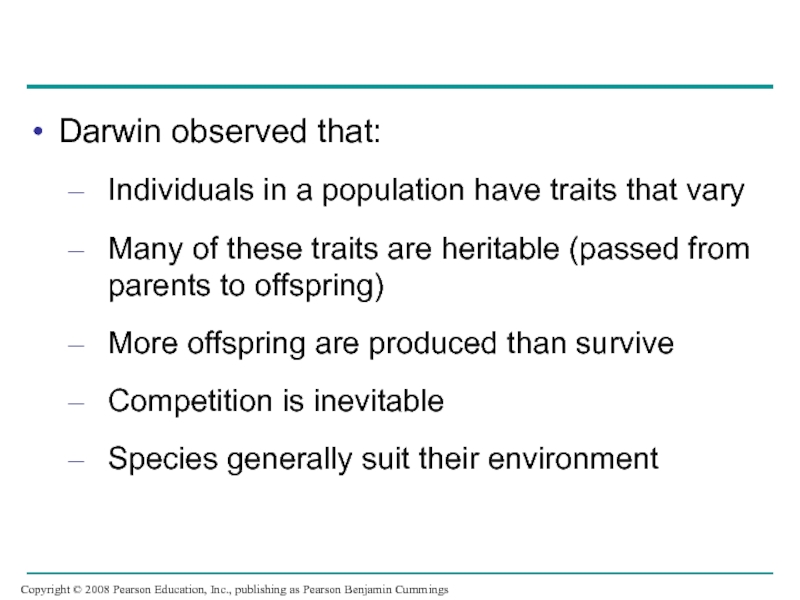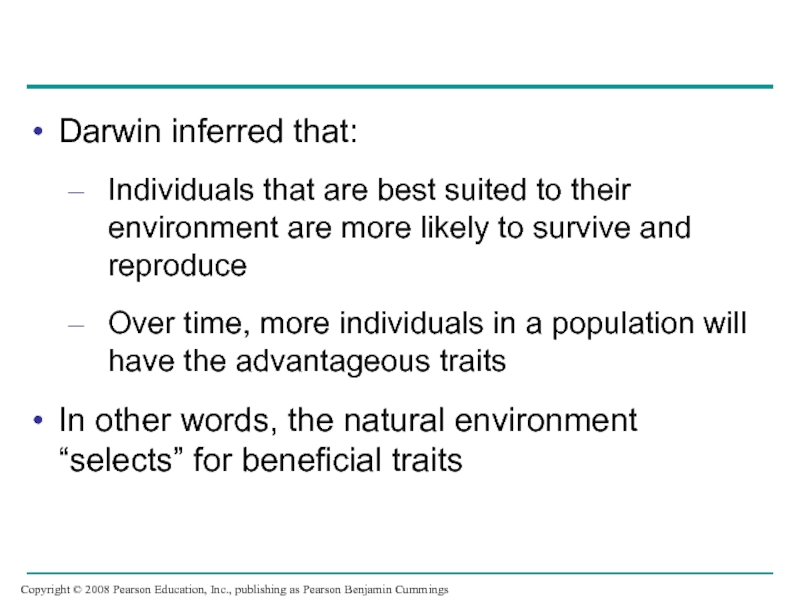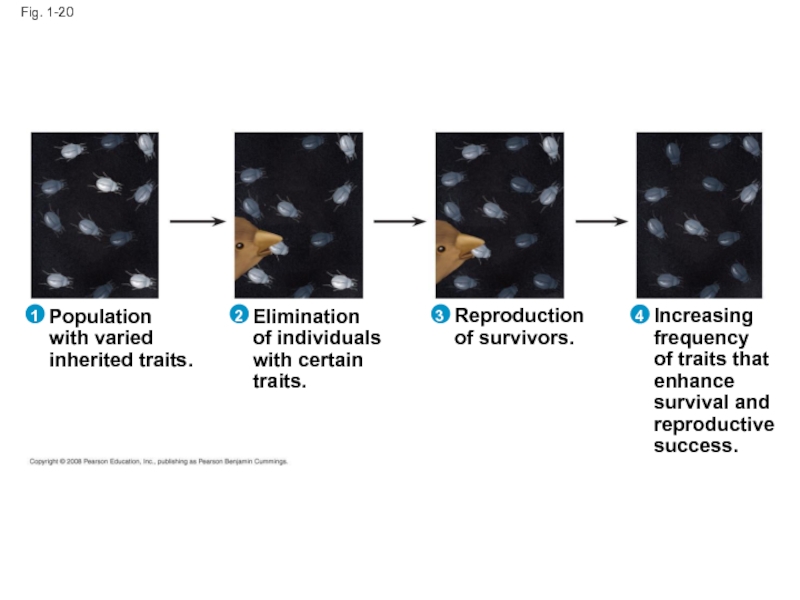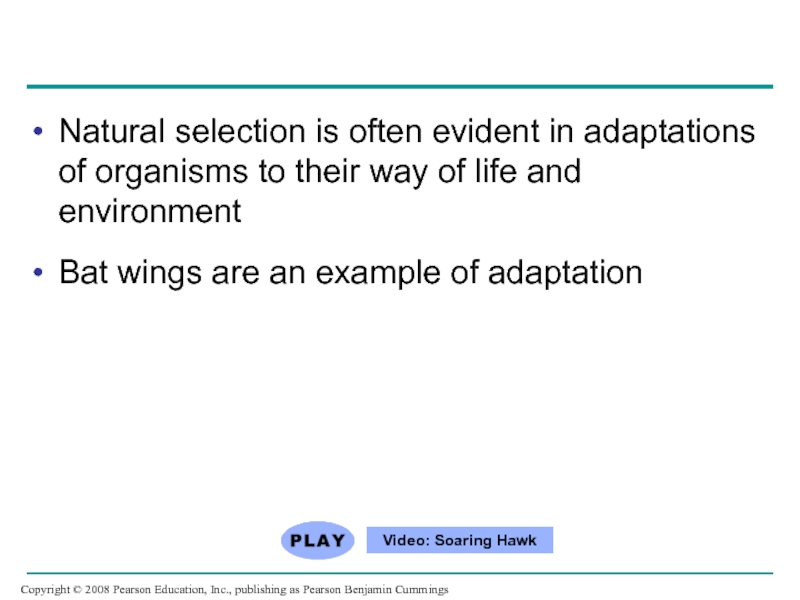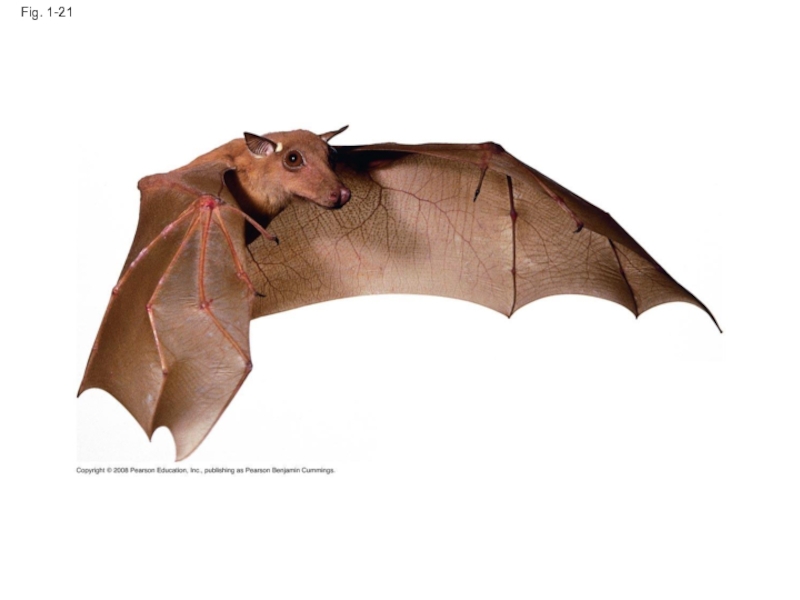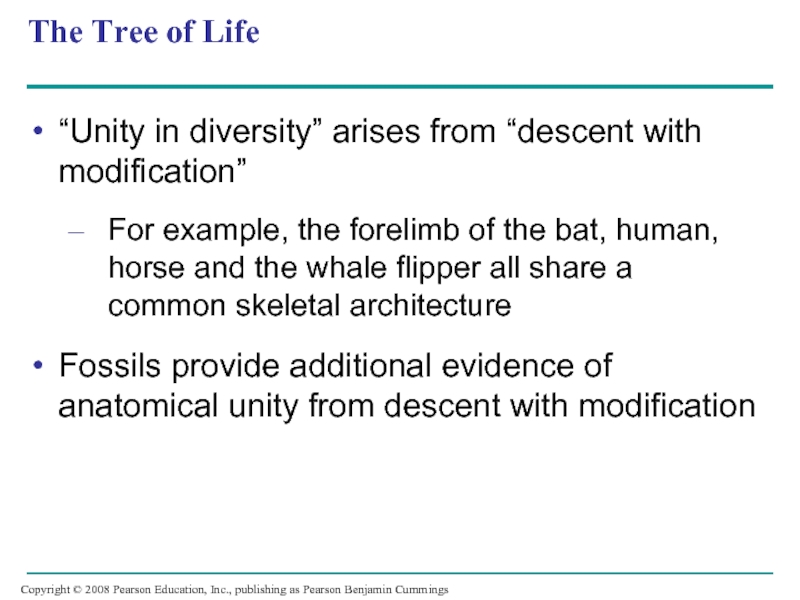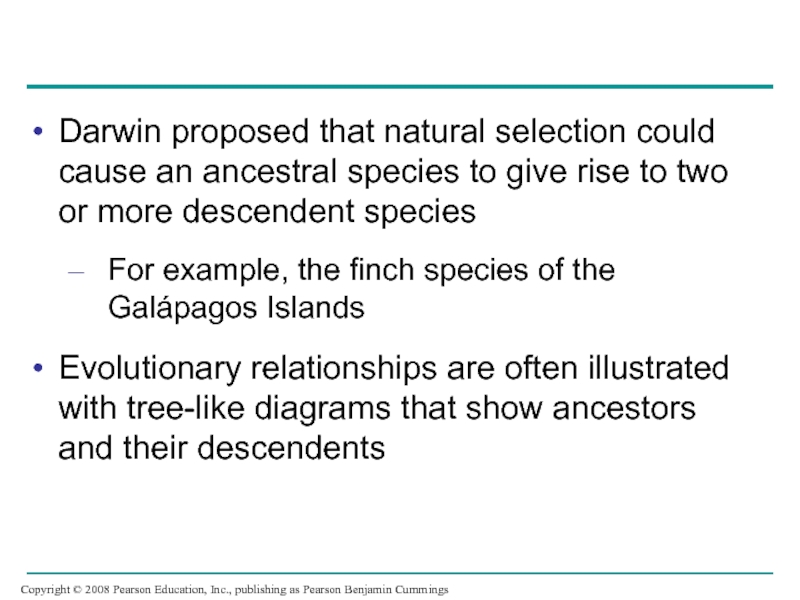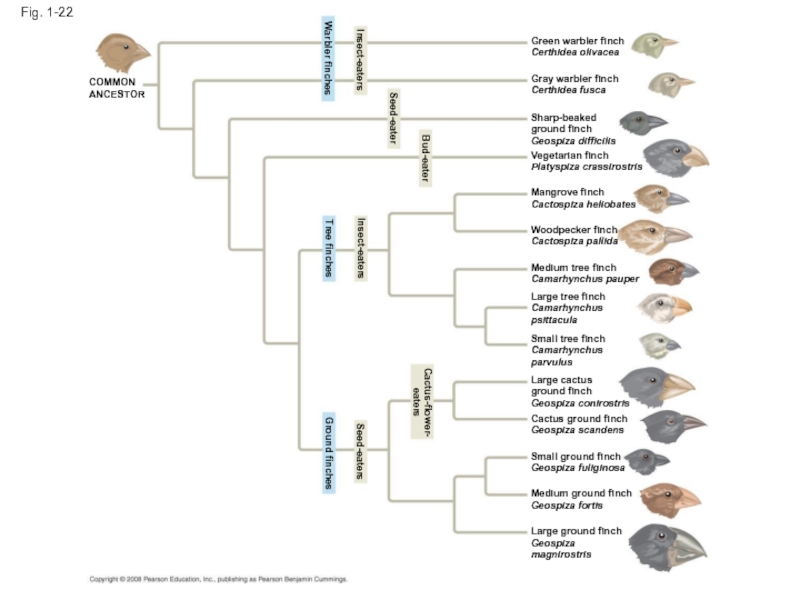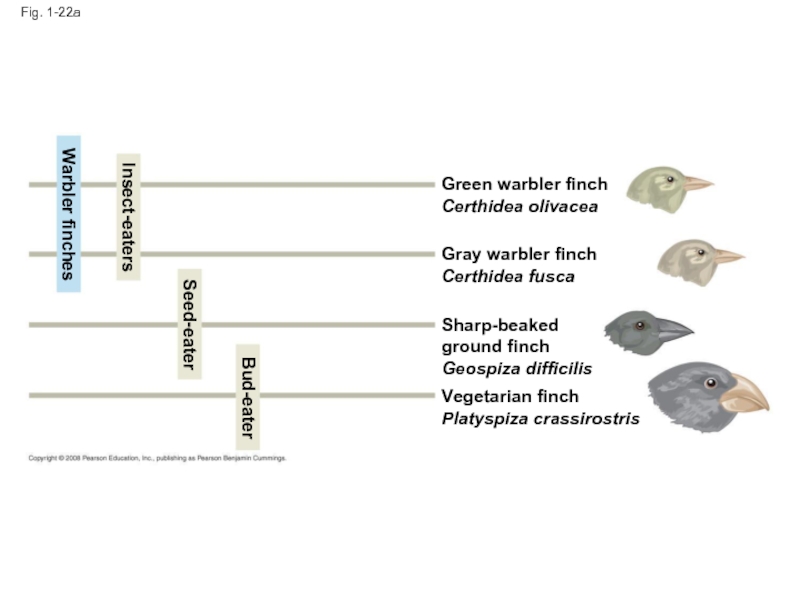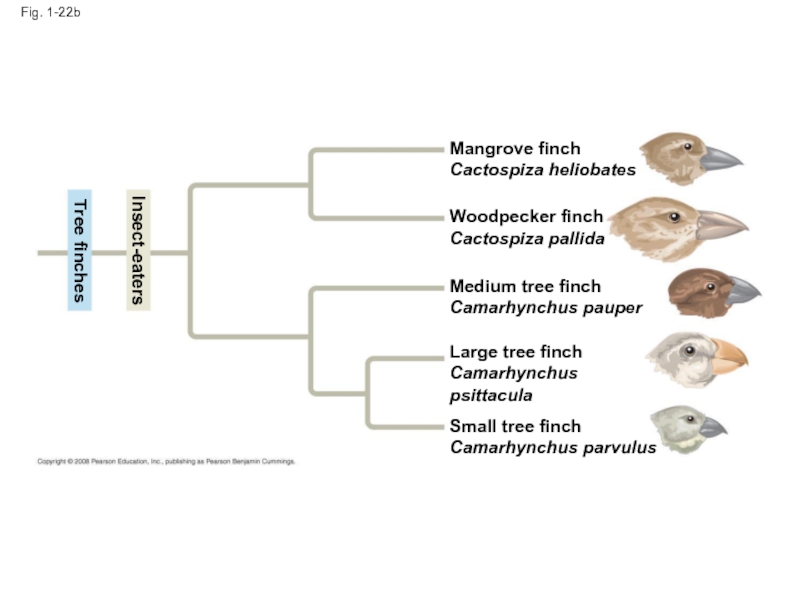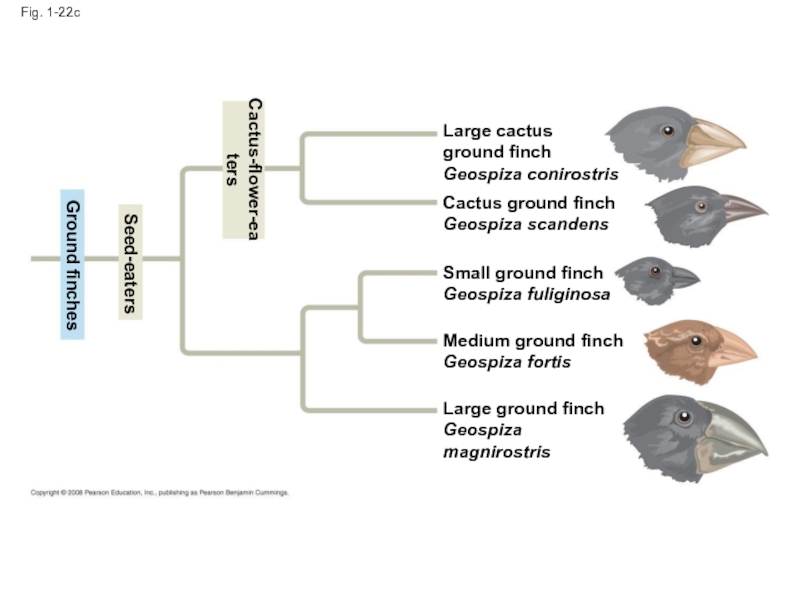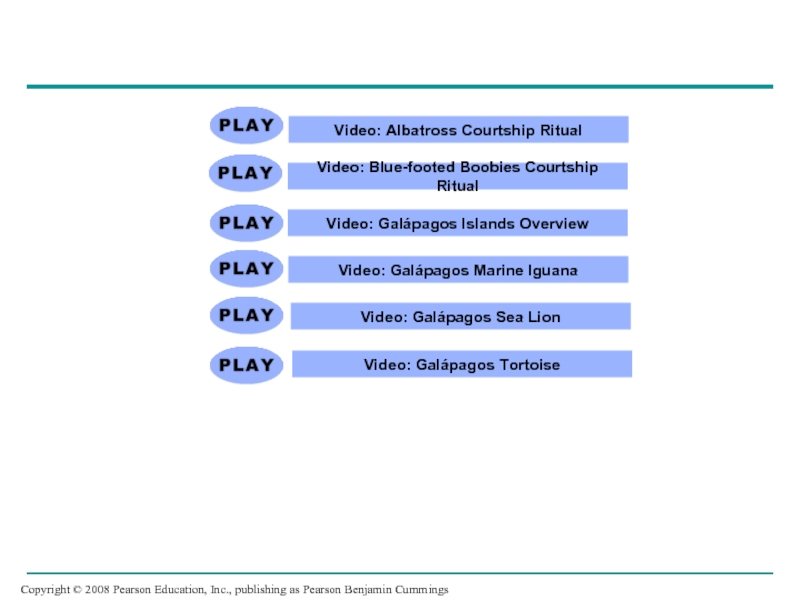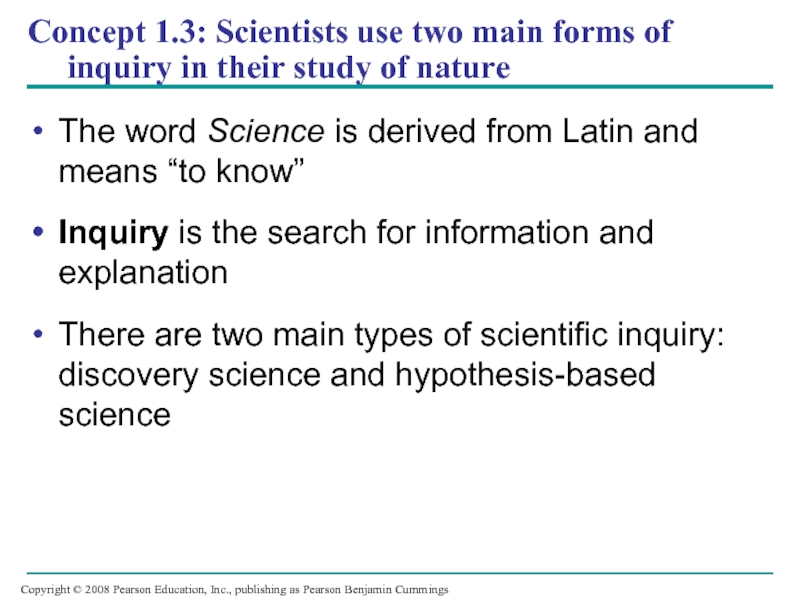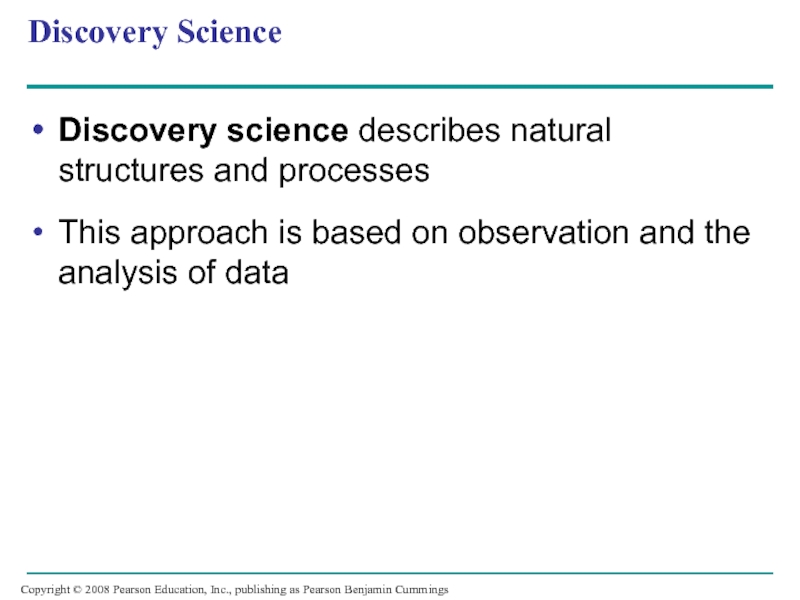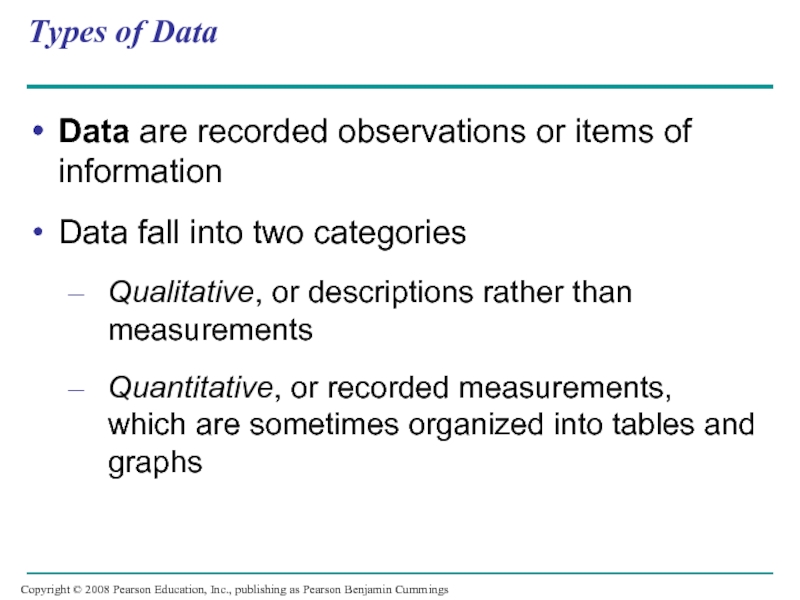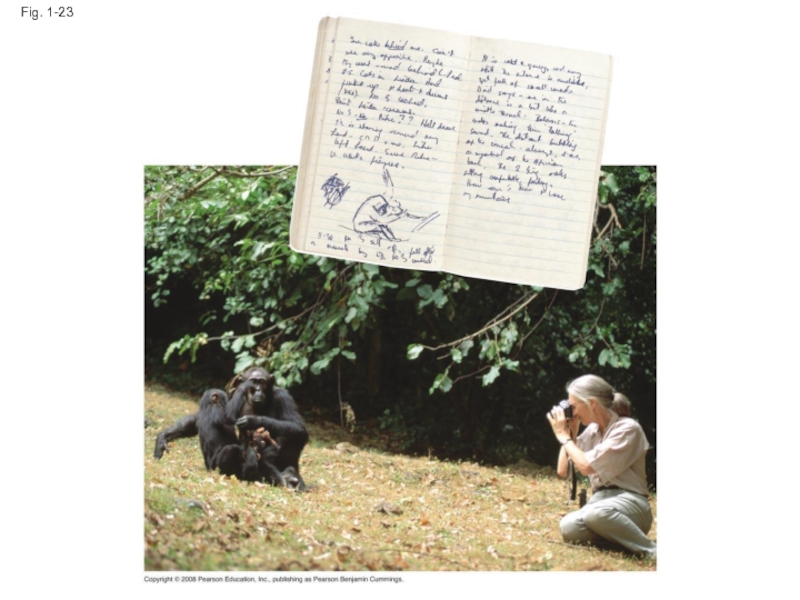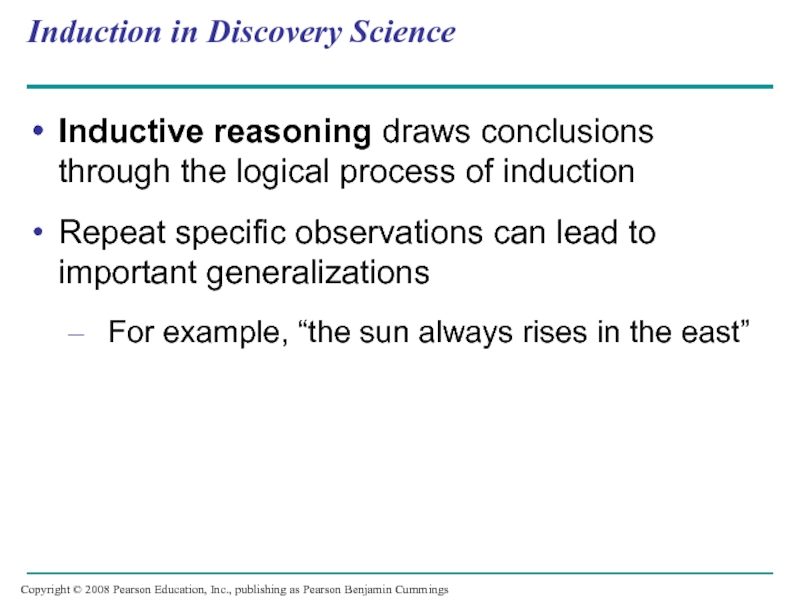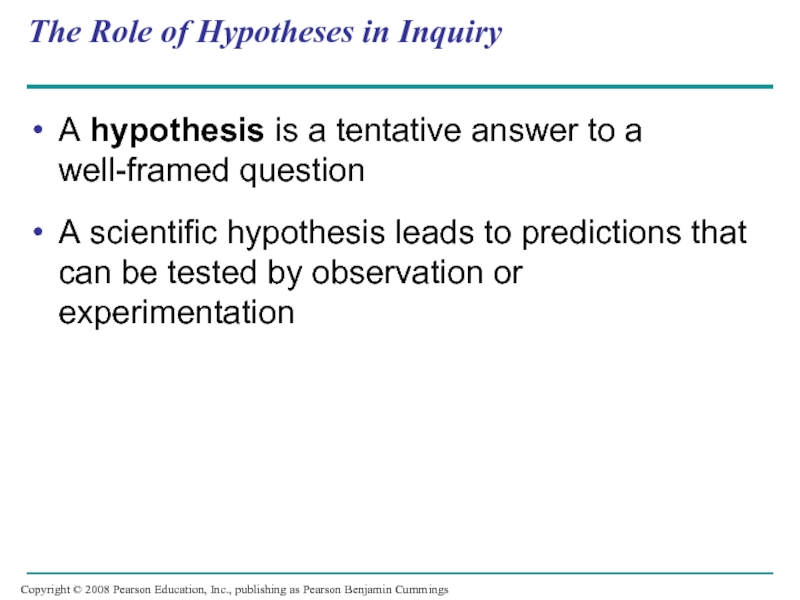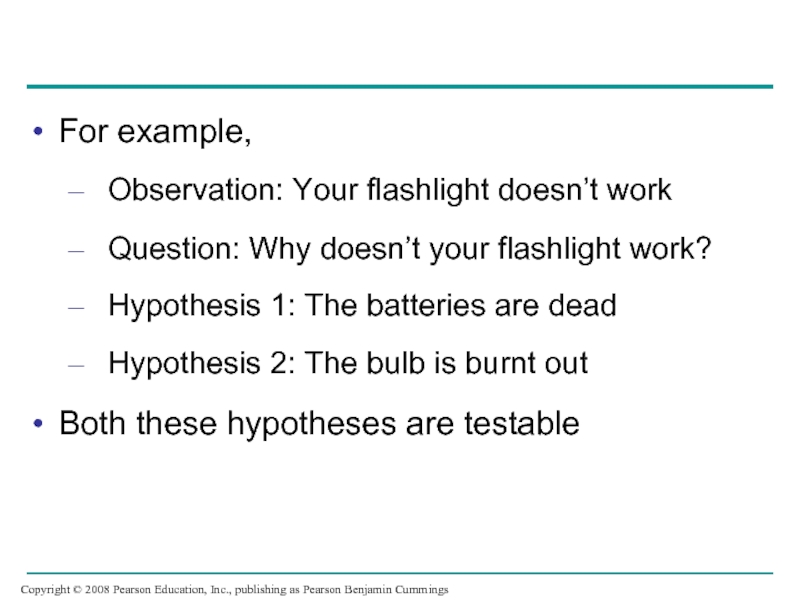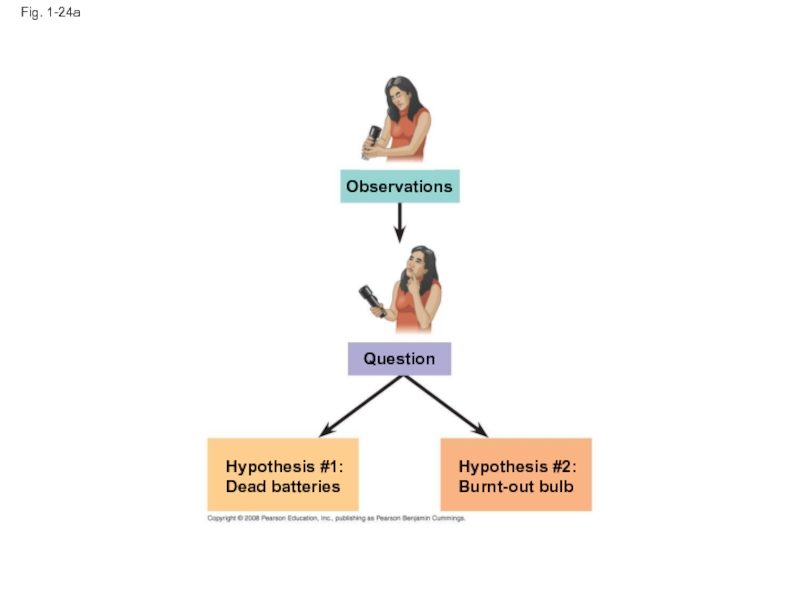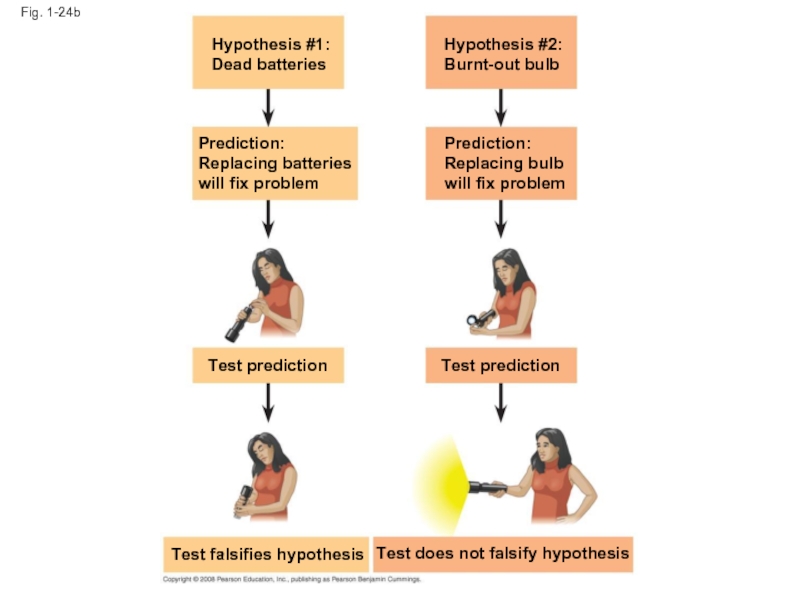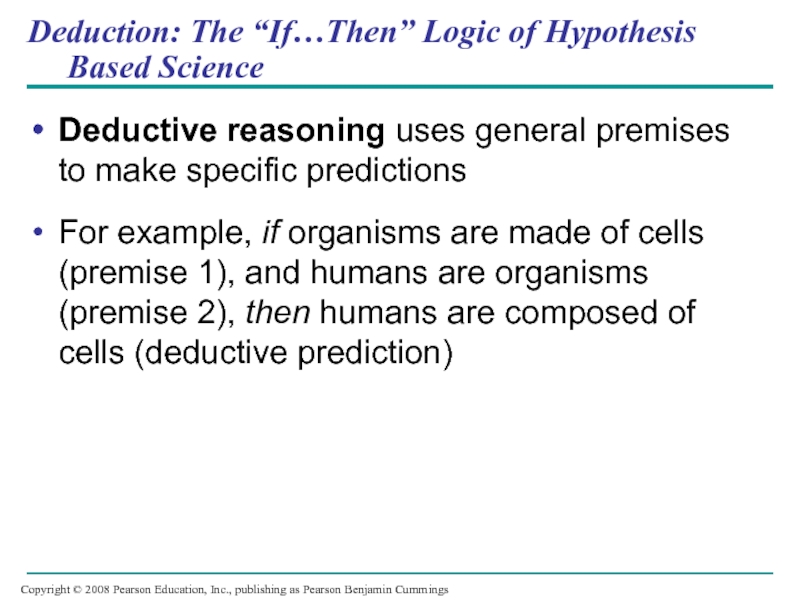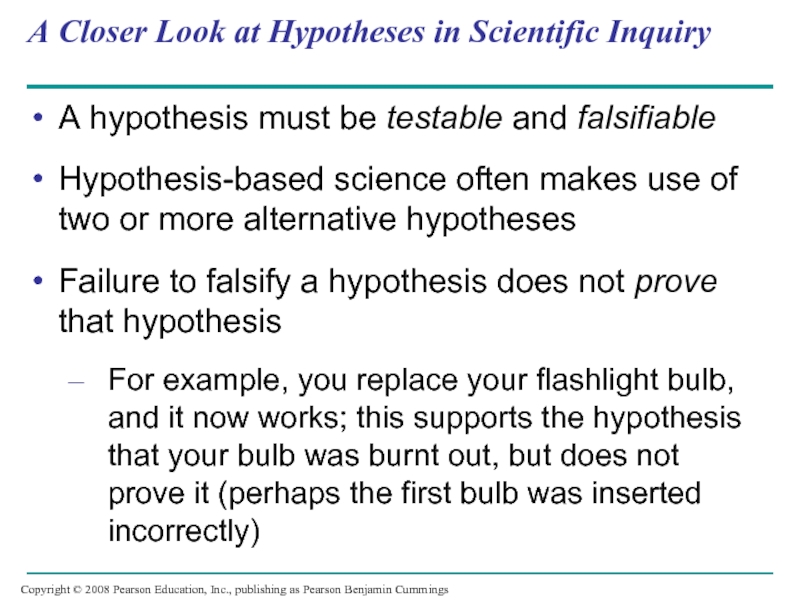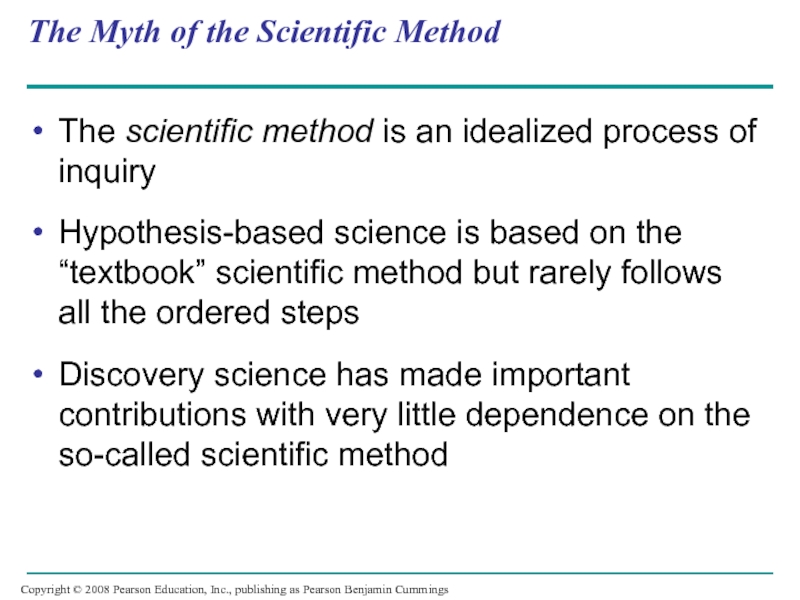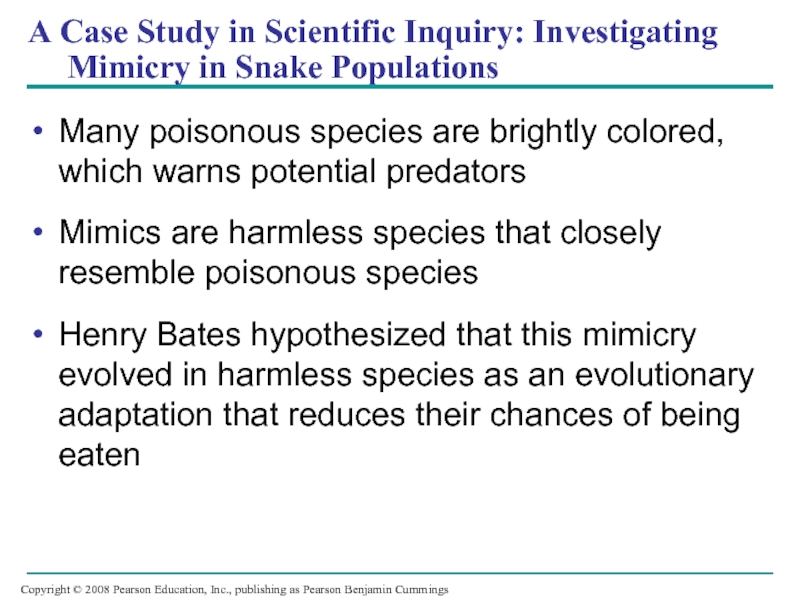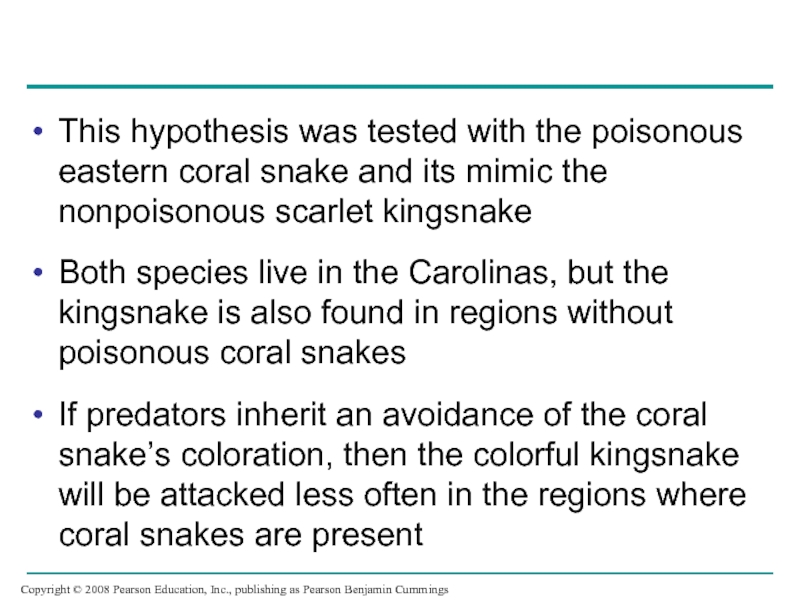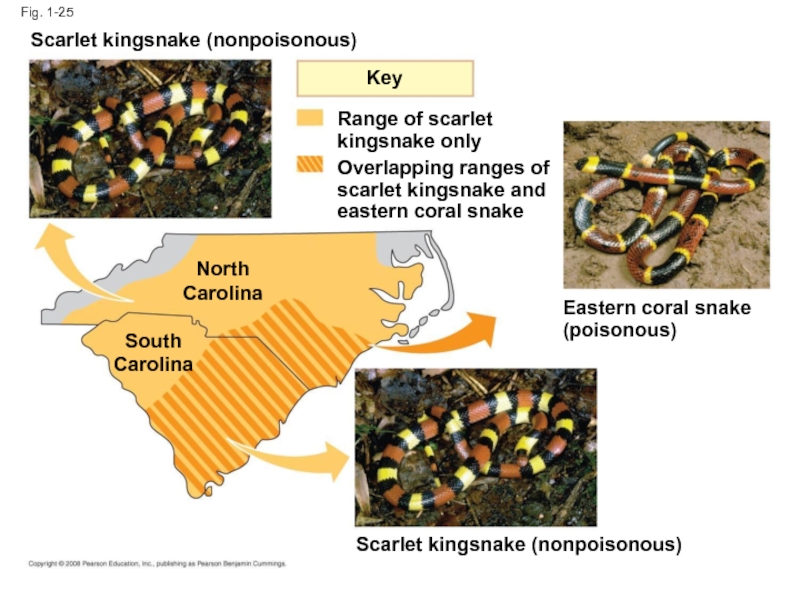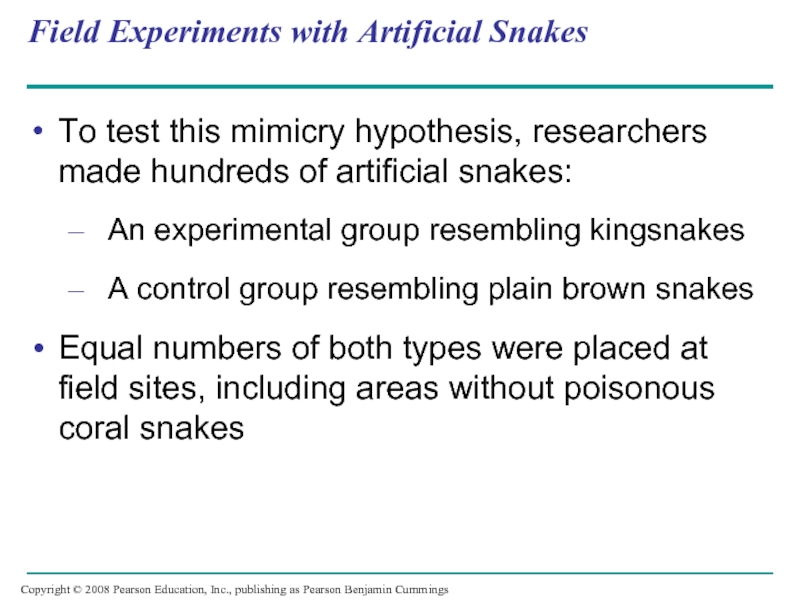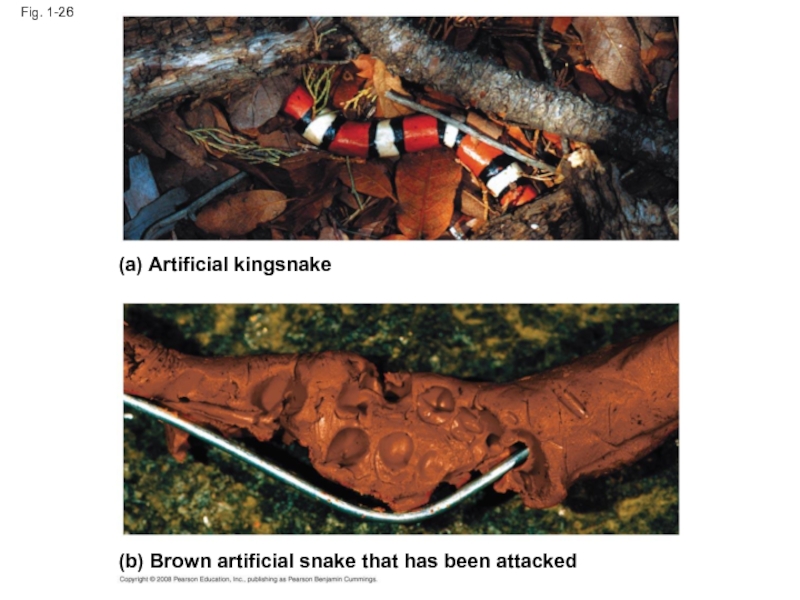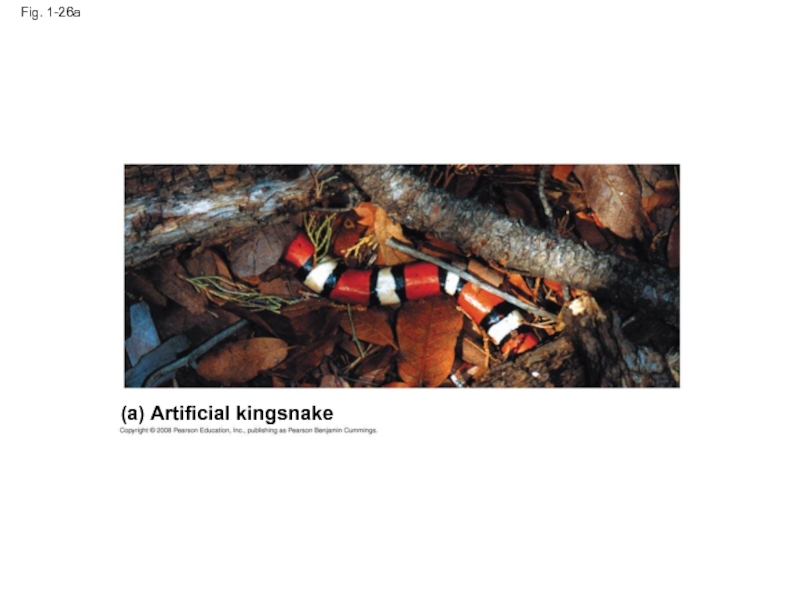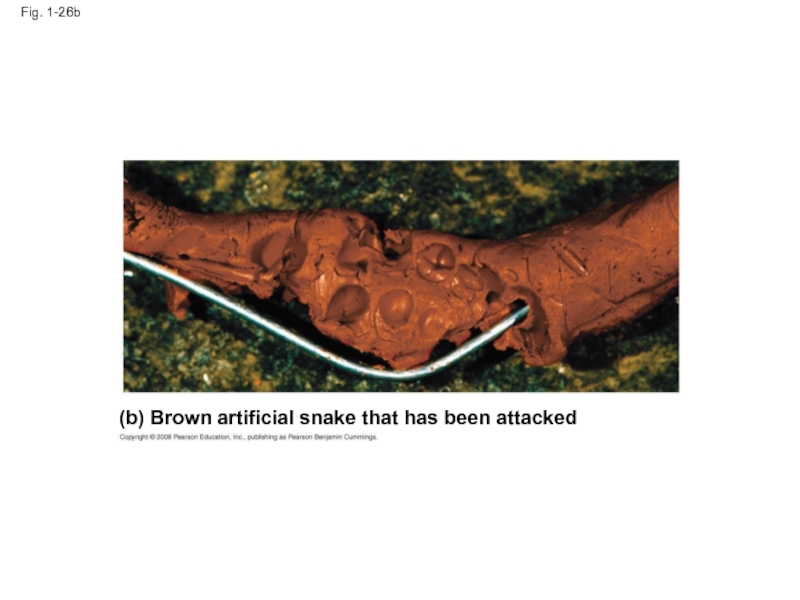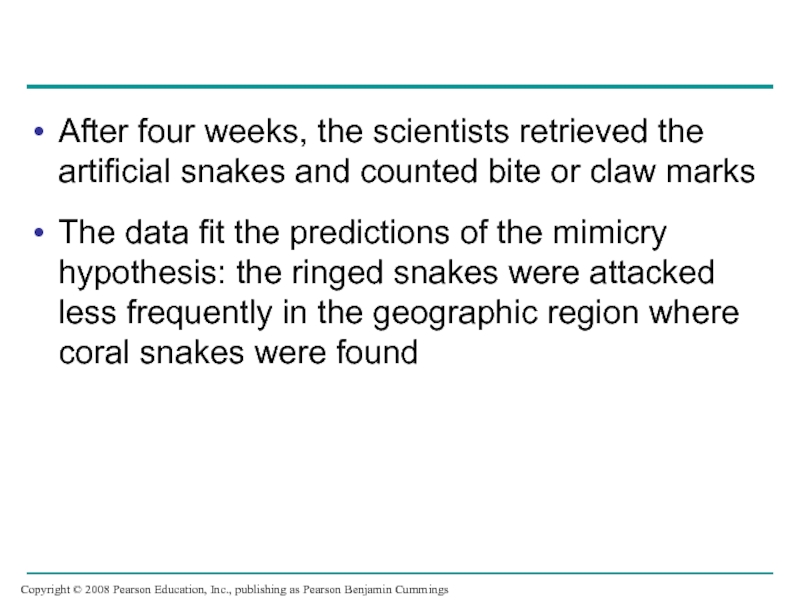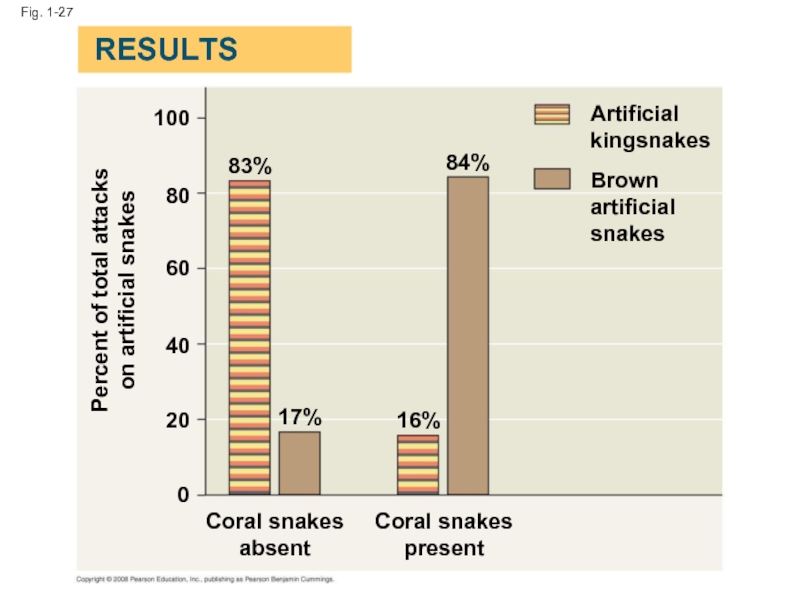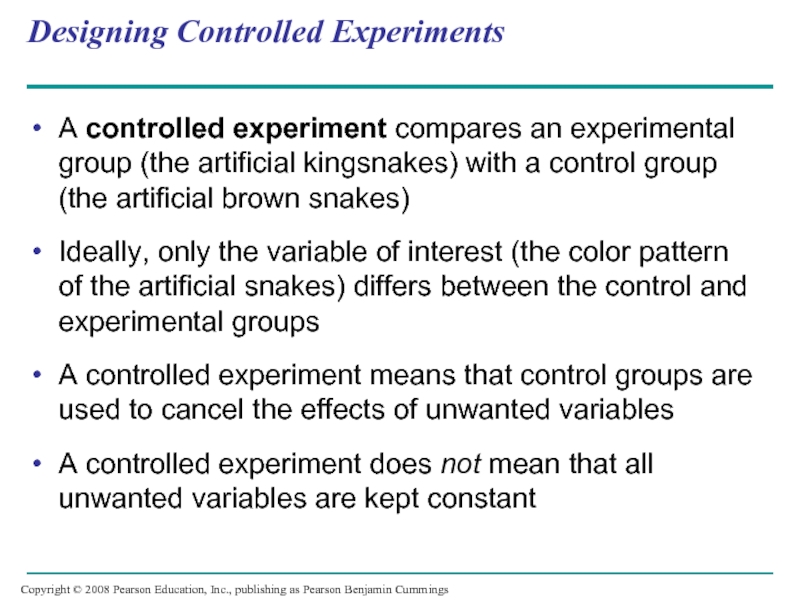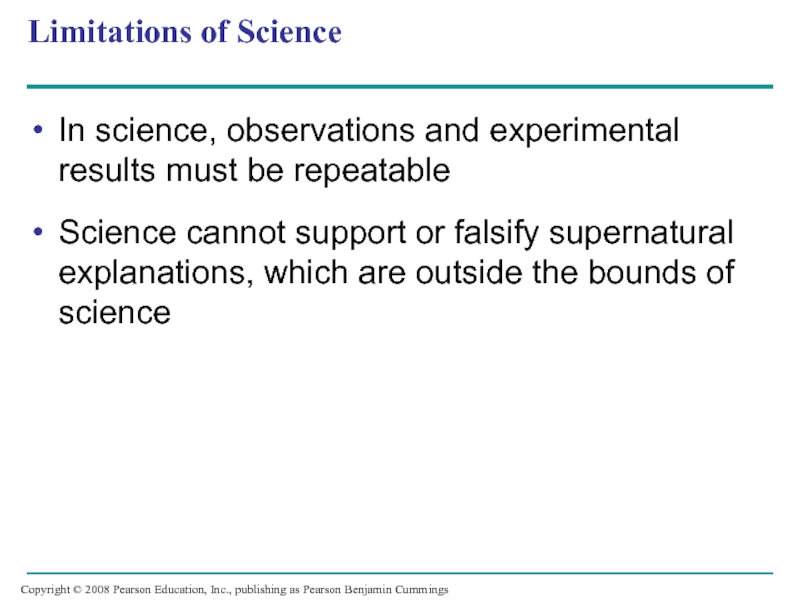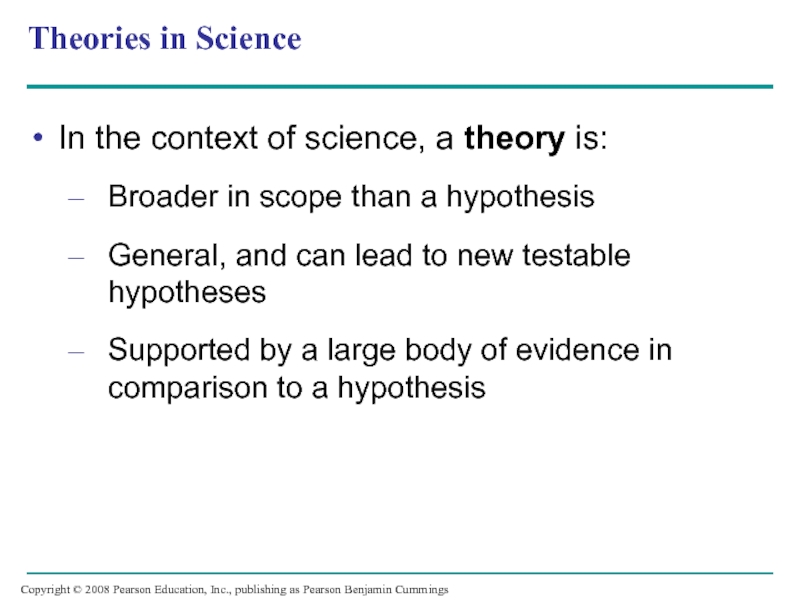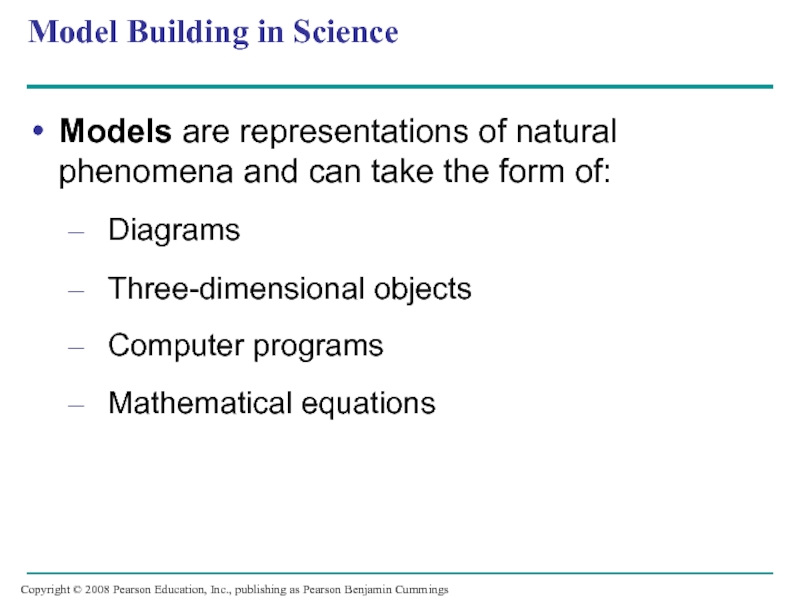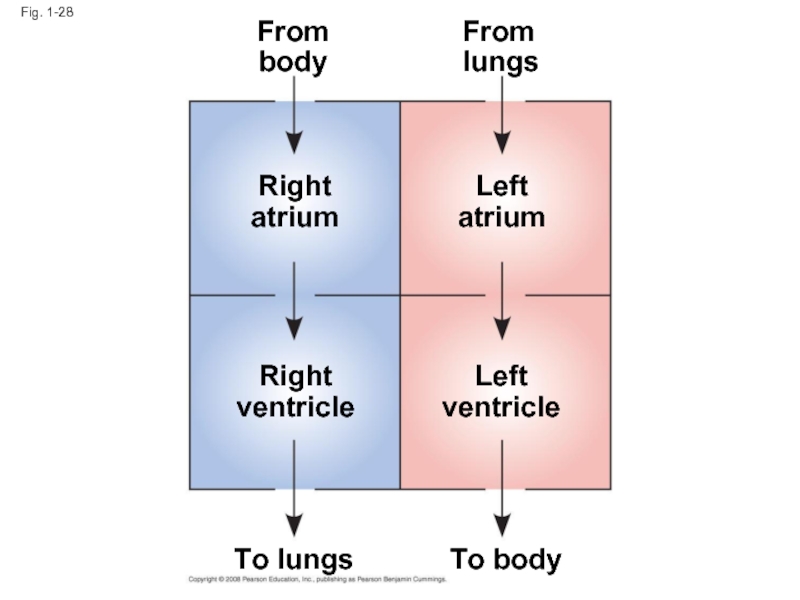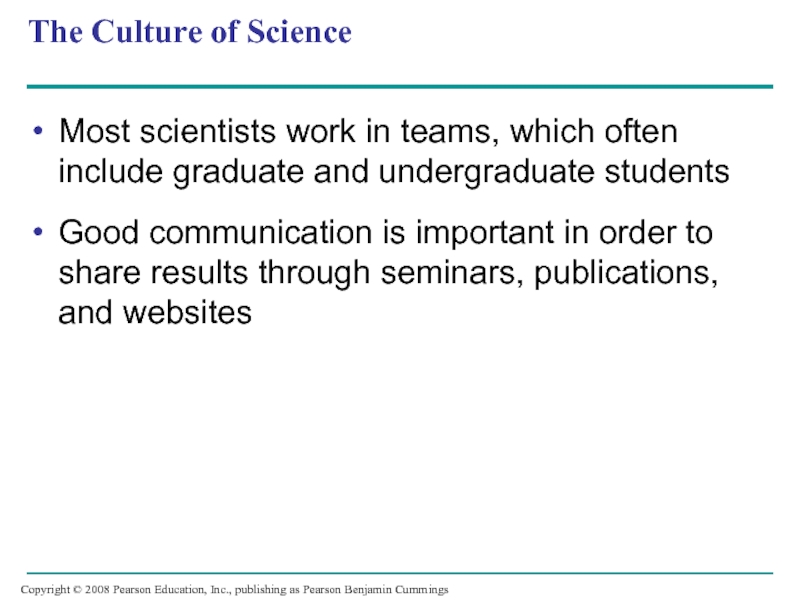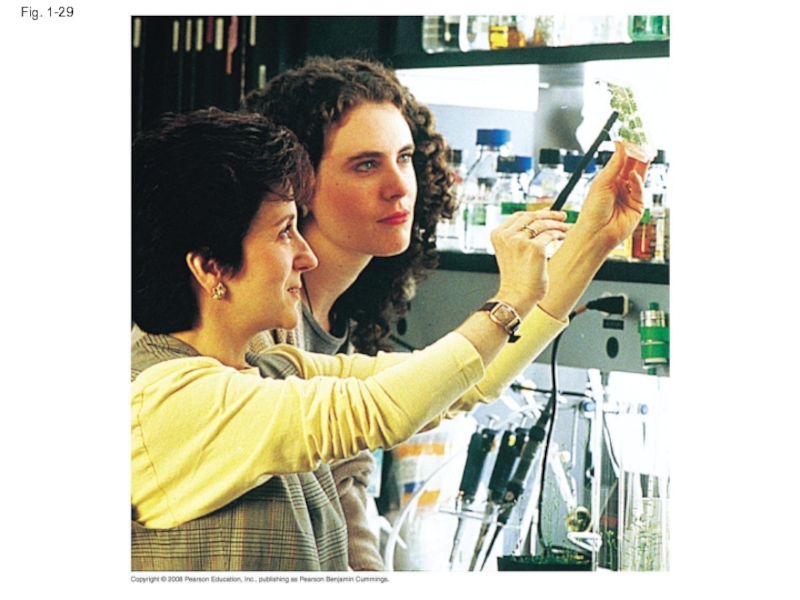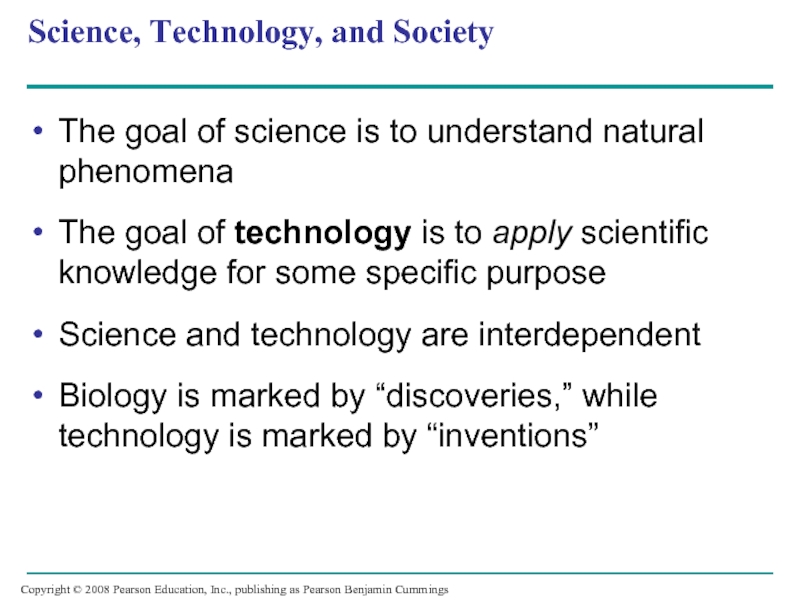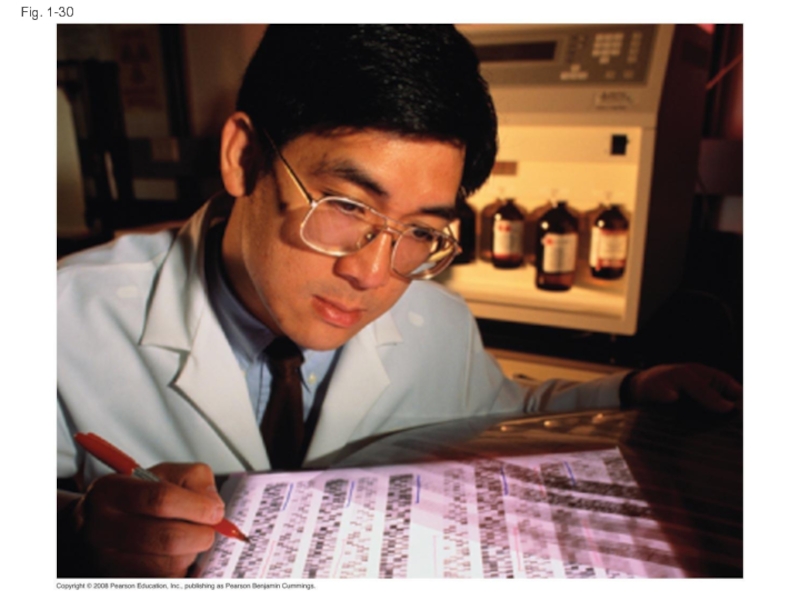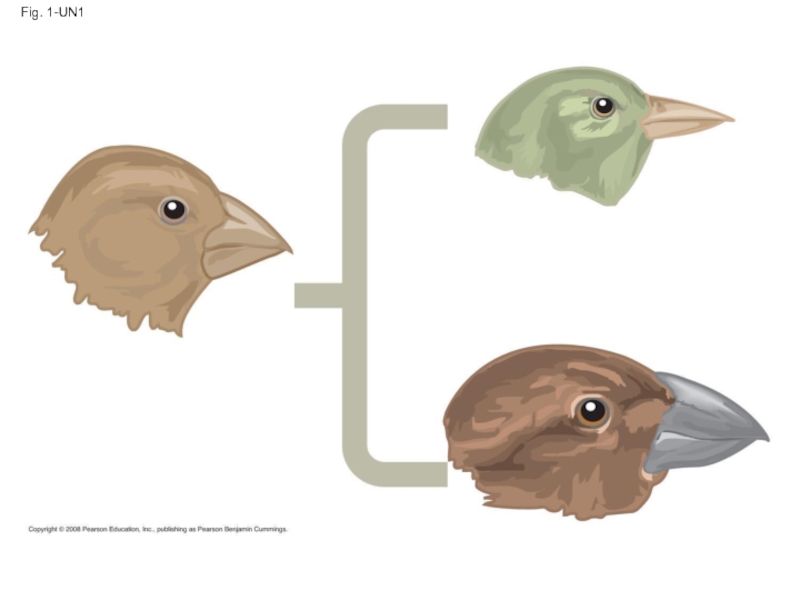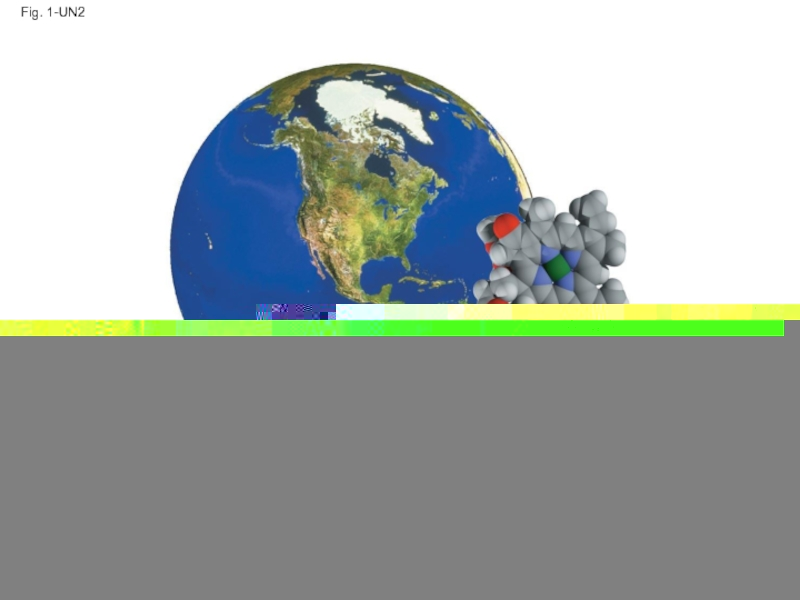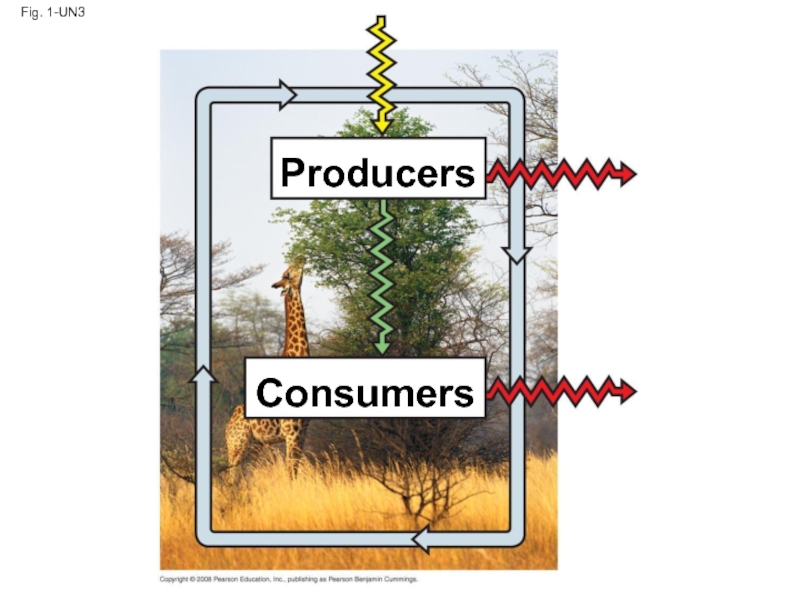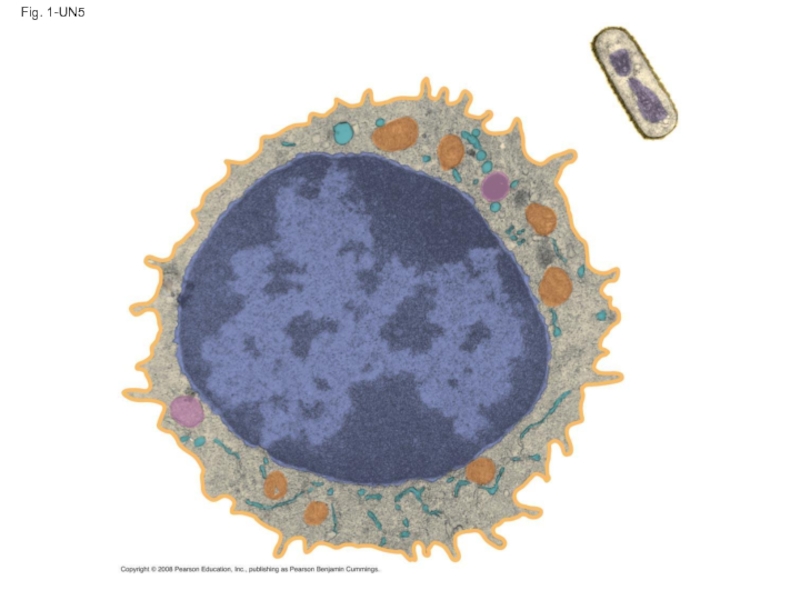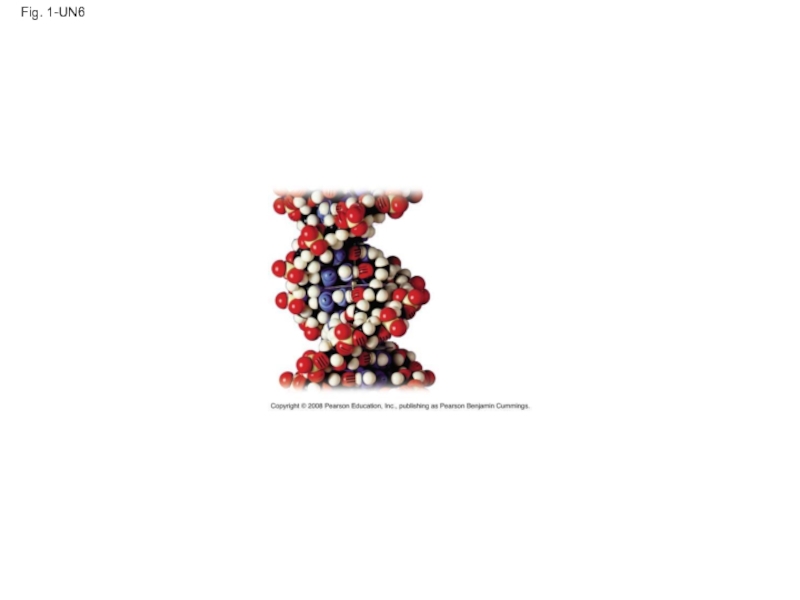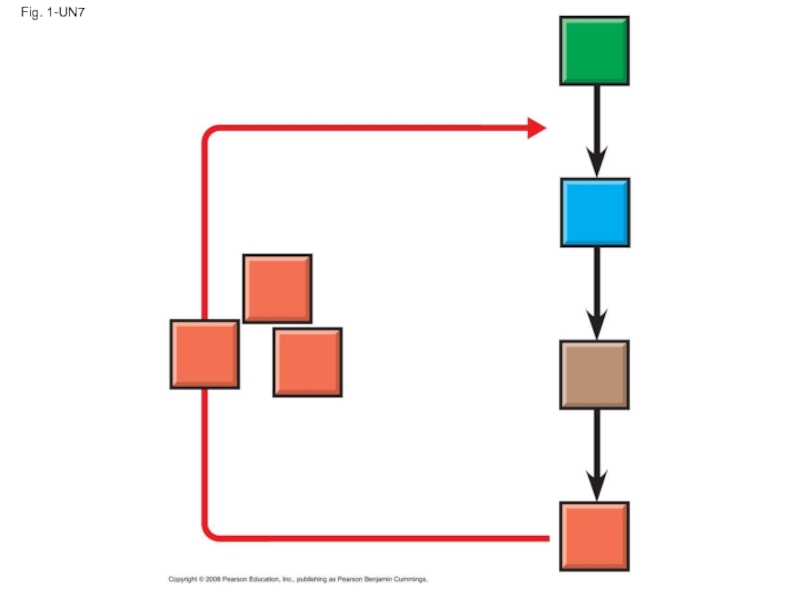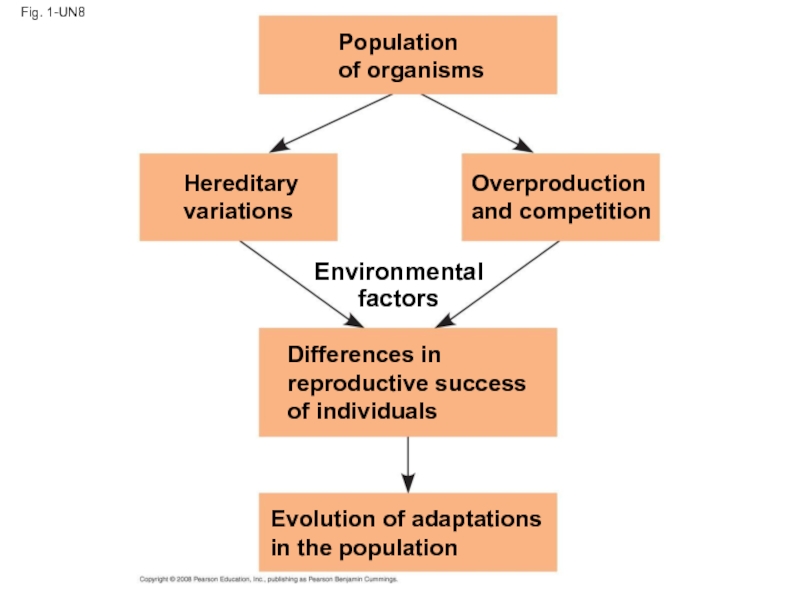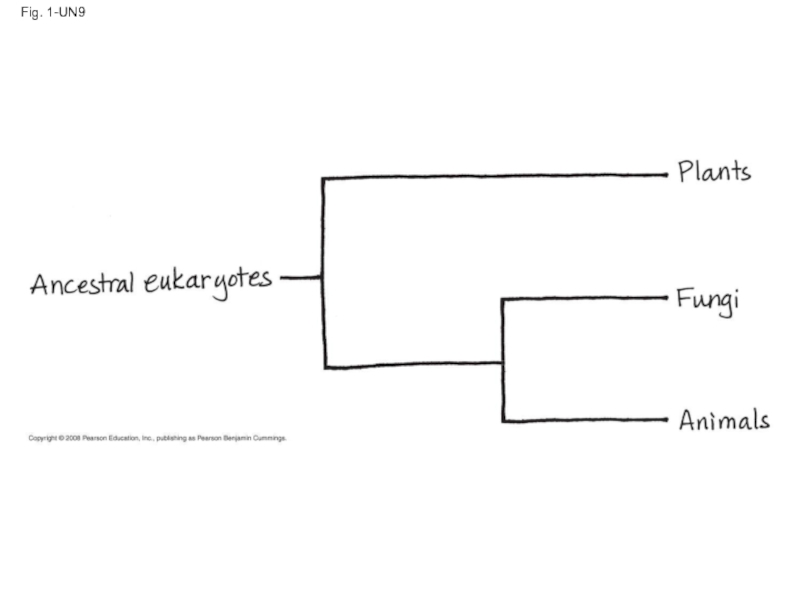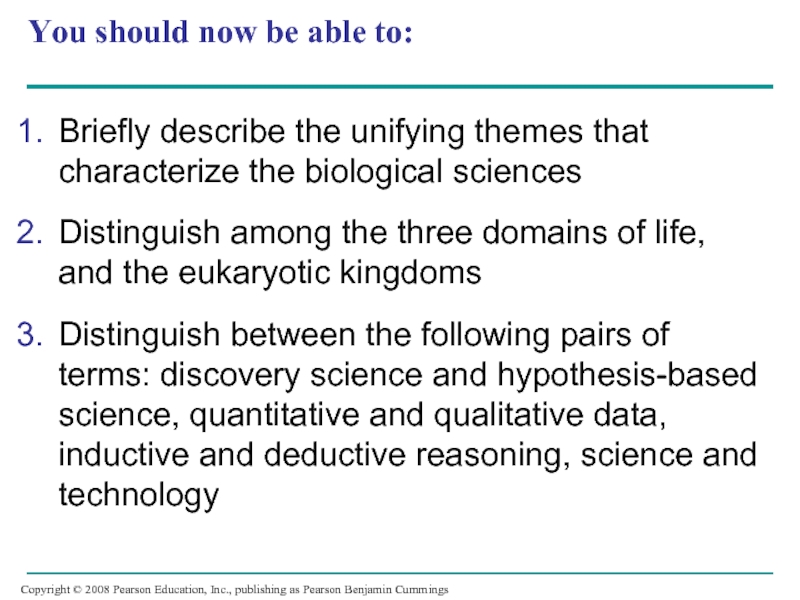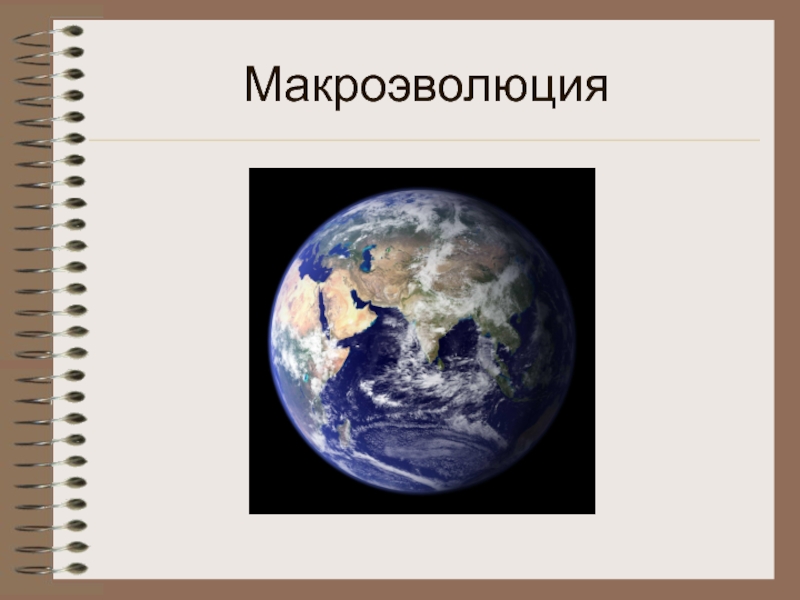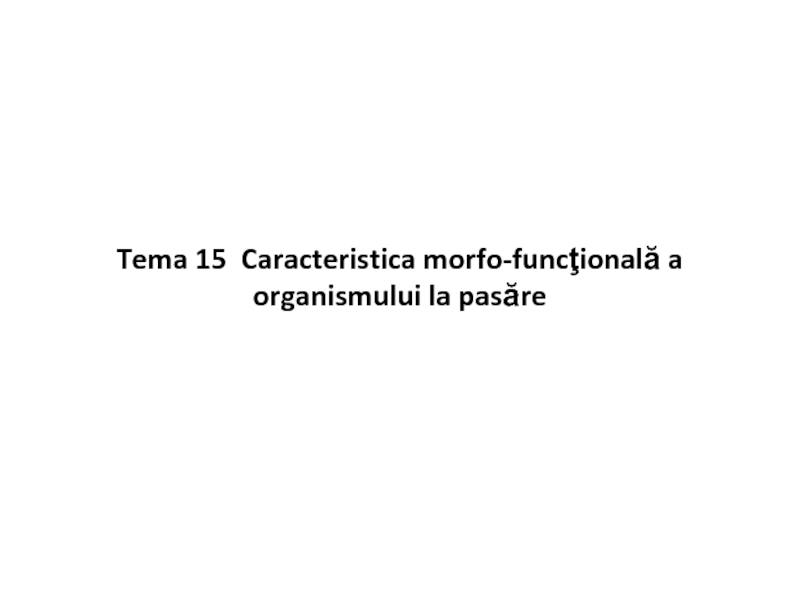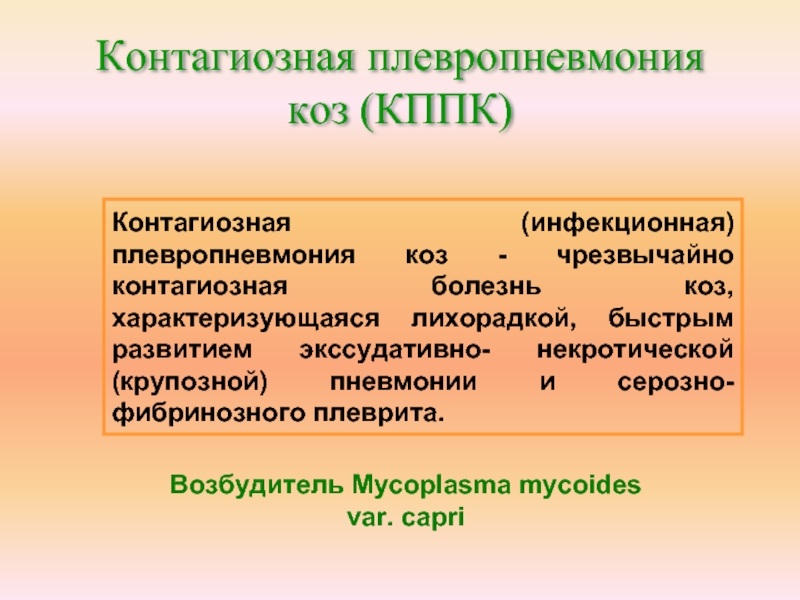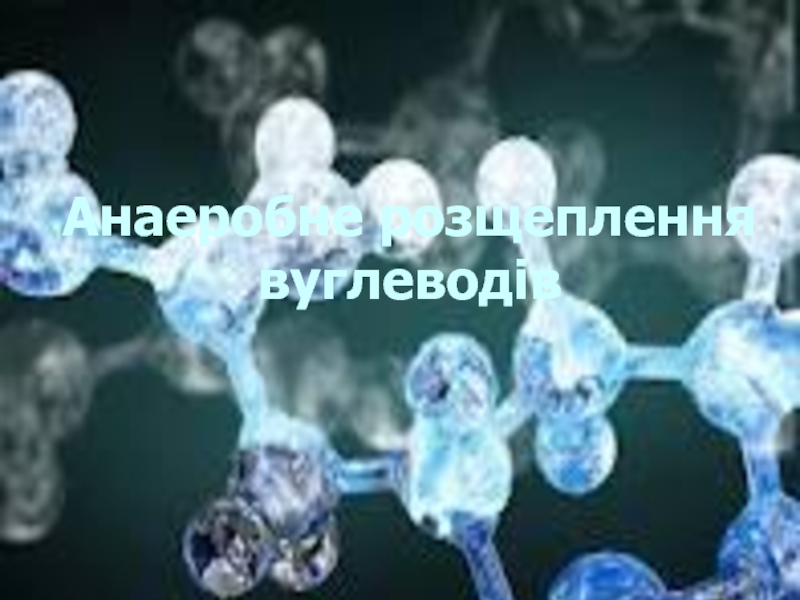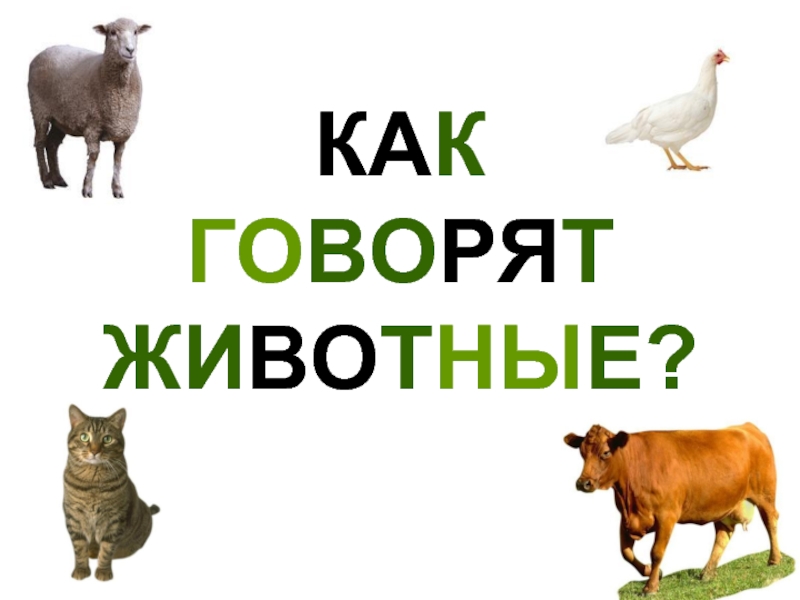- Главная
- Разное
- Дизайн
- Бизнес и предпринимательство
- Аналитика
- Образование
- Развлечения
- Красота и здоровье
- Финансы
- Государство
- Путешествия
- Спорт
- Недвижимость
- Армия
- Графика
- Культурология
- Еда и кулинария
- Лингвистика
- Английский язык
- Астрономия
- Алгебра
- Биология
- География
- Детские презентации
- Информатика
- История
- Литература
- Маркетинг
- Математика
- Медицина
- Менеджмент
- Музыка
- МХК
- Немецкий язык
- ОБЖ
- Обществознание
- Окружающий мир
- Педагогика
- Русский язык
- Технология
- Физика
- Философия
- Химия
- Шаблоны, картинки для презентаций
- Экология
- Экономика
- Юриспруденция
Introduction: Themes in the Study of Life презентация
Содержание
- 1. Introduction: Themes in the Study of Life
- 2. Overview: Inquiring About the World of Life
- 3. Fig. 1-1
- 4. Fig. 1-2
- 5. Life defies a simple, one-sentence definition Life
- 6. Order Evolutionary adaptation Response to the environment
- 7. Fig. 1-3a Order
- 8. Fig. 1-3b Evolutionary adaptation
- 9. Fig. 1-3c Response to the environment
- 10. Fig. 1-3d Reproduction
- 11. Fig. 1-3e Growth and development
- 12. Fig. 1-3f Energy processing
- 13. Fig. 1-3g Regulation
- 14. Concept 1.1: Themes connect the concepts of
- 15. Evolution, the Overarching Theme of Biology Evolution
- 16. Theme: New properties emerge at each level
- 17. Fig. 1-4 The biosphere Communities Populations Organisms
- 18. The biosphere Communities Populations Organisms Ecosystems Fig. 1-4a
- 19. Fig. 1-4b Organs and organ systems Cells
- 20. Fig. 1-4c The biosphere
- 21. Fig. 1-4d Ecosystems
- 22. Fig. 1-4e Communities
- 23. Fig. 1-4f Populations
- 24. Fig. 1-4g Organisms
- 25. Fig. 1-4h Organs and organ systems
- 26. Fig. 1-4i Tissues 50 µm
- 27. Fig. 1-4j Cells Cell 10 µm
- 28. Fig. 1-4k 1 µm Organelles
- 29. Fig. 1-4l Atoms Molecules
- 30. Emergent Properties Emergent properties result from the
- 31. The Power and Limitations of Reductionism Reductionism
- 32. Systems Biology A system is a combination
- 33. Theme: Organisms interact with their environments, exchanging
- 34. Ecosystem Dynamics The dynamics of an ecosystem
- 35. Fig. 1-5 Sunlight Ecosystem Heat Heat Cycling
- 36. Energy Conversion Work requires a source of
- 37. Theme: Structure and function are correlated at
- 38. (a) Wings (c) Neurons (b) Bones Infoldings
- 39. Fig. 1-6a (a) Wings
- 40. Fig. 1-6b (b) Bones
- 41. Fig. 1-6c (c) Neurons 100 µm
- 42. Fig. 1-6d Infoldings of membrane Mitochondrion (d) Mitochondria 0.5 µm
- 43. Theme: Cells are an organism’s basic units
- 44. 25 µm Fig. 1-7
- 45. A eukaryotic cell has membrane-enclosed organelles, the
- 46. 1 µm Organelles Nucleus (contains DNA) Cytoplasm
- 47. Theme: The continuity of life is based
- 48. DNA Structure and Function Each chromosome has
- 49. Nuclei containing DNA Sperm cell Egg cell
- 50. Each DNA molecule is made up of
- 51. Fig. 1-10 Nucleus DNA Cell Nucleotide (a) DNA double helix (b) Single strand of DNA
- 52. Genes control protein production indirectly DNA is
- 53. Systems Biology at the Levels of Cells
- 54. Fig. 1-11
- 55. Fig. 1-12 Outer membrane and cell surface Cytoplasm Nucleus
- 56. Advances in systems biology at the cellular
- 57. Theme: Feedback mechanisms regulate biological systems Feedback
- 58. Fig. 1-13 Negative feedback −
- 59. Fig. 1-13a Excess D blocks a step
- 60. Fig. 1-13b Excess Z stimulates a step
- 61. Concept 1.2: The Core Theme: Evolution accounts
- 62. Organizing the Diversity of Life Approximately 1.8
- 63. Grouping Species: The Basic Idea Taxonomy is
- 64. Fig. 1-14 Species Genus Family Order Class
- 65. The Three Domains of Life The three-domain
- 66. Fig. 1-15 (a) DOMAIN BACTERIA (b) DOMAIN
- 67. Fig. 1-15a (a) DOMAIN BACTERIA
- 68. Fig. 1-15b (b) DOMAIN ARCHAEA
- 69. The domain Eukarya includes three multicellular kingdoms:
- 70. Fig. 1-15c (c) DOMAIN EUKARYA Protists Kingdom Fungi Kingdom Plantae Kingdom Animalia
- 71. Fig. 1-15d Protists
- 72. Fig. 1-15e Kingdom Fungi
- 73. Fig. 1-15f Kingdom Plantae
- 74. Fig. 1-15g Kingdom Animalia
- 75. Unity in the Diversity of Life A
- 76. Fig. 1-16 Cilia of Paramecium Cross section
- 77. Charles Darwin and the Theory of Natural
- 78. Fig. 1-17
- 79. Charles Darwin published On the Origin of
- 80. Fig. 1-18
- 81. Fig. 1-19
- 82. Darwin observed that: Individuals in a population
- 83. Darwin inferred that: Individuals that are best
- 84. Fig. 1-20 Population with varied inherited traits.
- 85. Natural selection is often evident in adaptations
- 86. Fig. 1-21
- 87. The Tree of Life “Unity in diversity”
- 88. Darwin proposed that natural selection could cause
- 89. Fig. 1-22 COMMON ANCESTOR Warbler finches Insect-eaters
- 90. Fig. 1-22a Warbler finches Insect-eaters Seed-eater Bud-eater
- 91. Fig. 1-22b Insect-eaters Tree finches Mangrove finch
- 92. Fig. 1-22c Large cactus ground finch Geospiza
- 93. Video: Albatross Courtship Ritual Video: Blue-footed Boobies
- 94. Concept 1.3: Scientists use two main forms
- 95. Discovery Science Discovery science describes natural structures
- 96. Types of Data Data are recorded observations
- 97. Fig. 1-23
- 98. Induction in Discovery Science Inductive reasoning draws
- 99. Hypothesis-Based Science Observations can lead us to
- 100. The Role of Hypotheses in Inquiry A
- 101. For example, Observation: Your flashlight doesn’t work
- 102. Fig. 1-24 Observations Question Hypothesis #1: Dead
- 103. Fig. 1-24a Observations Question Hypothesis #1: Dead batteries Hypothesis #2: Burnt-out bulb
- 104. Fig. 1-24b Test prediction Hypothesis #1: Dead
- 105. Deduction: The “If…Then” Logic of Hypothesis Based
- 106. A Closer Look at Hypotheses in Scientific
- 107. The Myth of the Scientific Method The
- 108. A Case Study in Scientific Inquiry: Investigating
- 109. This hypothesis was tested with the poisonous
- 110. Fig. 1-25 South Carolina North Carolina Key
- 111. Field Experiments with Artificial Snakes To test
- 112. Fig. 1-26 (a) Artificial kingsnake (b) Brown artificial snake that has been attacked
- 113. Fig. 1-26a (a) Artificial kingsnake
- 114. Fig. 1-26b (b) Brown artificial snake that has been attacked
- 115. After four weeks, the scientists retrieved the
- 116. Fig. 1-27 Artificial kingsnakes Brown artificial snakes
- 117. Designing Controlled Experiments A controlled experiment compares
- 118. Limitations of Science In science, observations and
- 119. Theories in Science In the context of
- 120. Model Building in Science Models are representations
- 121. Fig. 1-28 From body From lungs Right
- 122. The Culture of Science Most scientists work
- 123. Fig. 1-29
- 124. Science, Technology, and Society The goal of
- 125. The combination of science and technology has
- 126. Fig. 1-30
- 127. Fig. 1-UN1
- 128. Fig. 1-UN2
- 129. Fig. 1-UN3 Producers Consumers
- 130. Fig. 1-UN4
- 131. Fig. 1-UN5
- 132. Fig. 1-UN6
- 133. Fig. 1-UN7
- 134. Fig. 1-UN8 Population of organisms Hereditary variations
- 135. Fig. 1-UN9
- 136. You should now be able to: Briefly
Слайд 2Overview: Inquiring About the World of Life
Evolution is the process of
Biology is the scientific study of life
Biologists ask questions such as:
How a single cell develops into an organism
How the human mind works
How living things interact in communities
Copyright © 2008 Pearson Education, Inc., publishing as Pearson Benjamin Cummings
Слайд 5Life defies a simple, one-sentence definition
Life is recognized by what living
Video: Seahorse Camouflage
Copyright © 2008 Pearson Education, Inc., publishing as Pearson Benjamin Cummings
Слайд 6Order
Evolutionary adaptation
Response
to the
environment
Reproduction
Growth and
development
Energy
processing
Regulation
Fig. 1-3
Слайд 14Concept 1.1: Themes connect the concepts of biology
Biology consists of more
Themes help to organize biological information
Copyright © 2008 Pearson Education, Inc., publishing as Pearson Benjamin Cummings
Слайд 15Evolution, the Overarching Theme of Biology
Evolution makes sense of everything we
Organisms living on Earth are modified descendents of common ancestors
Copyright © 2008 Pearson Education, Inc., publishing as Pearson Benjamin Cummings
Слайд 16Theme: New properties emerge at each level in the biological hierarchy
Life
The study of life can be divided into different levels of biological organization
Copyright © 2008 Pearson Education, Inc., publishing as Pearson Benjamin Cummings
Слайд 17Fig. 1-4
The biosphere
Communities
Populations
Organisms
Ecosystems
Organs and organ systems
Cells
Cell
Organelles
Atoms
Molecules
Tissues
10 µm
1 µm
50 µm
Слайд 30Emergent Properties
Emergent properties result from the arrangement and interaction of parts
Emergent properties characterize nonbiological entities as well
For example, a functioning bicycle emerges only when all of the necessary parts connect in the correct way
Copyright © 2008 Pearson Education, Inc., publishing as Pearson Benjamin Cummings
Слайд 31The Power and Limitations of Reductionism
Reductionism is the reduction of complex
For example, the molecular structure of DNA
An understanding of biology balances reductionism with the study of emergent properties
For example, new understanding comes from studying the interactions of DNA with other molecules
Copyright © 2008 Pearson Education, Inc., publishing as Pearson Benjamin Cummings
Слайд 32Systems Biology
A system is a combination of components that function together
Systems
The systems approach poses questions such as:
How does a drug for blood pressure affect other organs?
How does increasing CO2 alter the biosphere?
Copyright © 2008 Pearson Education, Inc., publishing as Pearson Benjamin Cummings
Слайд 33Theme: Organisms interact with their environments, exchanging matter and energy
Every organism
Both organisms and their environments are affected by the interactions between them
For example, a tree takes up water and minerals from the soil and carbon dioxide from the air; the tree releases oxygen to the air and roots help form soil
Copyright © 2008 Pearson Education, Inc., publishing as Pearson Benjamin Cummings
Слайд 34Ecosystem Dynamics
The dynamics of an ecosystem include two major processes:
Cycling of
The flow of energy from sunlight to producers to consumers
Copyright © 2008 Pearson Education, Inc., publishing as Pearson Benjamin Cummings
Слайд 35Fig. 1-5
Sunlight
Ecosystem
Heat
Heat
Cycling
of
chemical
nutrients
Producers
(plants and other photosynthetic
organisms)
Chemical energy
Consumers
(such as animals)
Слайд 36Energy Conversion
Work requires a source of energy
Energy can be stored in
The energy exchange between an organism and its environment often involves energy transformations
Energy flows through an ecosystem, usually entering as light and exiting as heat
Copyright © 2008 Pearson Education, Inc., publishing as Pearson Benjamin Cummings
Слайд 37Theme: Structure and function are correlated at all levels of biological
Structure and function of living organisms are closely related
For example, a leaf is thin and flat, maximizing the capture of light by chloroplasts
Copyright © 2008 Pearson Education, Inc., publishing as Pearson Benjamin Cummings
Слайд 38(a) Wings
(c) Neurons
(b) Bones
Infoldings of
membrane
Mitochondrion
(d) Mitochondria
0.5 µm
100 µm
Fig. 1-6
Слайд 43Theme: Cells are an organism’s basic units of structure and function
The
All cells:
Are enclosed by a membrane
Use DNA as their genetic information
The ability of cells to divide is the basis of all reproduction, growth, and repair of multicellular organisms
Copyright © 2008 Pearson Education, Inc., publishing as Pearson Benjamin Cummings
Слайд 45A eukaryotic cell has membrane-enclosed organelles, the largest of which is
By comparison, a prokaryotic cell is simpler and usually smaller, and does not contain a nucleus or other membrane-enclosed organelles
Bacteria and Archaea are prokaryotic; plants, animals, fungi, and all other forms of life are eukaryotic
Copyright © 2008 Pearson Education, Inc., publishing as Pearson Benjamin Cummings
Слайд 461 µm
Organelles
Nucleus (contains DNA)
Cytoplasm
Membrane
DNA
(no nucleus)
Membrane
Eukaryotic cell
Prokaryotic cell
Fig. 1-8
Слайд 47Theme: The continuity of life is based on heritable information in
Chromosomes contain most of a cell’s genetic material in the form of DNA (deoxyribonucleic acid)
DNA is the substance of genes
Genes are the units of inheritance that transmit information from parents to offspring
Copyright © 2008 Pearson Education, Inc., publishing as Pearson Benjamin Cummings
Слайд 48DNA Structure and Function
Each chromosome has one long DNA molecule with
DNA is inherited by offspring from their parents
DNA controls the development and maintenance of organisms
Copyright © 2008 Pearson Education, Inc., publishing as Pearson Benjamin Cummings
Слайд 49Nuclei
containing
DNA
Sperm cell
Egg cell
Fertilized egg
with DNA from
both parents
Embryo’s cells with
copies of inherited
Offspring with traits
inherited from
both parents
Fig. 1-9
Слайд 50Each DNA molecule is made up of two long chains arranged
Each link of a chain is one of four kinds of chemical building blocks called nucleotides
Copyright © 2008 Pearson Education, Inc., publishing as Pearson Benjamin Cummings
Слайд 52Genes control protein production indirectly
DNA is transcribed into RNA then translated
An organism’s genome is its entire set of genetic instructions
Copyright © 2008 Pearson Education, Inc., publishing as Pearson Benjamin Cummings
Слайд 53Systems Biology at the Levels of Cells and Molecules
The human genome
Knowledge of a cell’s genes and proteins can be integrated using a systems approach
Copyright © 2008 Pearson Education, Inc., publishing as Pearson Benjamin Cummings
Слайд 56Advances in systems biology at the cellular and molecular level depend
“High-throughput” technology, which yields enormous amounts of data
Bioinformatics, which is the use of computational tools to process a large volume of data
Interdisciplinary research teams
Copyright © 2008 Pearson Education, Inc., publishing as Pearson Benjamin Cummings
Слайд 57Theme: Feedback mechanisms regulate biological systems
Feedback mechanisms allow biological processes to
Negative feedback means that as more of a product accumulates, the process that creates it slows and less of the product is produced
Positive feedback means that as more of a product accumulates, the process that creates it speeds up and more of the product is produced
Animation: Negative Feedback
Animation: Positive Feedback
Copyright © 2008 Pearson Education, Inc., publishing as Pearson Benjamin Cummings
Слайд 58
Fig. 1-13
Negative
feedback
−
Excess D
blocks a step
D
D
D
A
B
C
Enzyme 1
Enzyme 2
Enzyme 3
D
(a) Negative feedback
W
Enzyme 4
X
Positive
feedback
Enzyme
Y
+
Enzyme 6
Excess Z
stimulates a
step
Z
Z
Z
Z
(b) Positive feedback
Слайд 59Fig. 1-13a
Excess D
blocks a step
(a) Negative feedback
Negative
feedback
D
D
D
D
C
B
A
Enzyme 1
Enzyme 2
Enzyme 3
–
Слайд 60Fig. 1-13b
Excess Z
stimulates a step
(b) Positive feedback
Z
Positive
feedback
Enzyme 4
Enzyme 5
Enzyme 6
Z
Z
Z
Y
X
W
+
Слайд 61Concept 1.2: The Core Theme: Evolution accounts for the unity and
“Nothing in biology makes sense except in the light of evolution”—Theodosius Dobzhansky
Evolution unifies biology at different scales of size throughout the history of life on Earth
Copyright © 2008 Pearson Education, Inc., publishing as Pearson Benjamin Cummings
Слайд 62Organizing the Diversity of Life
Approximately 1.8 million species have been identified
Estimates of the total number of species that actually exist range from 10 million to over 100 million
Copyright © 2008 Pearson Education, Inc., publishing as Pearson Benjamin Cummings
Слайд 63Grouping Species: The Basic Idea
Taxonomy is the branch of biology that
Domains, followed by kingdoms, are the broadest units of classification
Copyright © 2008 Pearson Education, Inc., publishing as Pearson Benjamin Cummings
Слайд 64Fig. 1-14
Species
Genus
Family
Order
Class
Phylum
Kingdom
Domain
Ursus americanus
(American black bear)
Ursus
Ursidae
Carnivora
Mammalia
Chordata
Animalia
Eukarya
Слайд 65The Three Domains of Life
The three-domain system is currently used, and
Domain Bacteria and domain Archaea comprise the prokaryotes
Domain Eukarya includes all eukaryotic organisms
Copyright © 2008 Pearson Education, Inc., publishing as Pearson Benjamin Cummings
Слайд 66Fig. 1-15
(a) DOMAIN BACTERIA
(b) DOMAIN ARCHAEA
(c) DOMAIN EUKARYA
Protists
Kingdom Fungi
Kingdom
Plantae
Kingdom Animalia
Слайд 69The domain Eukarya includes three multicellular kingdoms:
Plantae
Fungi
Animalia
Other eukaryotic organisms were formerly
Copyright © 2008 Pearson Education, Inc., publishing as Pearson Benjamin Cummings
Слайд 75Unity in the Diversity of Life
A striking unity underlies the diversity
DNA is the universal genetic language common to all organisms
Unity is evident in many features of cell structure
Copyright © 2008 Pearson Education, Inc., publishing as Pearson Benjamin Cummings
Слайд 76Fig. 1-16
Cilia of
Paramecium
Cross section of a cilium, as viewed
with an electron
Cilia of
windpipe
cells
15 µm
5 µm
0.1 µm
Слайд 77Charles Darwin and the Theory of Natural Selection
Fossils and other evidence
Copyright © 2008 Pearson Education, Inc., publishing as Pearson Benjamin Cummings
Слайд 79Charles Darwin published On the Origin of Species by Means of
Darwin made two main points:
Species showed evidence of “descent with modification” from common ancestors
Natural selection is the mechanism behind “descent with modification”
Darwin’s theory explained the duality of unity and diversity
Copyright © 2008 Pearson Education, Inc., publishing as Pearson Benjamin Cummings
Слайд 82Darwin observed that:
Individuals in a population have traits that vary
Many of
More offspring are produced than survive
Competition is inevitable
Species generally suit their environment
Copyright © 2008 Pearson Education, Inc., publishing as Pearson Benjamin Cummings
Слайд 83Darwin inferred that:
Individuals that are best suited to their environment are
Over time, more individuals in a population will have the advantageous traits
In other words, the natural environment “selects” for beneficial traits
Copyright © 2008 Pearson Education, Inc., publishing as Pearson Benjamin Cummings
Слайд 84Fig. 1-20
Population
with varied
inherited traits.
Elimination
of individuals
with certain
traits.
Reproduction
of survivors.
Increasing
frequency
of traits that enhance survival
4
3
2
1
Слайд 85Natural selection is often evident in adaptations of organisms to their
Bat wings are an example of adaptation
Video: Soaring Hawk
Copyright © 2008 Pearson Education, Inc., publishing as Pearson Benjamin Cummings
Слайд 87The Tree of Life
“Unity in diversity” arises from “descent with modification”
For
Fossils provide additional evidence of anatomical unity from descent with modification
Copyright © 2008 Pearson Education, Inc., publishing as Pearson Benjamin Cummings
Слайд 88Darwin proposed that natural selection could cause an ancestral species to
For example, the finch species of the Galápagos Islands
Evolutionary relationships are often illustrated with tree-like diagrams that show ancestors and their descendents
Copyright © 2008 Pearson Education, Inc., publishing as Pearson Benjamin Cummings
Слайд 89Fig. 1-22
COMMON
ANCESTOR
Warbler finches
Insect-eaters
Seed-eater
Bud-eater
Insect-eaters
Tree finches
Green warbler finch Certhidea olivacea
Gray warbler finch Certhidea
Sharp-beaked
ground finch Geospiza difficilis
Vegetarian finch Platyspiza crassirostris
Mangrove finch Cactospiza heliobates
Woodpecker finch Cactospiza pallida
Medium tree finch Camarhynchus pauper
Large tree finch Camarhynchus psittacula
Small tree finch Camarhynchus parvulus
Large cactus
ground finch
Geospiza conirostris
Cactus ground finch
Geospiza scandens
Small ground finch
Geospiza fuliginosa
Medium ground finch
Geospiza fortis
Large ground finch
Geospiza magnirostris
Ground finches
Seed-eaters
Cactus-flower-eaters
Слайд 90Fig. 1-22a
Warbler finches
Insect-eaters
Seed-eater
Bud-eater
Green warbler finch Certhidea olivacea
Gray warbler finch Certhidea fusca
Sharp-beaked
ground
Vegetarian finch Platyspiza crassirostris
Слайд 91Fig. 1-22b
Insect-eaters
Tree finches
Mangrove finch Cactospiza heliobates
Woodpecker finch Cactospiza pallida
Medium tree finch
Large tree finch Camarhynchus psittacula
Small tree finch Camarhynchus parvulus
Слайд 92Fig. 1-22c
Large cactus
ground finch
Geospiza conirostris
Cactus ground finch
Geospiza scandens
Small ground finch
Geospiza fuliginosa
Medium
Geospiza fortis
Large ground finch
Geospiza magnirostris
Ground finches
Seed-eaters
Cactus-flower-eaters
Слайд 93Video: Albatross Courtship Ritual
Video: Blue-footed Boobies Courtship Ritual
Video: Galápagos Marine Iguana
Video:
Video: Galápagos Islands Overview
Video: Galápagos Tortoise
Copyright © 2008 Pearson Education, Inc., publishing as Pearson Benjamin Cummings
Слайд 94Concept 1.3: Scientists use two main forms of inquiry in their
The word Science is derived from Latin and means “to know”
Inquiry is the search for information and explanation
There are two main types of scientific inquiry: discovery science and hypothesis-based science
Copyright © 2008 Pearson Education, Inc., publishing as Pearson Benjamin Cummings
Слайд 95Discovery Science
Discovery science describes natural structures and processes
This approach is based
Copyright © 2008 Pearson Education, Inc., publishing as Pearson Benjamin Cummings
Слайд 96Types of Data
Data are recorded observations or items of information
Data fall
Qualitative, or descriptions rather than measurements
Quantitative, or recorded measurements, which are sometimes organized into tables and graphs
Copyright © 2008 Pearson Education, Inc., publishing as Pearson Benjamin Cummings
Слайд 98Induction in Discovery Science
Inductive reasoning draws conclusions through the logical process
Repeat specific observations can lead to important generalizations
For example, “the sun always rises in the east”
Copyright © 2008 Pearson Education, Inc., publishing as Pearson Benjamin Cummings
Слайд 99Hypothesis-Based Science
Observations can lead us to ask questions and propose hypothetical
Copyright © 2008 Pearson Education, Inc., publishing as Pearson Benjamin Cummings
Слайд 100The Role of Hypotheses in Inquiry
A hypothesis is a tentative answer
A scientific hypothesis leads to predictions that can be tested by observation or experimentation
Copyright © 2008 Pearson Education, Inc., publishing as Pearson Benjamin Cummings
Слайд 101For example,
Observation: Your flashlight doesn’t work
Question: Why doesn’t your flashlight work?
Hypothesis
Hypothesis 2: The bulb is burnt out
Both these hypotheses are testable
Copyright © 2008 Pearson Education, Inc., publishing as Pearson Benjamin Cummings
Слайд 102Fig. 1-24
Observations
Question
Hypothesis #1:
Dead batteries
Hypothesis #2:
Burnt-out bulb
Prediction:
Replacing batteries
will fix problem
Prediction:
Replacing bulb
will fix
Test prediction
Test prediction
Test falsifies hypothesis
Test does not falsify hypothesis
Слайд 104Fig. 1-24b
Test prediction
Hypothesis #1:
Dead batteries
Hypothesis #2:
Burnt-out bulb
Test prediction
Prediction:
Replacing batteries
will fix problem
Prediction:
Replacing
will fix problem
Test falsifies hypothesis
Test does not falsify hypothesis
Слайд 105Deduction: The “If…Then” Logic of Hypothesis Based Science
Deductive reasoning uses general
For example, if organisms are made of cells (premise 1), and humans are organisms (premise 2), then humans are composed of cells (deductive prediction)
Copyright © 2008 Pearson Education, Inc., publishing as Pearson Benjamin Cummings
Слайд 106A Closer Look at Hypotheses in Scientific Inquiry
A hypothesis must be
Hypothesis-based science often makes use of two or more alternative hypotheses
Failure to falsify a hypothesis does not prove that hypothesis
For example, you replace your flashlight bulb, and it now works; this supports the hypothesis that your bulb was burnt out, but does not prove it (perhaps the first bulb was inserted incorrectly)
Copyright © 2008 Pearson Education, Inc., publishing as Pearson Benjamin Cummings
Слайд 107The Myth of the Scientific Method
The scientific method is an idealized
Hypothesis-based science is based on the “textbook” scientific method but rarely follows all the ordered steps
Discovery science has made important contributions with very little dependence on the so-called scientific method
Copyright © 2008 Pearson Education, Inc., publishing as Pearson Benjamin Cummings
Слайд 108A Case Study in Scientific Inquiry: Investigating Mimicry in Snake Populations
Many
Mimics are harmless species that closely resemble poisonous species
Henry Bates hypothesized that this mimicry evolved in harmless species as an evolutionary adaptation that reduces their chances of being eaten
Copyright © 2008 Pearson Education, Inc., publishing as Pearson Benjamin Cummings
Слайд 109This hypothesis was tested with the poisonous eastern coral snake and
Both species live in the Carolinas, but the kingsnake is also found in regions without poisonous coral snakes
If predators inherit an avoidance of the coral snake’s coloration, then the colorful kingsnake will be attacked less often in the regions where coral snakes are present
Copyright © 2008 Pearson Education, Inc., publishing as Pearson Benjamin Cummings
Слайд 110Fig. 1-25
South Carolina
North Carolina
Key
Scarlet kingsnake (nonpoisonous)
Scarlet kingsnake (nonpoisonous)
Eastern coral snake (poisonous)
Range
kingsnake only
Overlapping ranges of
scarlet kingsnake and
eastern coral snake
Слайд 111Field Experiments with Artificial Snakes
To test this mimicry hypothesis, researchers made
An experimental group resembling kingsnakes
A control group resembling plain brown snakes
Equal numbers of both types were placed at field sites, including areas without poisonous coral snakes
Copyright © 2008 Pearson Education, Inc., publishing as Pearson Benjamin Cummings
Слайд 115After four weeks, the scientists retrieved the artificial snakes and counted
The data fit the predictions of the mimicry hypothesis: the ringed snakes were attacked less frequently in the geographic region where coral snakes were found
Copyright © 2008 Pearson Education, Inc., publishing as Pearson Benjamin Cummings
Слайд 116Fig. 1-27
Artificial kingsnakes
Brown
artificial snakes
83%
84%
17%
16%
Coral snakes
absent
Coral snakes
present
Percent of total attacks
on artificial snakes
100
80
60
40
20
0
RESULTS
Слайд 117Designing Controlled Experiments
A controlled experiment compares an experimental group (the artificial
Ideally, only the variable of interest (the color pattern of the artificial snakes) differs between the control and experimental groups
A controlled experiment means that control groups are used to cancel the effects of unwanted variables
A controlled experiment does not mean that all unwanted variables are kept constant
Copyright © 2008 Pearson Education, Inc., publishing as Pearson Benjamin Cummings
Слайд 118Limitations of Science
In science, observations and experimental results must be repeatable
Science
Copyright © 2008 Pearson Education, Inc., publishing as Pearson Benjamin Cummings
Слайд 119Theories in Science
In the context of science, a theory is:
Broader in
General, and can lead to new testable hypotheses
Supported by a large body of evidence in comparison to a hypothesis
Copyright © 2008 Pearson Education, Inc., publishing as Pearson Benjamin Cummings
Слайд 120Model Building in Science
Models are representations of natural phenomena and can
Diagrams
Three-dimensional objects
Computer programs
Mathematical equations
Copyright © 2008 Pearson Education, Inc., publishing as Pearson Benjamin Cummings
Слайд 122The Culture of Science
Most scientists work in teams, which often include
Good communication is important in order to share results through seminars, publications, and websites
Copyright © 2008 Pearson Education, Inc., publishing as Pearson Benjamin Cummings
Слайд 124Science, Technology, and Society
The goal of science is to understand natural
The goal of technology is to apply scientific knowledge for some specific purpose
Science and technology are interdependent
Biology is marked by “discoveries,” while technology is marked by “inventions”
Copyright © 2008 Pearson Education, Inc., publishing as Pearson Benjamin Cummings
Слайд 125The combination of science and technology has dramatic effects on society
For
Ethical issues can arise from new technology, but have as much to do with politics, economics, and cultural values as with science and technology
Copyright © 2008 Pearson Education, Inc., publishing as Pearson Benjamin Cummings
Слайд 134Fig. 1-UN8
Population
of organisms
Hereditary
variations
Overproduction
and competition
Differences in
reproductive success
of individuals
Evolution of adaptations
in the population
Environmental
factors
Слайд 136You should now be able to:
Briefly describe the unifying themes that
Distinguish among the three domains of life, and the eukaryotic kingdoms
Distinguish between the following pairs of terms: discovery science and hypothesis-based science, quantitative and qualitative data, inductive and deductive reasoning, science and technology
Copyright © 2008 Pearson Education, Inc., publishing as Pearson Benjamin Cummings
